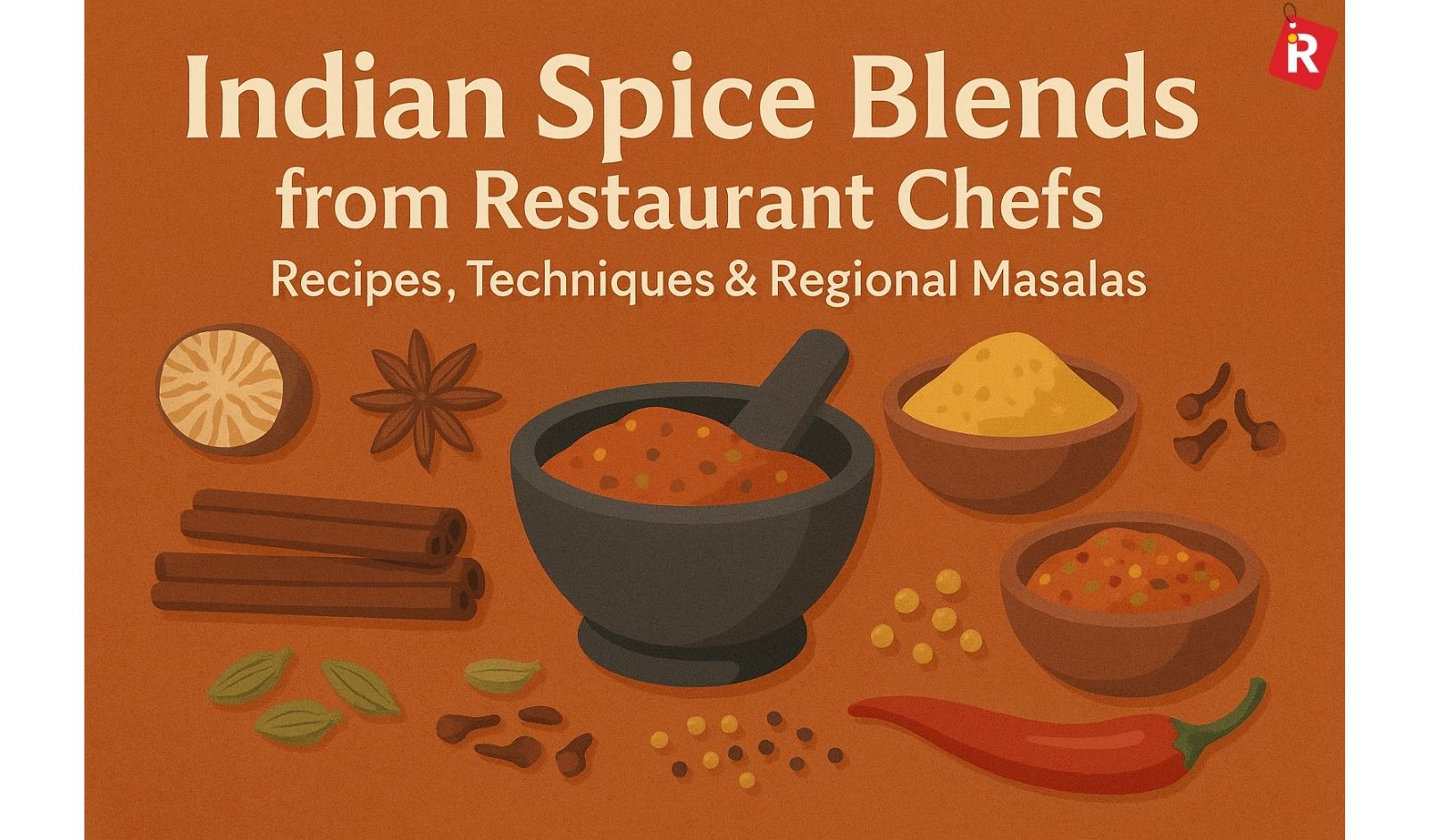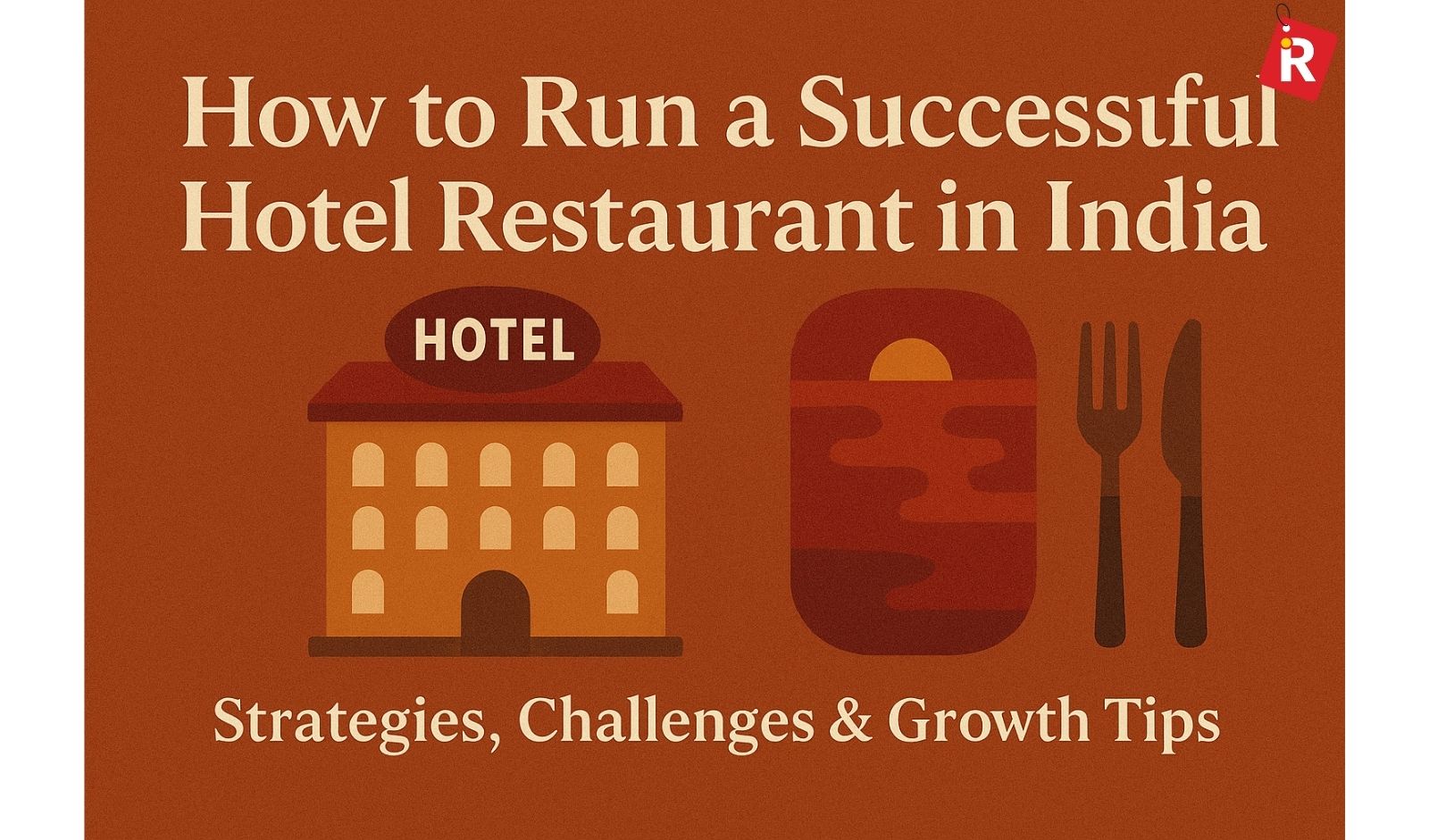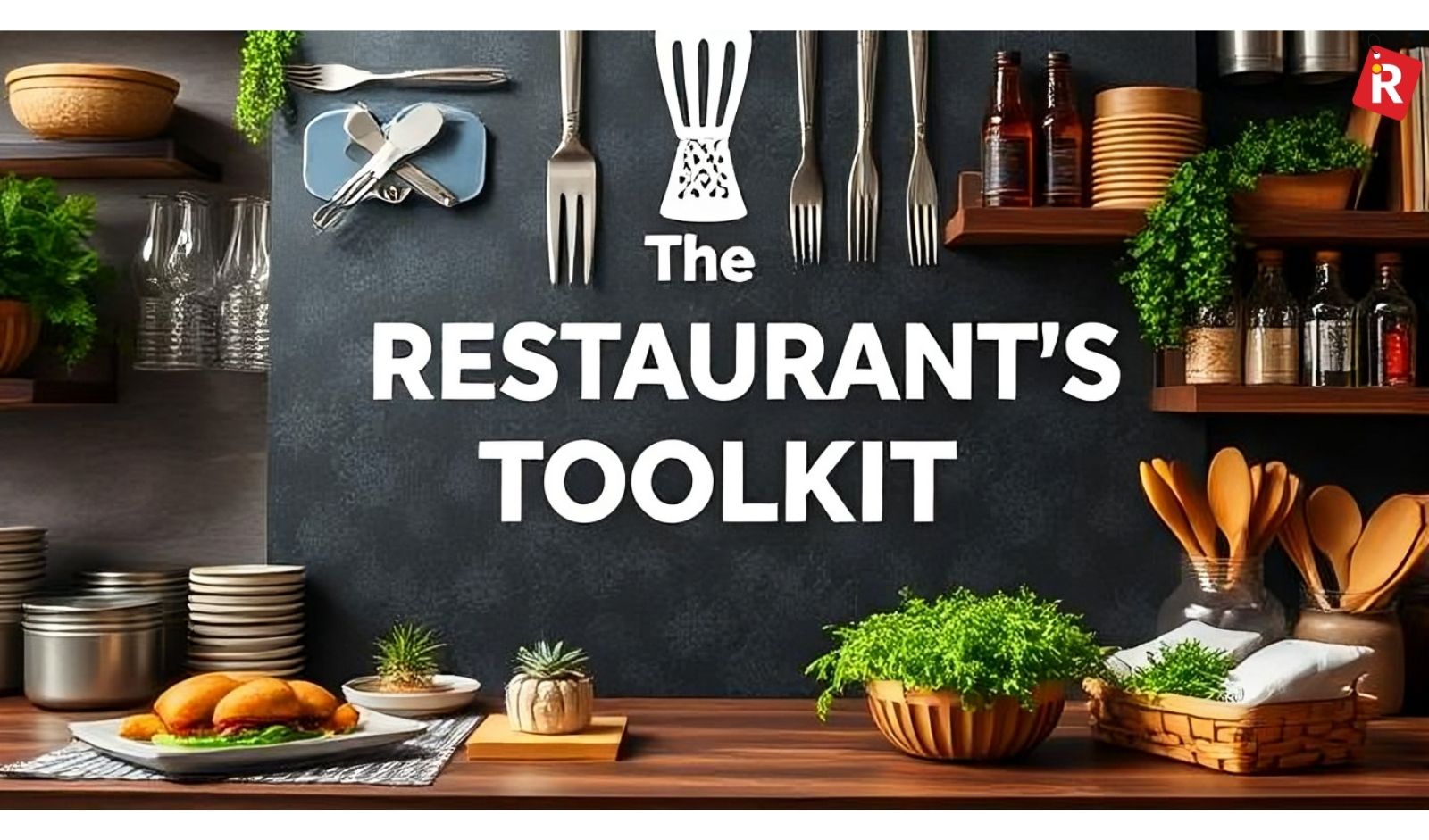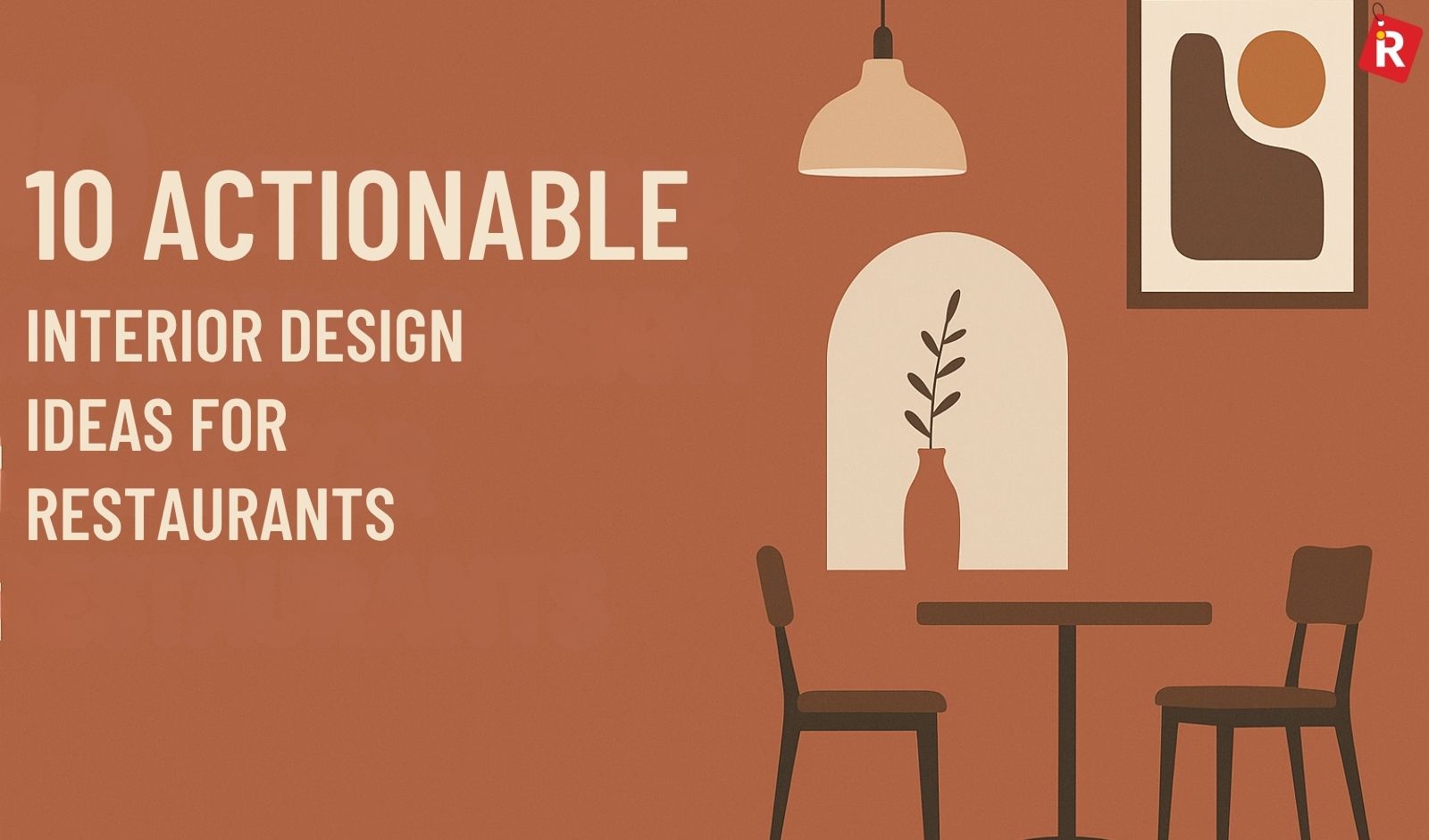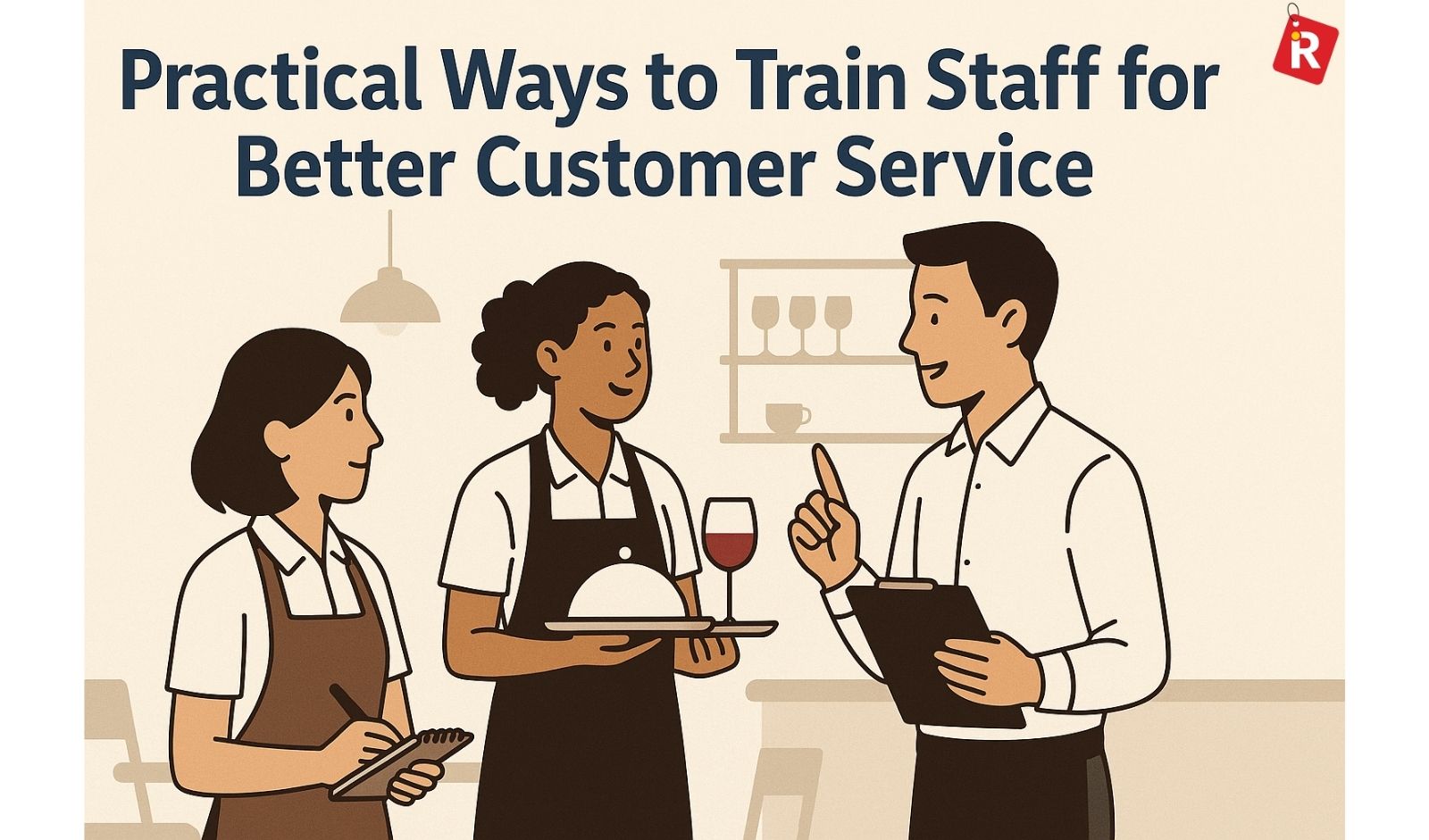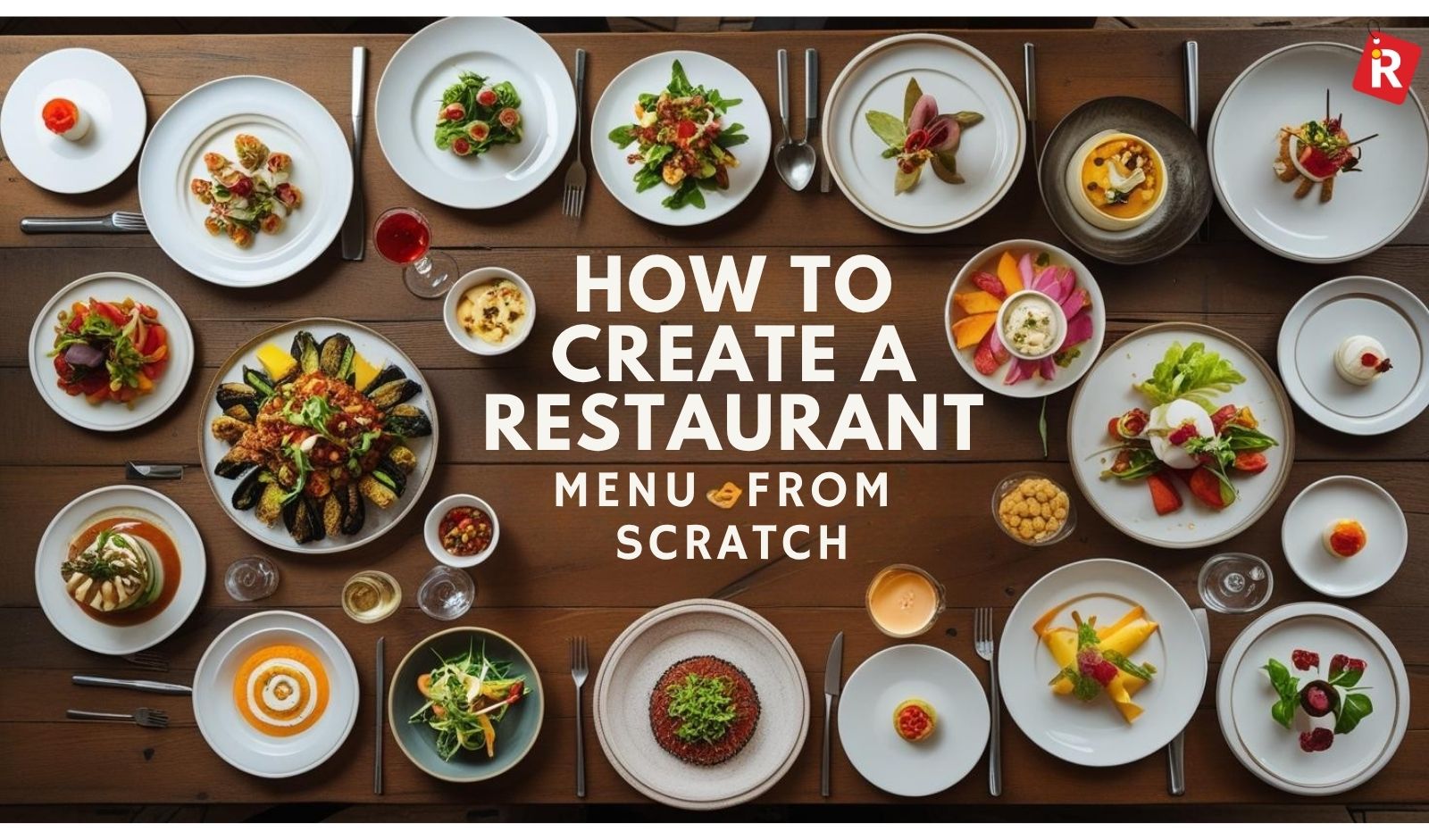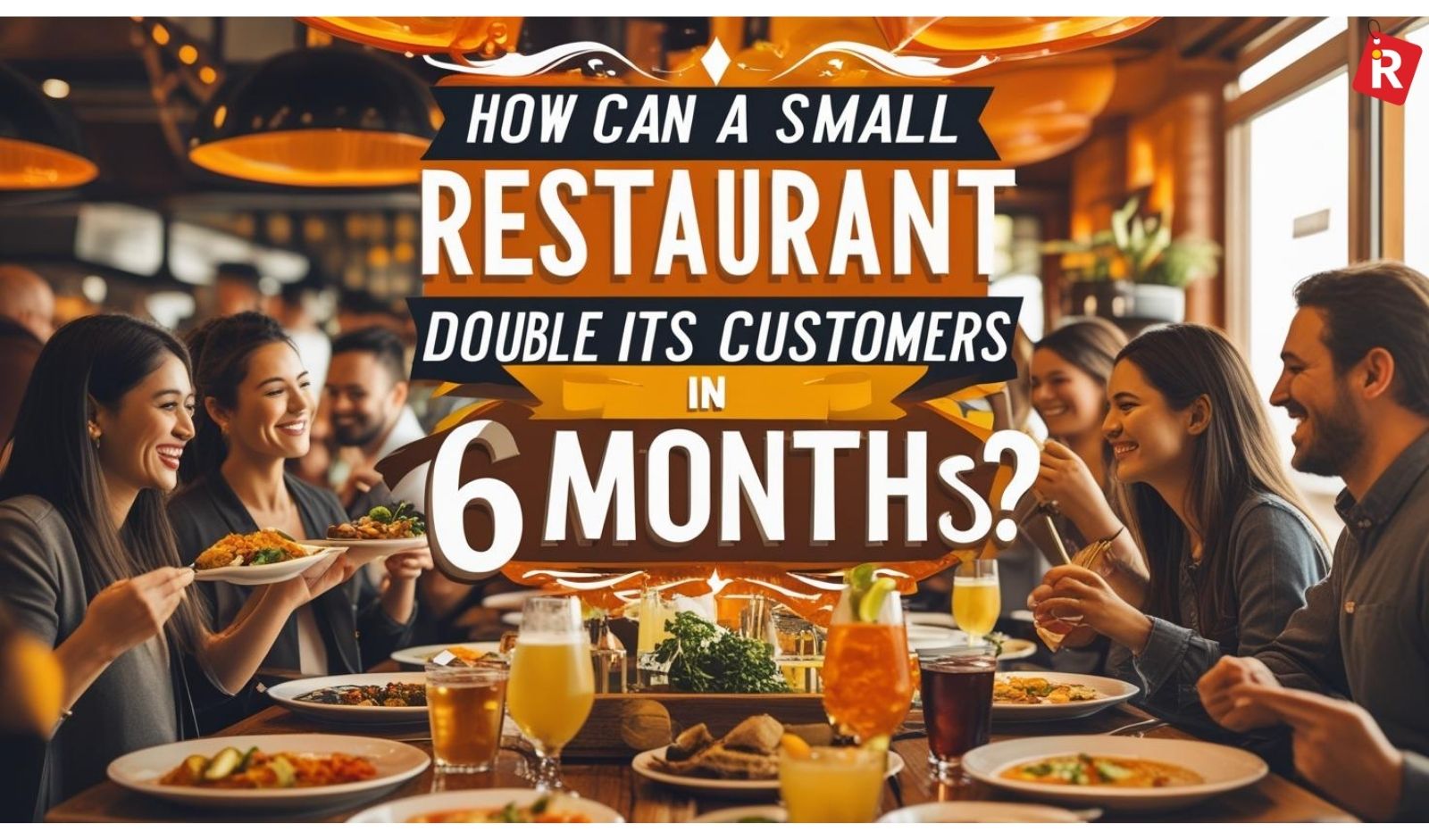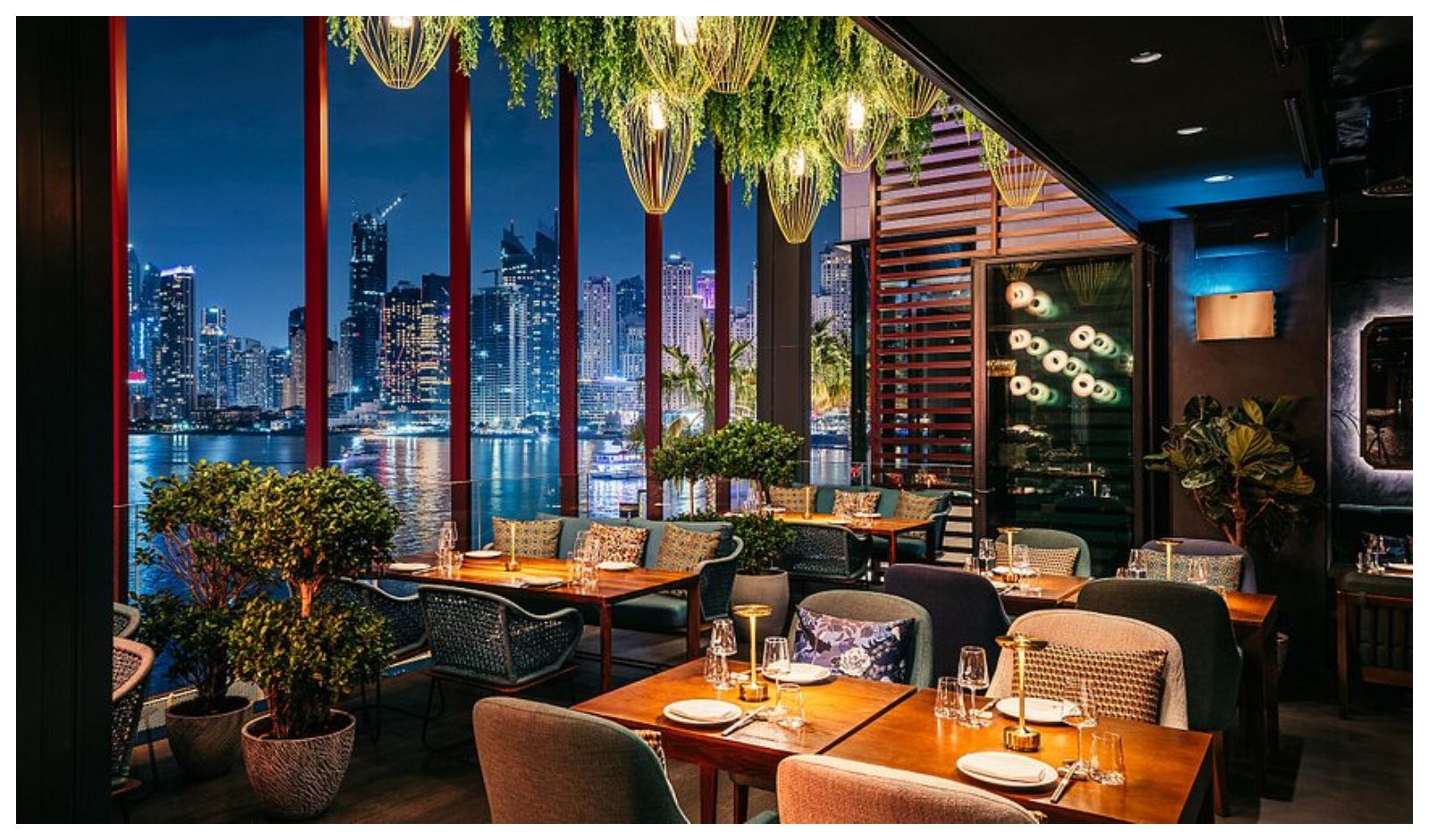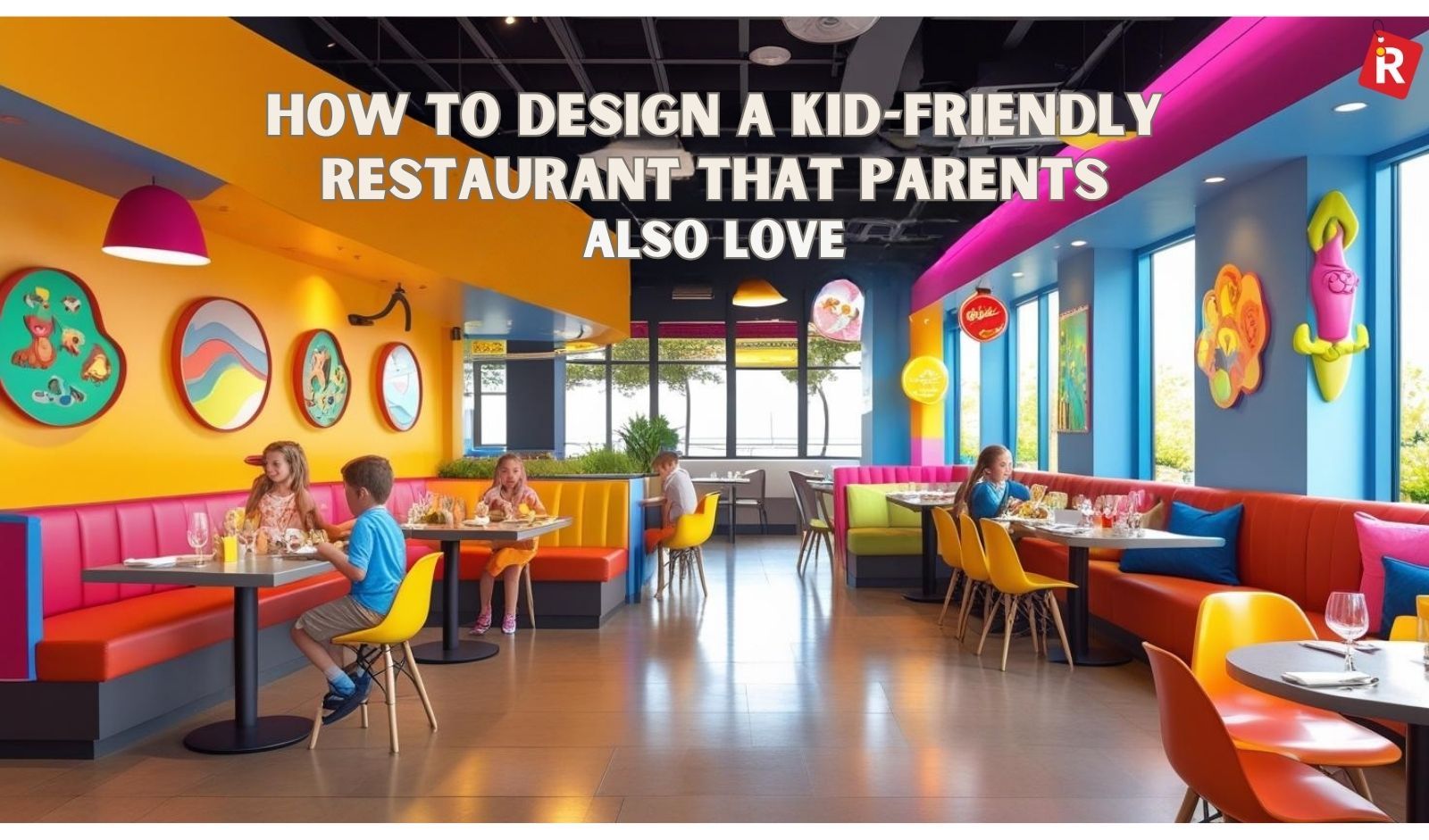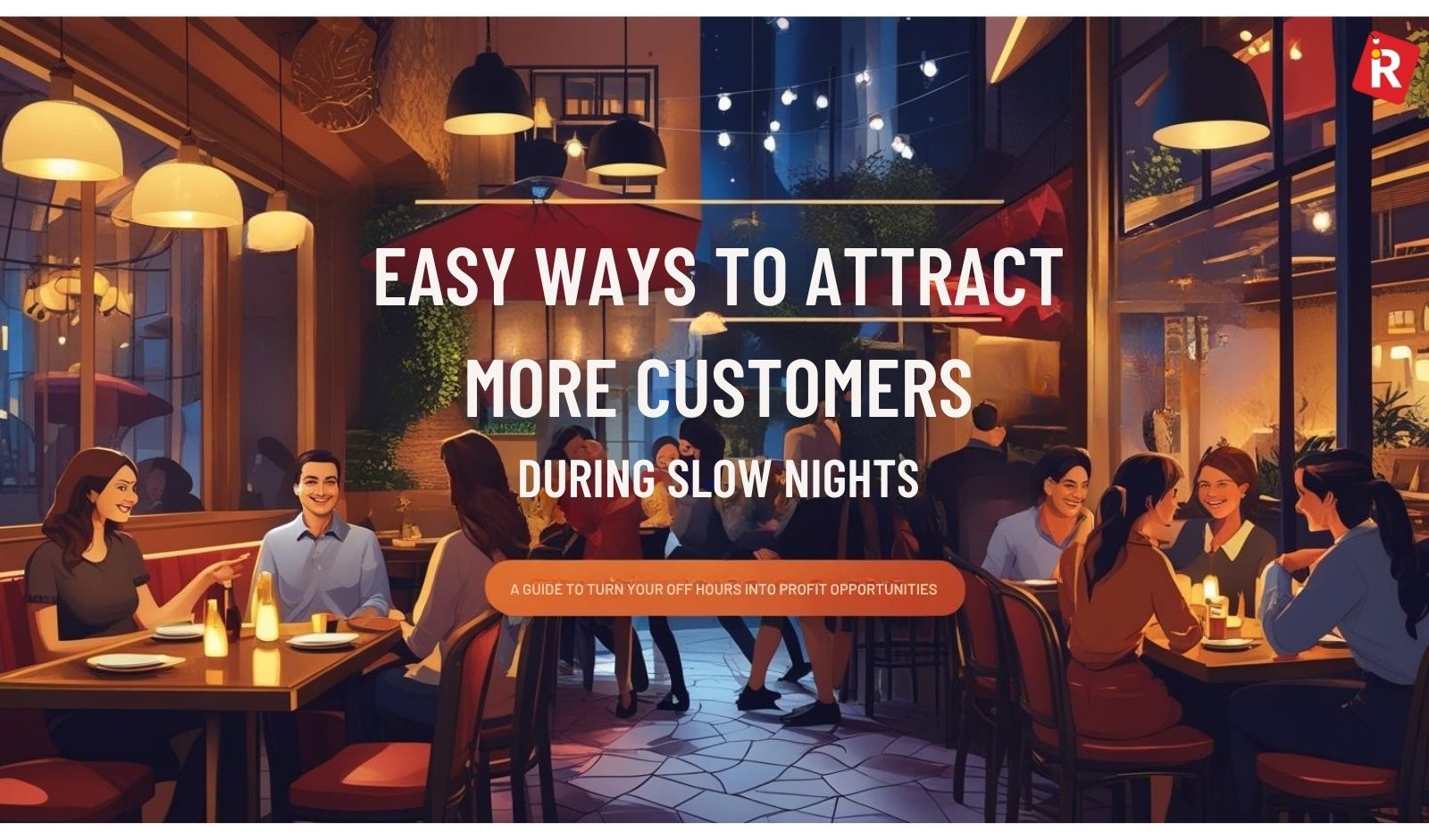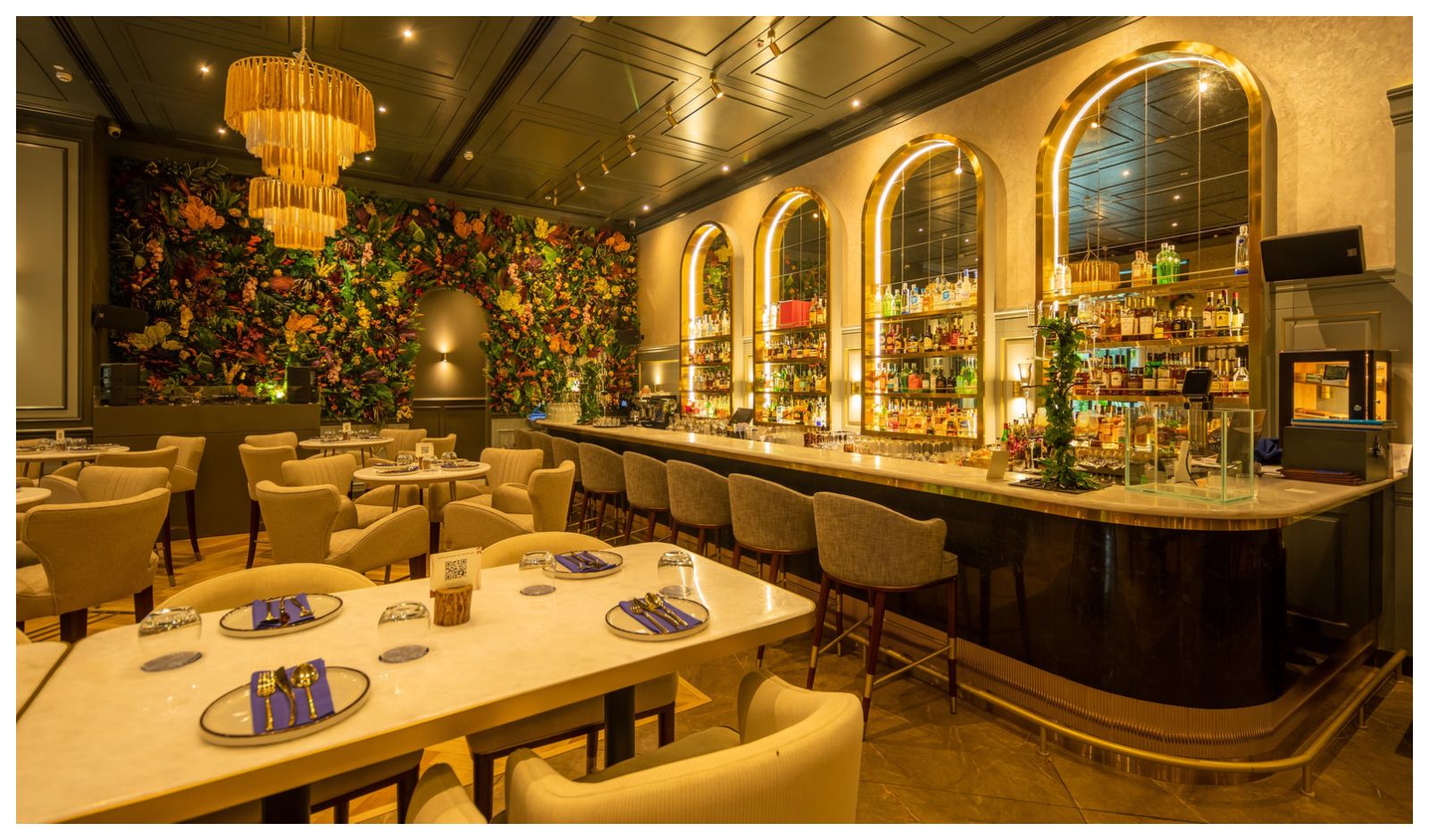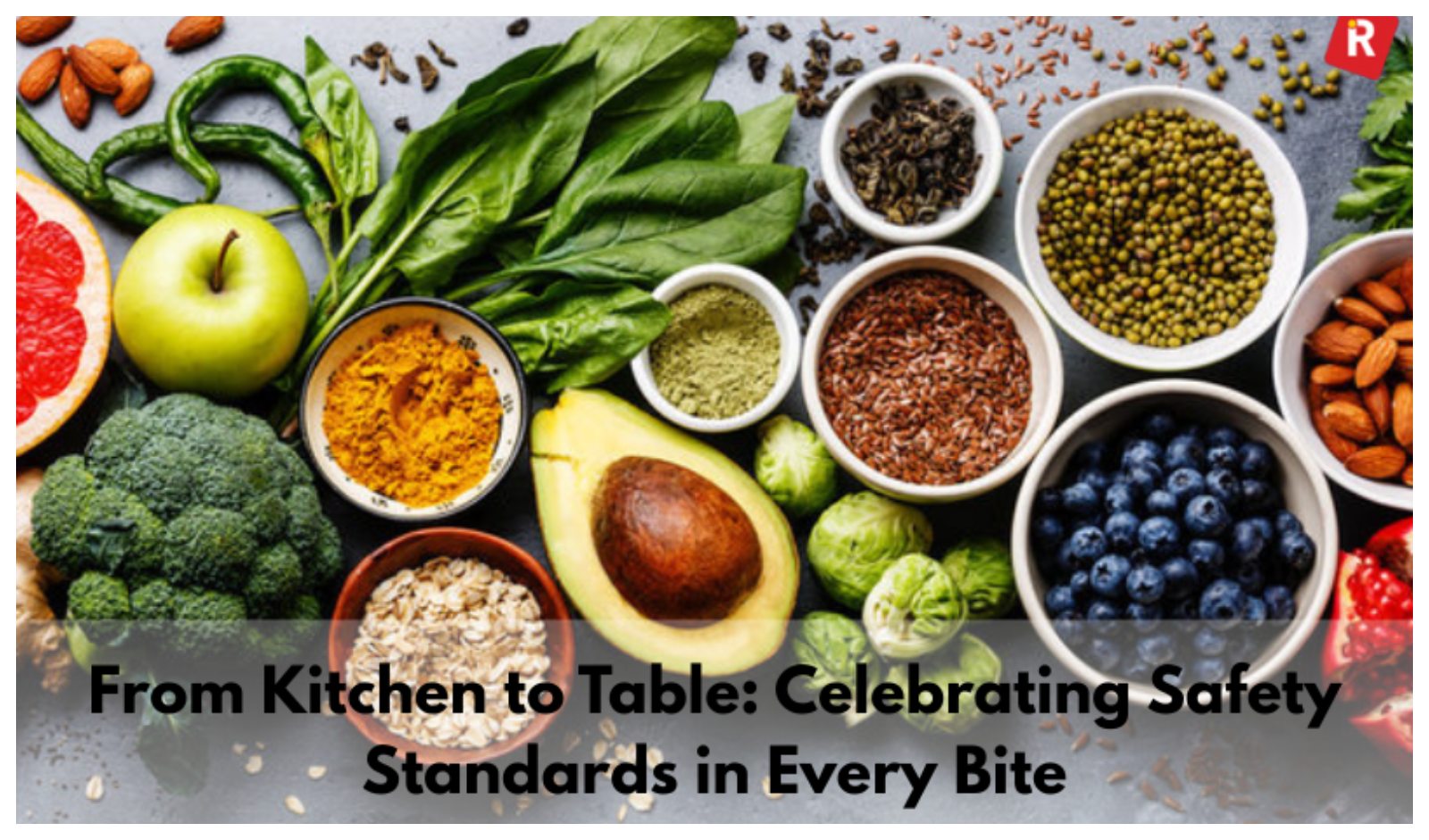
Spices are more than just ingredients in Indian cuisine; they represent the spirit, heartbeat, and pulse of each dish. The magic begins with the 'masala’, a term that refers to the artistic, complex mixtures that define the unmatched variety of Indian flavors. While home cooks love their family recipes, professional restaurant cooks, particularly those refining their skills in hectic kitchens across India, are typically the actual masters of these complex blends, carefully keeping their signature spice secrets.
These professional chefs recognize that a well-balanced spice is the key to unleashing real flavor profiles and transforming ordinary foods into spectacular culinary experiences. From the creamy gravies of North India to the spicy curries of the South, each dish owes its distinct flavor to a carefully planned spice blend. This article will explain the idea of Indian seasoning, examine classic and regional spice blends, and reveal expert chef secrets that take these spices from good to absolutely outstanding.
Check out: The Restaurant's Toolkit: Essential Apps, Resources, and Strategies to Organize Your Business
The Philosophy of Indian Seasoning

The Indian approach to seasoning food is a complex symphony that goes far beyond merely adding flavor. It's a systematic, multilayered procedure that has evolved over the ages, with its roots in different food cultures and even Ayurvedic principles.
The Different Roles of Spices
Spices play a much larger role in Indian cooking than just taste. They add brilliant colors (turmeric, red chile), delicious fragrances (cardamom, cinnamon), and fascinating textures (mustard seeds, fenugreek). Aside from their sensory appeal, many Indian spices are treasured for their medical benefits, which are thought to assist digestion, improve immunity, and offer warmth, connecting the food art to overall well-being. This profound understanding of spices’ different roles is central to the Indian spice philosophy. Most of these blends are based on the ancient Ayurvedic principles.
The Art of Layering
Mastering Indian seasoning requires a complex layering process. Spices are applied at various stages of cooking to extract unique flavors. Whole spices, such as bay leaves or cinnamon sticks, are frequently roasted in hot oil at the start (a process called tadka or chaunk), infusing the fat with their earthy scents. Ground spices, on the other hand, are usually added later, frequently sautéed gently with aromatic substances like ginger and garlic to make the foundation of a gravy—a critical phase known as bhuna. The meticulous timing of adding spices results in a subtle, balanced flavor profile that unfolds on the palate.
The Preference for Fresh Grinding
While pre-ground spices have become popular due to their convenience, skilled Indian cooks nearly always choose to grind their own spice combinations, or masalas, from scratch. The change is noticeable. Whole spices keep their aromatic oils and powerful scents much longer than ground spices. Dry roasting entire spices immediately before grinding brings out their hidden flavors, resulting in an unmatched freshness and intensity that commercially ground powders just cannot equal. This dedication to fresh grinding is characteristic of real Indian flavors.
Read more: 5 Ways to Optimize Digital Menus for Enhanced Profitability
Diversity of Indian Spices

The true richness of Indian seasoning is found in its incredible regional diversity, where local ingredients and culinary traditions give rise to several different Indian regional masalas.
North Indian & Punjabi Masalas
North Indian masalas can be identified by their richness, warmth, and often creamy texture. They frequently include whole spices such as black and green cardamom, cinnamon, cloves, and bay leaf. Chole Masala (for chickpea curry) and Shahi Paneer Masala (for royal cottage cheese curry) are excellent examples. They frequently use dried fenugreek leaves (kasuri methi) for an earthy, bitter flavor. Restaurants in North India frequently modify traditional Punjabi masala recipes to suit local tastes, sometimes making them somewhat less spicy or stronger, with a larger emphasis on aromatic whole spices. These restaurant spices maintain consistency throughout their North Indian menu.
What's new: 10 Actionable Interior Design ideas for Restaurants
South Indian Masalas
These blends usually have lighter, tangier, and occasionally spicier notes, with spices such as curry leaves, mustard seeds, fenugreek, and dried red chilies. Roasted lentils (urad dal, chana dal) and coconut are also popular ingredients, adding body and a nutty flavor. Sambar Powder and Rasam Powder are essential, providing a fragrant base for their sour lentil and tomato broths. The technique of dry roasting and carefully grinding these ingredients defines the particular flavor of South Indian spices.
West Indian (Maharashtrian & Gujarati) Masalas
West Indian food excels in balancing sweet, sour, and spicy flavors. Goda Masala from Maharashtra is a rich, aromatic blend of dry coconut, sesame seeds, stone flower (dagad phool), and different whole spices that add a distinct earthy depth to curries. Gujarati cuisine frequently employs simpler blends such as Dhana Jeera (roasted cumin and coriander powder) as a versatile foundation. These mixtures reflect the region's distinct culinary beliefs.
East Indian (Bengali & Odishan) Masalas
Panch Phoron, a five-spice blend of whole fenugreek seeds, nigella seeds (kalonji), cumin seeds, mustard seeds, and fennel seeds, is commonly used in East Indian seasoning and is always used whole and tempered in oil. Bengali garam masala is often lighter and more aromatic than its North Indian equivalent, with a focus on green cardamom, cinnamon, and cloves. Mustard oil and freshly ground mustard paste are also essential to the region's distinct flavor profile.
Know more: 5 reasons to use a single equipment supplier for new restaurant openings
How to start a restaurant blog and attract customers
Restaurant Secrets to Mastering Spice Blends
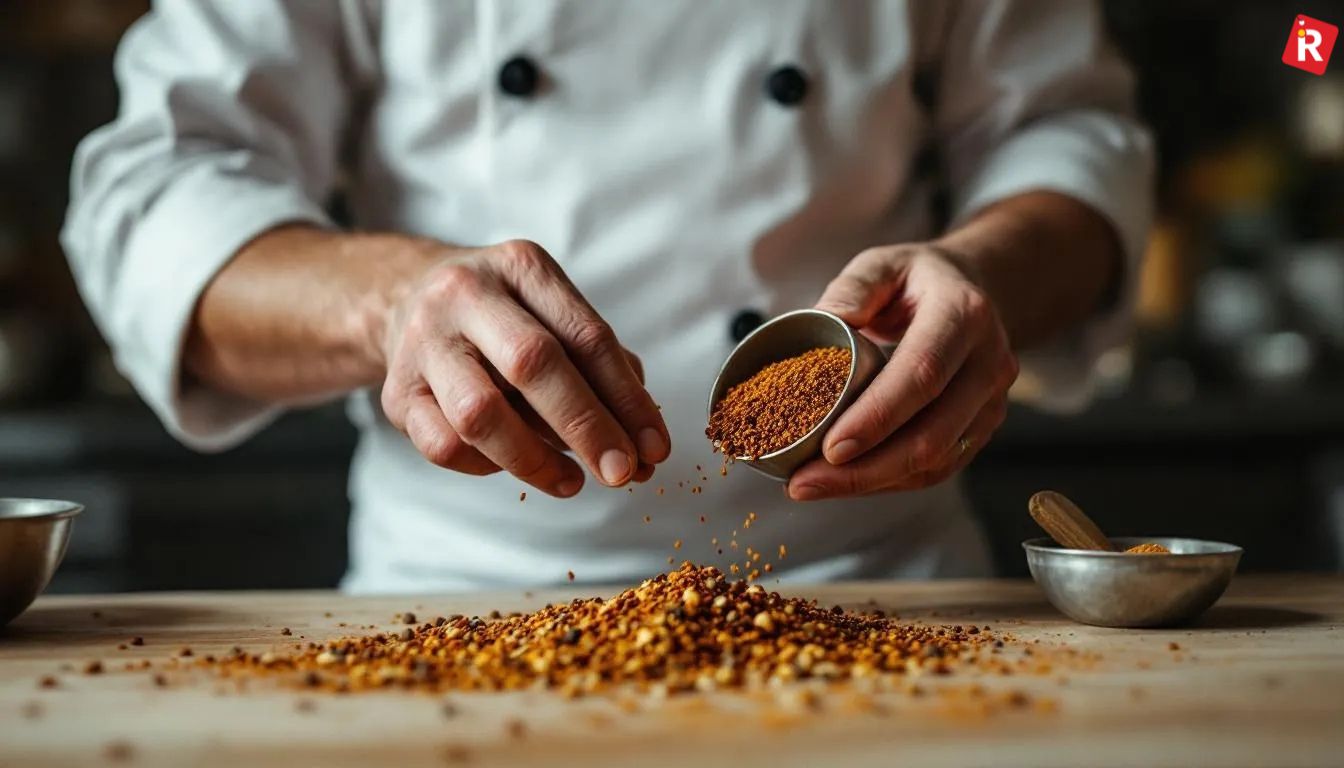
Certain cooks have their spice blends to make the food taste different from others. This becomes the trademark taste of the restaurant. While creating the blend, certain ingredients can be different, but skilled chefs use fundamental principles when creating their trademark spice blends. These professional chef tips are essential for generating consistent, deep flavors.
1. Quality of Ingredients is Non-Negotiable
The quality of the raw materials serves as the foundation for any superb masala. Restaurant cooks carefully select fresh, whole spices from reputable merchants. Stale or low-quality spices produce bland, lifeless tastes. Proper storage away from direct light, heat, and moisture is also critical to maintaining their effectiveness.
2. The Importance of Toasting
This is possibly the most important stage in developing a genuinely fragrant blend. Toasting entire spices in a dry pan over medium heat, also known as bhunao, activates their essential oils, enhances their flavor, and makes them simpler to grind into fine powder. Chefs pay great attention to proper toasting to prevent spice burns.
3. Grinding Fresh for Potency
Once toasted, the spices are ground into a fine powder. While powerful mixer grinders are popular, some cooks prefer old stone grinders for a finer texture and richer aroma. Grinding spices fresh, just before use, or in tiny amounts, gives perfect flavor and aroma, which is a key to mastering Indian seasoning.
4. The Art of Balancing Flavours
Making a perfect spice is an easy process. It requires the chef's 'nose' and 'palate' and an instinctive awareness of how spices interact. To achieve ideal harmony between sweet, sour, salty, spicy, and savory notes, proportions are critical, and constant taste-testing and adjustment are part of the creative process. This is where chefs create their own restaurant flavor blends.
5. Smart Storage for Longevity
Even freshly ground spice mixes lose power with time. Chefs keep their prized blends in airtight containers away from direct sunlight and heat to preserve their volatile components. Small batches are frequently used for very fragrant mixtures.
6. The Signature Twist
Every great chef adds their own label to a dish, often through a subtle change in spice blend. This could be an unusual addition (for example, a trace of anise seeds in a regular Garam Masala, a touch of dried rose petals, or a specific type of chili) or a unique roasting procedure that differentiates their flavor profile, resulting in their restaurant's secret spices.
7. Understanding Chilli Types
Master chefs recognize that not all chilis are created equal. They meticulously choose certain chili kinds, such as the colorful, mild Kashmiri chili for color, the medium-hot Byadagi, and the hot Andhra Sannam for strong heat. Their expertise lies in combining these many chilies to produce precise heat levels and the correct color without dominating other flavors. This detailed awareness enables them to modulate the 'kick' of a dish, tailoring it to different palates while remaining authentic.
8. The Art of Tempering (Tadka/Chaunk)
Beyond simply adding ground spices, restaurant cooks specialize in tadka or chaunk, which is the process of heating entire spices in hot oil or ghee to release their essential oils and infuse the cooking medium. The type of fat used (ghee, mustard oil, or vegetable oil) and the precise timing at which spices are added to the hot fat have a significant impact on the final scent and flavor. This initial burst of powerful, fragrant flavor serves as a critical foundational layer, laying the groundwork for the entire dish and considerably contributing to the trademark taste of authentic Indian flavors.
Read this: Practical ways to train staff for better customer service
The Harmony of Aroma and Taste
Mastering the art of seasoning in Indian food requires a combination of sensory exploration and cooking rules and regulations. It's a complex dance of aromas, textures, and flavors, with each perfectly planned spice blend telling a story about tradition, innovation, and passion. The signature spice mixes created by restaurant cooks demonstrate this deep artistic ability, transforming simple ingredients into a symphonic culinary experience.
As you explore the enormous universe of Indian flavors, keep in mind that every genuinely great Indian meal is built around properly choreographed spices. Embrace the process, experiment with proportions, and maybe even add your own unique spin to these timeless aromatic masterpieces.

In India's ever-growing hospitality sector, where magnificent hotels frequently serve as symbols of comfort and elegance, in-house restaurants face a particular challenge. They are frequently viewed as mere conveniences for hotel guests, who are there for lodging as travelers and visitors. So they struggle to establish a unique identity and compete with the dynamic, stand-alone food scene beyond their doors. Running a successful hotel restaurant requires negotiating unique obstacles, including various visitor expectations, complicated operational dynamics, and serious competition.
However, with the appropriate strategy, a hotel restaurant may move beyond its traditional position, becoming a separate profit center as well as a key selling point for the hotel. This article will look at the key tactics for mastering the art of hotel restaurant management, with a focus on the diverse and dynamic Indian market.
Read more: How to Leverage Self-Service Kiosks to Drive Restaurant Revenue Growth
Defining Your Identity & Concept
The first step towards making the hotel restaurant successful is to shed the "hotel restaurant" stereotype and create a different identity that is not fully associated with the hotel itself.
More Than Just a Hotel Service
To flourish, a hotel restaurant must function as a standalone, appealing food and beverage (F&B) establishment. It should not be a last-minute addition but rather a thoughtfully planned gourmet business that attracts both hotel visitors and locals. The idea is to create an experience that is worth visiting on its own terms, rather than just being a handy alternative for exhausted tourists.
Concept & Brand Identity
Creating a clear, interactive concept is essential. What type of cuisine will you serve? What ambiance will you create? Who is your main target audience? The concept should ideally fit the hotel's overall brand while yet being distinct enough to stand on its own.
- Indian Context: India's culinary environment is highly diversified. Consider concepts that are deeply rooted in local tastes and regional specialties, such as an authentic regional Indian restaurant (e.g., specializing in South Indian, Rajasthani, or Bengali cuisine), a contemporary Indian fusion bistro, a specialized vegetarian or vegan restaurant catering to the large vegetarian population, or a global cuisine offering tailored to diverse international and domestic travelers. Using local ingredients and traditional Indian cooking techniques to create a unique selling point is critical.
- Differentiation: How will your hotel restaurant differ from other hotel dining facilities and independent restaurants? This could be accomplished through a one-of-a-kind themed dining experience, a signature dish that becomes a local favorite, a famous chef in charge, live entertainment that represents local culture, or a distinct environment that provides a genuinely unforgettable vacation.
Target Audience
A really successful hotel restaurant skillfully combines the demands of two separate groups: temporary hotel guests (business travelers, leisure tourists, and delegates) and local walk-in customers. While hotel guests want convenience and consistent quality, locals want a one-of-a-kind dining experience, good value, and a compelling reason to choose your restaurant over the city's numerous other options. Your concept and marketing efforts should appeal to both.
Know more: 5 reasons to use a single equipment supplier for new restaurant openings
Operational Excellence Which Leads to Success

Behind every memorable dining experience is a perfectly run business. This section discusses the fundamentals of effective hotel F&B management.
Kitchen Efficiency & Menu Engineering
The kitchen is the heart of your restaurant. Optimizing its layout, ensuring high-quality, well-maintained equipment, and building smooth procedures are all crucial for maintaining constant food quality and service speed.
- Menu Strategy: Your menu should be properly designed to provide variety, appeal to those who are your target audience, and be profitable. This includes exact recipe costing, reducing food waste, and strategically pricing dishes to maximize business margins. Regularly evaluate sales data to find popular and profitable items, then alter the menu accordingly.
- Indian Context: Managing a diversified menu that frequently includes Indian regional cuisines and European and Asian products needs great organizational skills. Sourcing fresh, local products from Indian markets, adapting to seasonal availability, and efficiently handling the high volumes commonly involved with hotel breakfast buffets and banquet operations are all difficult but necessary for success.
Service Standards & Training
In the hospitality industry, providing excellent service is not optional. Create clear Standard Operating Procedures (SOPs) for all aspects of service, from a friendly greeting at the door to efficient order taking, timely delivery, and smooth billing. Consistent training is critical.
Indian Context: The emphasis must be on professional, attentive, and anticipatory service. Training staff to understand complex guest preferences (e.g., precise spice levels, dietary restrictions such as Jain, vegan, or gluten-free, or specific component allergies), handle unusual requests gracefully, and navigate cultural differences in visitor interactions is critical. Cross-training employees for different roles improves flexibility and service flow, especially during peak hours or for multi-cuisine offerings.
Inventory & Cost Control
Food and beverage expenses are crucial variables that can have a considerable impact on profits. Implementing strong inventory management solutions (preferably coupled with your POS) is critical. Negotiate favorable contracts with trusted suppliers and implement strict portion control throughout the kitchen and bar.
Indian Context: Managing the sometimes unpredictable costs of fresh produce and commodities, particularly in local markets, requires constant awareness and adaptable purchasing methods. Minimizing spoilage and waste, especially in India's diverse climatic conditions, and precisely tracking consumption for high-volume items are continuing problems that have a direct impact on the restaurant's profitability.
Hygiene & Safety
The strictest cleanliness and food safety standards must be followed at all times. This includes strictly adhering to FSSAI (Food Safety and Standards Authority of India) rules and, preferably, international food safety standards such as HACCP. Regular internal and external audits are required to maintain continuous obedience and increase visitor trust.
Indian Context: To prevent foodborne illnesses and preserve an outstanding reputation, large-scale hotel restaurant operations must implement strict water quality standards, proper food handling and storage in potentially high temperatures, and effective pest control.
Check out: 5 Ways to Optimize Digital Menus for Enhanced Profitability
Marketing & Brand Building
A hotel restaurant cannot rely exclusively on in-house visitors; therefore, active marketing to the local population and relevant corporate sectors is critical to long-term profitability.
Beyond Hotel Guests
The most successful hotel restaurants purposefully promote themselves as independent restaurants to locals, business customers, and event organizers. This expands their attractiveness and revenue base beyond temporary hotel guests.
- Strong Online Presence: Create a high-quality, visually appealing website for the restaurant that is separate from the hotel's main site if the concept is good enough. Maintain active and engaging profiles on key social media platforms (Instagram, Facebook, and Twitter) that feature attractive food photos, interesting videos, and consistent branding. Optimize your visibility on local discovery sites such as Zomato, Swiggy (for delivery), Google My Business, and TripAdvisor by providing up-to-date information, appealing images, and timely responses to reviews.
- Local SEO: To attract organic traffic from residents, optimize your digital content for relevant local search terms like "best restaurants near me," "fine dining hotels," or "family restaurants in [your city]."
- Strategic Partnerships: Work with local businesses, corporate offices, event planners, and tourism boards to provide customized dining packages, corporate tie-ins, and themed event meals.
- Promotions & Events: To generate buzz and attract local crowds, host engaging promotions such as themed food festivals, special discounts during off-peak hours, happy hours, or regular live music and entertainment evenings.
- Food Bloggers and Influencers: Invite influential food bloggers, vloggers, and social media personalities from the city and surrounding areas for exclusive tastings and reviews. Their testimonials can greatly increase your reach and credibility.
Internal Marketing
Don't miss opportunities for efficient marketing within the hotel. Promote your restaurant's offerings publicly in guest rooms (via menus and digital displays), the lobby, the registration desk, and all other guest communication channels before and throughout their stay. Highlight significant occasions or signature cuisine.
Read this: 10 Actionable Interior Design ideas for Restaurants
The Restaurant's Toolkit: Essential Apps, Resources, and Strategies to Organize Your Business
Utilizing Hotel Brand
The restaurant should capitalize on the hotel's reputation for excellence, luxury, or business facilities, in addition to creating its own brand. This dual marketing can provide a substantial benefit in terms of trust and early visibility when compared to wholly new standalone businesses.
Guest Experience & Loyalty
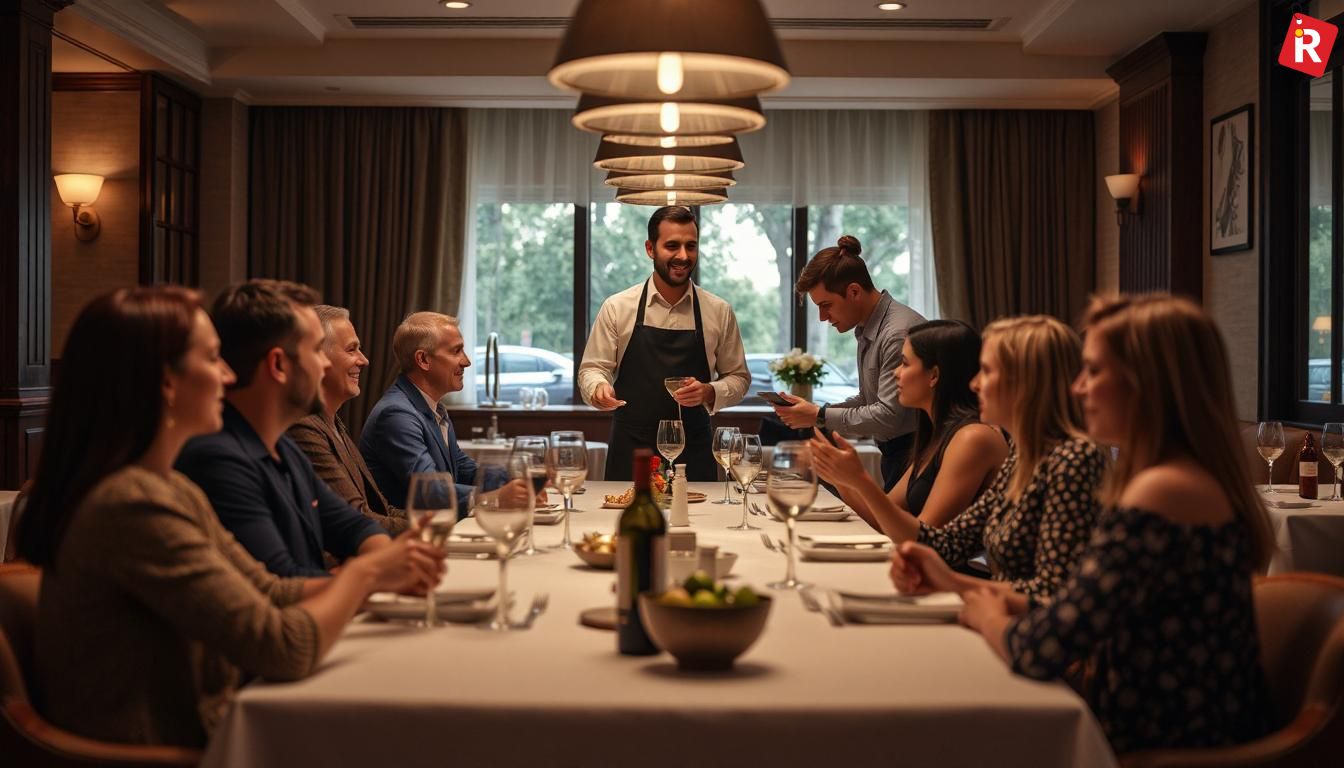
A great guest experience converts first-time diners into repeat customers and promotes favorable word-of-mouth. Focusing on these important areas will dramatically increase your restaurant's turnover rate.
- Personalized Service: Empower employees to anticipate and remember visitor preferences, such as tables and drinks. In India, acknowledging repeat guests by name, catering to dietary needs (Jain, allergies), and celebrating significant occasions builds strong loyalty.
- Ambiance & Design: Create an inviting atmosphere that complements your concept, focusing on lighting, music, and comfortable seating. In India, combining traditional aesthetics with modern design and providing private dining rooms for families or groups is highly prized.
- Feedback Mechanisms: Actively seek guest input through internet questionnaires, comment cards, or direct discussions. Importantly, respond to this input quickly and transparently to demonstrate concern, inspire continuous improvement, and develop trust.
- Loyalty Programs: Create hotel-wide or restaurant-specific loyalty programs to reward repeat customers with points, discounts, or special access. These programs stimulate repeat visitors and provide useful information for targeted marketing.
What's new: Indian Spice Blends from Restaurant Chefs: Recipes, Techniques & Regional Masalas
Financial Management & Profitability
Finally, a successful hotel restaurant must be financially sustainable and contribute significantly to the hotel's overall revenue.
- Cost-Benefit Analysis: Evaluate menu items, staffing decisions, and marketing efforts for their financial impact. Understand your operational costs down to the last rupee, including ingredients, labor, and utilities.
- Revenue Streams: Diversify your revenue streams beyond traditional à la carte eating. Explore chances in large-scale hotel banquet operations, event catering, efficient and appealing room service, one-of-a-kind pop-up dining experiences, themed culinary events, and even cooking classes for guests or local food enthusiasts.
- Pricing Strategy: Create a competitive and successful pricing plan. Examine market rates for comparable dining experiences in your area to ensure that your pricing represents the perceived value of your cuisine, service, and ambiance. Avoid underpricing, which can devalue your offering, and overpricing, which can turn off local customers.
- Pricing Strategy: Conduct regular, thorough financial audits. This includes a thorough review of food costs, diligent labor cost management, and regular audits of inventory and sales figures. This data-driven strategy aids in the identification of improvement opportunities, the reduction of inefficiencies, and the ongoing optimization of profitability.
Conclusion
Running a successful hotel restaurant in India is a complex but extremely rewarding endeavor. It's more than just serving meals; it's about developing an individual culinary identity, maintaining operational discipline, implementing effective marketing initiatives, and relentlessly focusing on providing an excellent guest experience. A hotel restaurant can be transformed from a mere facility to a beloved dining destination by operating as a distinct brand while wisely utilizing the parent property's robust infrastructure and reputation. The actual measure of success is not merely filling tables but also producing lasting memories that boost the hotel's prestige and add significantly to its overall financial prosperity, establishing it as a true landmark in India's rich culinary scene.

Restaurants do not get started when you just build a building on a plot of land and start cooking there. There are a lot of departments that need to be controlled and managed for a restaurant to function properly. It's not just about creating delicious dishes; it's also about ensuring smooth operations, effective administration, clever marketing, and staying ahead in a competitive marketplace. And for managing all these departments, the restaurant needs different resources or ideas. If we organize all the resources, apps, and strategies that are used to manage the restaurant, then a well-organized “toolkit” will be formed. And in today's digital age, a well-chosen "restaurant toolkit" of essential apps, robust resources, and strategic approaches can mean the difference between simply surviving and truly thriving.
This article will walk you through the critical digital and practical tools that any restaurant requires to streamline operations, improve customer experience, and increase profitability.
Read more: Unlocking Perfect Wine: The 20-Minute Rule Every Wine Lover Swears By
Technology—The Digital Backbone
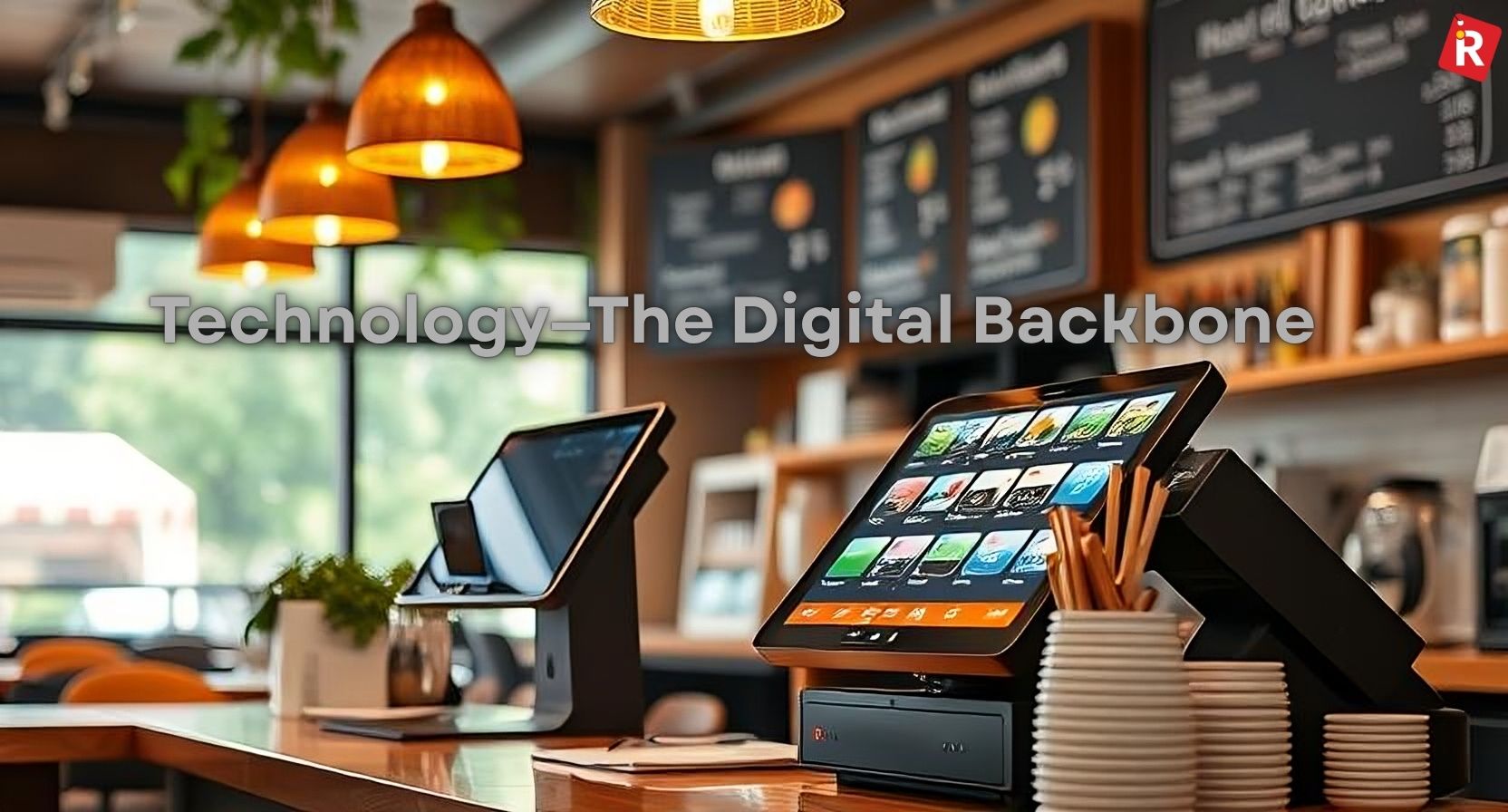
Technology helps regulate activities, reduce errors, and provide useful insights.
1. Point of Sale (POS) Systems:
An advanced POS system is much more than a cash register; it serves as your restaurant's core nervous system. A strong point-of-sale system is essential for numerous restaurants, which range from fast-casual restaurants to fine dining places in larger malls.
Key features: order management, billing, table management, inventory tracking, sales reporting, and, in many cases, integrated payment processing.
Benefits: faster order processing, reduced human error, real-time sales data, and simplified end-of-day reconciliation.
Recommended for India: Popular restaurant software options in India include Petpooja, POSist (formerly Restroworks), Toast, and Square. Petpooja and POSist are well-suited to the Indian market, as they include GST billing, regional language support, and local payment gateway interfaces.
Know this: "Everyday is a Chance to Build Something Bigger," says Sushaan Nath of Passion Cuisine
2. Inventory Management Software:
The most significant variable expense for a restaurant is food costs. Effective inventory management is critical for profitability and waste minimization, both of which are important considerations in sustainable practices.
Key features: Includes recipe costing, supplier management, purchase order production, real-time stock levels, waste tracking, and automated notifications for low inventory.
Benefits: Reduces food spoilage, improves ordering quantities, identifies profitable meals, and aids in appropriate pricing.
Recommended for India: MarketMan (global presence, excellent integrations) and local options, such as RESTOSOFTIN, provide comprehensive solutions. These technologies assist in monitoring pricing swings from suppliers and tracking consumption habits.
3. Online Ordering & Delivery Platforms:
With the rise of digital convenience, having an online presence has become mandatory. For restaurants, online ordering is critical for reaching clients all around the city.
Key features: customizable online menus, integrated payment gateways, order management, and client data collection.
Benefits: increased client reach, convenience, less dependency on phone orders, and valuable data on customer preferences.
Recommended for India: While direct platforms like GloriaFood (which provides a free online ordering system) and Foodiv (which is commission-free) allow you to create your own online ordering system, partnering with aggregators such as Zomato and Swiggy is critical for increased visibility. Balancing direct orders with aggregator presence is critical for managing commissions.
Know more: 7 Pizza Chains That Are Changing the Way We Eat on the Go
4. Employee Scheduling & HR Apps:
Your team is the foundation of your service. Effective scheduling, communication, and HR management are critical for employee morale and operational efficiency.
Key features: automated shift scheduling, time-off requests, shift swapping, internal communication tools, time tracking, and payroll integration.
Benefits: reduced schedule conflicts, saved management time, improved team communication, equitable workload distribution, and labor cost reduction.
Recommended for India: 7shifts, When I Work, and Homebase (which provides a good free plan for small businesses) are highly rated globally. These can be tailored to your employees' shift schedules, taking into account local holidays and peak hours.
Customer Relationships & Brand Presence

Beyond operations, attracting and keeping consumers requires strategic marketing and exceptional customer service.
1. Customer Relationship Management (CRM) Systems:
Understanding what customers want is essential for tailored service and efficient marketing. A CRM facilitates the development of long-term partnerships.
Key features: customer databases, preference tracking, loyalty program management, feedback collection, and tools for targeted marketing campaigns.
Benefits: Improves customer retention, allows for targeted offers, identifies VIP guests, and aids in the creation of more successful marketing programs.
Recommended for India: Global CRMs like Bitrix24 (which offers a free CRM plan) and specialized restaurant CRMs from providers like Netclues will assist you in managing customer data, particularly for your clients, separating them based on their preferences, frequency of visits, and average expenditure.
What's new: 10 Actionable Interior Design ideas for Restaurants
2. Social Media Management Tools:
In a place dominated by social media, your restaurant's online presence is critical. Effective social media management enhances your brand.
Key features: content scheduling, multi-platform posting, engagement tracking, analytics, and direct messaging options.
Benefits: Increases brand recognition and engagement, enables real-time customer interaction, and delivers insights into audience trends.
Recommended for India: Hootsuite and Buffer are popular options. Use these to highlight your signature meals, behind-the-scenes looks, and customer testimonials, focusing on local communities and food bloggers.
3. Online Review & Reputation Management Platforms:
Online reviews are the new word-of-mouth. Actively managing your online reputation is critical for attracting new customers and maintaining trust.
Key features: monitoring reviews across platforms (Google, Zomato, TripAdvisor), an established inbox for responses, sentiment analysis, and comparing competitors.
Benefits: Increases reputation, enables timely issue resolution, attracts new consumers, and provides useful feedback for improvement.
Recommended for India: Tools such as ReviewTrackers or diligent manual monitoring of Google My Business, Zomato for Business, and TripAdvisor are essential. Responding quickly and professionally to all reviews, favorable and negative, is critical to establishing a great reputation.
Essential Resources & Strategic Approaches

Technology is a tool, but its effectiveness depends on the strategies and resources supporting it.
1. Legal & Compliance Resources:
Running a restaurant in India requires navigating a complex web of licenses and rules. Keeping execution is non-negotiable.
Key Resources:
- FSSAI license: Required for all food businesses to ensure food safety and quality.
- Trade License: A document from the Municipal Corporation that validates your permission to operate in a given location.
- Health Trade License: Local health authorities provide a Health Trade License, which ensures adherence to health and hygiene requirements.
- Fire Safety License/NOC: Required for safety and issued by the local fire department.
- GST Registration: Required for tax compliance.
- Shop & Establishment Act License: Register your restaurant within 30 days of opening.
- Liquor License: If providing alcohol, you must get a liquor license (complicated and state-specific).
- Music License: If you're playing copyrighted music.
Strategy: Consult with legal specialists or business consultants who specialize in the hospitality industry to ensure that the important permissions are secured and updated regularly. Keep detailed records on all licenses and inspections.
2. Financial Planning & Accounting Tools:
A restaurant's long-term success depends on good financial management.
Key resources: accounting software, budgeting tools, and financial advisors.
Strategy: Use reliable accounting software (such as TallyPrime, which is commonly used in India, or cloud-based alternatives like QuickBooks Online) to track income, spending, payroll, and taxes. Maintain a regular examination of profit and loss statements, balance sheets, and cash flow reports. Set clear budgets for all divisions, from food to marketing, and regularly monitor inconsistencies. Understanding your break-even point and increasing profit margins are constant objectives.
3. Staff Training & Development Programs:
While apps can help with HR, human development is more about developing skills and creating a healthy work environment.
Key resources: online learning platforms, in-house training manuals, mentorship programs, and ongoing performance feedback systems.
Strategy: Create complete training programs for both FOH and BOH employees. For front-of-house, prioritize customer service excellence, product knowledge, upselling techniques, and POS system proficiency. For BOH, prioritize food safety, portion control, recipe consistency, and kitchen efficiency. Encourage constant learning and establish clear career routes. A well-trained, motivated crew is your most valuable asset in providing great customer service.
Check out: Oats vs. Muesli: Which Breakfast Option Is Better For Weight Loss?
Best Theme Cafes to Explore in 2025: Where Coffee Meets Imagination
4. Data Analytics & Business Intelligence:
Beyond simply gathering data through your POS and CRM, the true power is in evaluating it to make sound business decisions. Business intelligence technologies convert raw data into actionable insights.
Key resources: integrated POS reporting and customized BI dashboards.
Strategy: Analyze sales trends (peak hours, most popular meals), inventory turnover, labor costs, and customer demographics regularly. Identify patterns, predict demand, optimize staffing, and adjust your menu based on performance. For restaurants, this involves looking into local seasonal preferences, identifying profitable meals that appeal to the neighborhood, and optimizing delivery routes using order heat maps. This data-driven approach enables agile modifications and maximizes revenue.
Conclusion
In a competitive and vibrant restaurant sector, success is not taken lightly. It is the outcome of careful planning, strategic implementation, and effective use of available tools and resources. Restaurant owners may establish a durable and profitable business through the use of modern technology for operations, employing extensive systems for marketing and customer relations, and strictly following legal and financial best practices.
The "restaurant toolkit" described here is more than just a collection of apps; it is an organizational model based on business, data, and customer focus. Embrace these essential resources and strategies, and your restaurant will not only survive but thrive, becoming a beloved culinary landmark for years to come.

A restaurant is more than simply a place to eat; it is an exhilarating experience in the modern world. The interior design of the restaurant is one of the factors that contribute to its uniqueness. While delicious food is undoubtedly the foundation, a restaurant's interior design frequently creates the critical first and last impression. It is more than simply aesthetics; it is a silent marketer, an atmospheric starter, and a compelling storyteller who has a significant impact on the dining experience and, ultimately, your business success.
A well-designed location affects how long people stay, how they feel, and how likely they are to return and recommend your business. It creates a mood, increases comfort, and promotes your brand identity in ways that food alone cannot. This article looks into the philosophy of exceptional restaurant interior design and explores ten captivating, practical ideas for transforming your restaurant into a popular and memorable destination in your area.
Read more: 7 Pizza Chains That Are Changing the Way We Eat on the Go
The Philosophy of Restaurant Interior Design

Why is interior design so important? How does it help in the overall business of the restaurant? Before we get into specific ideas, it's important to grasp the fundamental principles that guide ideal restaurant design.
More Than Just Looks:
Restaurant interior design goes beyond simply visual appeal. It's a strategic investment that sets the tone, drives customer behavior, and shapes their overall impression of your business. A well-designed environment has a direct impact on the customer experience, from the moment they walk in to when they depart. It may make a small space appear larger, drive foot traffic, improve food presentation, and even gently encourage longer stay periods or faster table shifts, depending on your company model. Finally, effective design is about generating a mood, whether cozy, vibrant, luxurious, or quiet, that connects with your target audience and motivates them to return.
Defining Your Brand's Visual Story:
Every aspect of your restaurant's design should accurately reflect your brand's distinct story. This involves matching the interior with your cuisine, concept, and target customers. For example, a casual café offering traditional Haryanvi cuisine may favor rustic, earthy tones and local artisanal crafts, whereas a modern fusion restaurant in luxurious districts may prefer sleek lines, minimalist design, and sophisticated lighting. Consistency is essential: your menu design, staff clothing, and internet presence should all reflect the visual language created by your interior. This combined strategy maintains your restaurant's brand and leaves a strong, lasting impact on customers.
Finally, having a unique interior design for your restaurant establishes a brand identity that will help it stand out in the restaurant sector. It also provides customers with a unique experience that will help them remember your business and may even convert them into regular customers.
Know more: Oats vs. Muesli: Which Breakfast Option Is Better For Weight Loss?
10 Captivating Interior Design Ideas
These ideas provide a variety of ways to improve your restaurant's aesthetic and practical appeal, catering to a wide range of concepts and budgets.
1. Dynamic Art
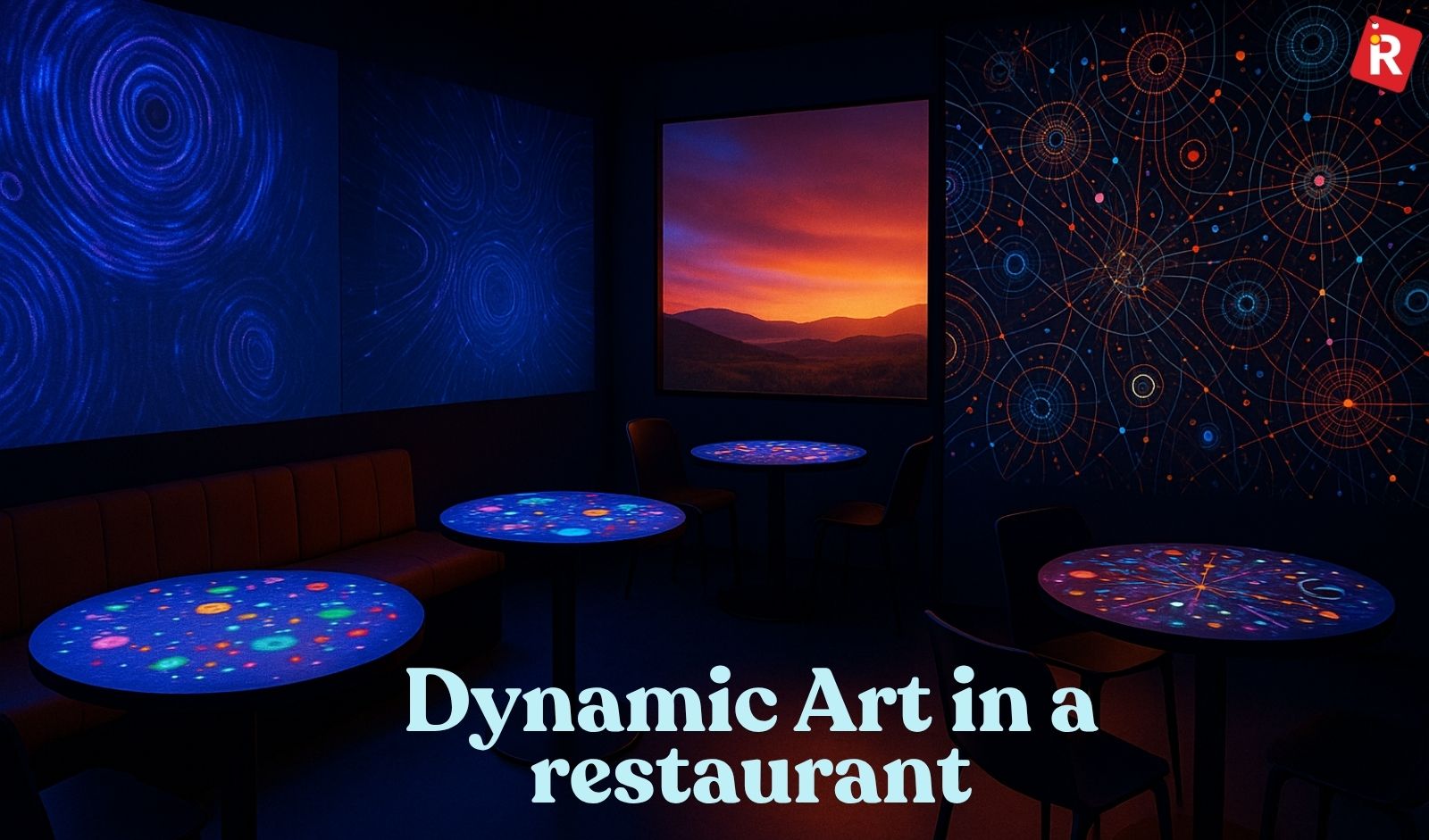
Consider walls with changing patterns, tables with small projected graphics, or digital "windows" that show altering landscapes. This design goes beyond static decor, using kinetic art and interactive computer displays that constantly change the atmosphere. The venue itself becomes a dynamic, breathing organism that continuously shapes the dining experience. Its distinct attraction stems from its multi-sensory, ever-changing nature, which captivates and surprises while providing limitless fresh visual aspects for repeat visits. This concept appeals to tech-savvy and experience-seeking customers, particularly those of the younger age groups. However, it requires a considerable upfront investment in technology, continual maintenance for digital information, and careful consideration of light levels to avoid distracting from the meal.
2. Sensory Overload
Rather than focusing exclusively on images, this design deliberately engages all senses. It features totally different textures such as velvet walls, rough stone, or polished wood; subtle, consistent ambient scents (think a delicate spice blend, fresh rain, or a hint of citrus—never overpowering); and a carefully chosen soundtrack that includes gentle nature sounds or a soothing urban hum. This strategy creates a complete and absorbing experience that is memorable, producing an original and extremely pleasant atmosphere. It provides a unique retreat from the typically hectic urban atmosphere. Meticulous preparation is required to ensure that sensory aspects are harmonic and do not overwhelm, and material choices must be strong for handling diverse textures.
3. Deconstructed & Exposed Aesthetic
This approach acknowledges a building's "bones" by intentionally displaying structural and functional aspects. Consider visible pipelines, pipes, raw concrete, exposed ventilation systems, and deconstructed furniture. It is an honest approach that reveals the underlying structure. Its particular appeal stems from its raw, industrial-chic appearance, which starkly contrasts with highly polished surfaces. This design emphasizes authenticity and produces a sophisticated, urban vibe that complements fast-rising industrial and commercial regions. Practical considerations include keeping exposed elements extremely clean and well-maintained, as well as using high-quality materials for components that will become design features.
What's new: Practical ways to train staff for better customer service
4. Stepping into a Storybook
The entire restaurant is converted into a perfectly detailed scenario from a certain novel, film, magical universe, or historical period. Guests are immersed in a story rather than simply dining. Consider an "Alice in Wonderland"-themed tea parlor, a "secret garden" dining room, or a bar hidden behind an ordinary bookshelf. This generates an unrivaled sensation of escape, wonder, and originality, making the restaurant extremely "Instagrammable" and generating a lot of attention. It provides entertainment much beyond the meals and can be a strong lure for families and younger populations looking for unusual experiences. This difficult concept requires significant investment in custom props, set design, and meticulous attention to theme continuity.
5. Modular & Transformable Space
This design includes extremely modular and changeable furniture, walls, and lighting systems, allowing the entire room to change throughout the day or for different events. Consider sliding partitions to create private dining areas, adjustable tables for intimate or social events, and lighting schemes that range from bright breakfast to cozy evening. Its distinguishing feature is its exceptional flexibility, which allows it to adapt to different times of day (e.g., café in the morning, bar at night) and accommodate a wide range of activities. This makes it suitable for multi-purpose venues or restaurants that want to maximize revenue streams. High-quality, long-lasting, and readily movable systems, as well as staff training, are required for efficient shifts.
6. Workshop Restaurant
This concept includes a visible, functional artisan's workshop right in the dining area. It could be a live bakery where bread is kneaded, a pasta-making station, a coffee roasting area, or a local craftsperson demonstrating pottery or weaving. This adds an attractive "show" element to the eating experience while also building trust via transparency and establishing a strong connection to craftsmanship and authenticity. It effectively emphasizes the authenticity of your ingredients or the talent involved, appealing to selective customers. It is critical to maintain high sanitary standards, provide sufficient ventilation for heat and smells, and keep noise levels under control.
Check out: How to start a restaurant blog and attract customers
7. The Historical Dining Experience:
This involves precisely copying a specific historical period, which extends beyond mere vintage décor. To completely transport guests to a bygone era, original furniture, design pieces, period-appropriate music, and possibly even staff costumes are required. Its distinct appeal stems from providing a really immersive and nostalgic experience that taps into a sense of tradition and curiosity. It operates as a living museum, with visitors actively participating in the atmosphere of another era. This challenging concept requires substantial research and investment in real or high-quality replica components, with consistency across all elements to avoid a "costume party" atmosphere.
8. The Minimalist & Hyper-Focused Sanctuary:
This design is a major departure from overcrowded aesthetics, removing any unnecessary features. The space focuses on negative space, single focal points (a gorgeous piece of art, a meticulously built table), and the purity of form, line, and high-quality materials (raw concrete, polished wood, and plain steel). The design disappears, making the meal the final "design element." This creates a quiet, refined, and uncluttered environment that promotes mindfulness and a greater appreciation for the food industry. It caters to a specific market looking for a quiet and elegant eating experience, but the main stars are excellent cleanliness, organization, and incredibly high-quality food and plating.
9. Interactive Walls & Surfaces:
Interactive design elements can be used to attract the diners. This can include giant chalkboard walls for sketching or writing, as well as erasable surfaces and tables with embedded digital screens for ordering, browsing menus, and playing light games. This invites direct guest participation and creativity and adds a playful, engaging element to the dining experience, resulting in unique photo opportunities and potentially increased dwell time for families or groups. It's ideal for family-friendly restaurants and tech-forward cafes looking to create a vibrant, engaging environment. Durable, easy-to-clean surfaces and solid, user-friendly digital connectivity are important considerations.
Read this: A CULINARY DEBUT: INDIA WELCOMES ITS FIRST MODERN CHINESE POP-UP AT ZEN!
10. Gallery Dining Experience:
The restaurant functions as both a revolving gallery and a permanent display area for a certain type of curated collection. This may include antique culinary equipment, rare plant prints, a revolving exhibition of photography, historic maps, or a diverse collection of foreign antiques. Its distinct appeal stems from combining meals with cultural research and artistic appreciation, providing ongoing mystery and curiosity that promotes repeat trips to discover new works. This approach requires a passion for collecting and curating, with displays that must be secure, well-lit, and consistent with the restaurant's brand to seem logical. It could appeal to art lovers and those looking for a culturally enhanced eating experience.
Conclusion
In the competitive restaurant market, a genuinely successful establishment goes beyond simply providing cuisine; it becomes an engaging experience, a one-of-a-kind destination. Interior design, when approached with creativity and strategic intent, can help define your brand, improve customer satisfaction, and drive long-term growth. By embracing one of these innovative ideas or combining pieces of them, you do more than just launch a restaurant; you create an amazing setting where every meal is transformed into a cherished experience, guaranteeing that your restaurant stands out and thrives as a renowned culinary icon.

In the culinary sector, one of the most important things, even before the food, is the service provided by the staff of the restaurant. A restaurant's service frequently sets it apart from the competition. A decent meal can become a memorable experience, a first-time visitor can become a regular, and even an otherwise bad evening can be saved by providing exceptional customer service. However, regardless of how good the food is, bad service can quickly damage a restaurant's reputation.
Investing in customer service training for employees is a strategic necessity for restaurant owners, particularly in a competitive market. Encouraging your staff to be the best representatives of your business will guarantee that each customer departs happy and excited to come back. This in-depth article will examine achievable, realistic strategies for preparing your restaurant employees to provide exceptional customer service, turning your service into a distinguishing feature of your business.
Read more: What Gen Z Really Eats: 10 High-Protein Indian Meals That Don’t Taste Boring
Creating the Foundation for Exceptional Service
Establishing a basic understanding of the importance of customer service and what excellent service actually means for your particular business is essential before any specialized training starts.
- The Undeniable Value of Service Excellence: Every team member must understand that providing exceptional service is far more than just being kind; it has a direct impact on the restaurant's profitability. An increase in repeat business, larger tips for employees, positive ratings on websites like Zomato and Google Maps, and a rise in priceless word-of-mouth recommendations are all direct results of investing in first-rate service. Employees are much more motivated to perform well when they recognize this concrete connection, which builds loyalty and enhances the restaurant's overall success. A strong internal drive for excellence is created by this focus on the return on investment of service training.
- Establishing Your Own Service Standards: Don't let "good service" be interpreted in any way. Establishing clear, defined customer service policies that are suited to their unique brand and operating style is necessary for restaurants. Every stage of the customer journey, from the time a customer enters the restaurant until they leave, should be carefully described in these restaurant service guidelines. Having encyclopedic menu knowledge, welcoming customers within a set timeline, maintaining consistent eye contact, addressing client complaints with elegance, and saying goodbye with warmth and sincerity are all examples of this. All employees, regardless of experience level, are guaranteed to be consistent thanks to these clearly stated benchmarks.
- Building a Genuine Service-First Culture: Providing outstanding customer service is a philosophy that gets into every part of your business, not just a set of chores. You are the main creator of this culture as the manager or owner. In each interaction, set an example of the desired conduct. Make it obvious that going above and beyond is appreciated by publicly praising and rewarding instances of exceptional service. Include client feedback as a learning tool rather than a punishing one in routine team interactions. Giving staff the freedom to address little problems immediately promotes a customer-centric mindset and results in prompt, attentive service that pleases customers.
What's new: How to start a restaurant blog and attract customers
Developing the Art of Teaching Skills: Adaptive Training Methods
There is much more to effective service training than a dry lecture. It calls for capturing approaches that boost self-assurance and practical skills.
- Role-playing Scenarios: Few strategies work as well for front-of-house employees as role-playing customer service scenarios. Hold engaging exercises in which employees pretend to be in typical and difficult customer service scenarios (such as greeting customers, taking orders, and addressing complaints). Give constructive criticism in a relaxed setting to boost self-esteem and improve abilities.
- Deep Menu Mastery: A waiter cannot deliver truly exceptional service unless they are intimately familiar with the menu. Provide frequent, practical menu training in which employees sample each meal. Ingredients, preparation techniques, common allergens, and the best combinations should all be taught to them. Employee motivation is improved through carrying out regular quizzes.
- Mentoring and shadowing: Assign new workers to seasoned, productive employees so they can watch service during peak hours. Encourage mentors to provide real-time advice and an explanation of their activities. "Reverse shadowing" is another tool that managers might use to find coaching opportunities. This provides critical on-the-job training, enforces best practices, and fosters a collaborative team culture in which knowledge is openly shared.
- Continuous Learning & Micro-Training: Training is not a one-time event; it is a continuous process. Make sure that your skills are continuously improved by holding brief, targeted refresher courses (15–30 minutes) or by "micro-learning" through brief movies, quizzes, or advice. This addresses particular areas for improvement and keeps skills sharp.
Know this: A CULINARY DEBUT: INDIA WELCOMES ITS FIRST MODERN CHINESE POP-UP AT ZEN!
Key Customer Service Skills
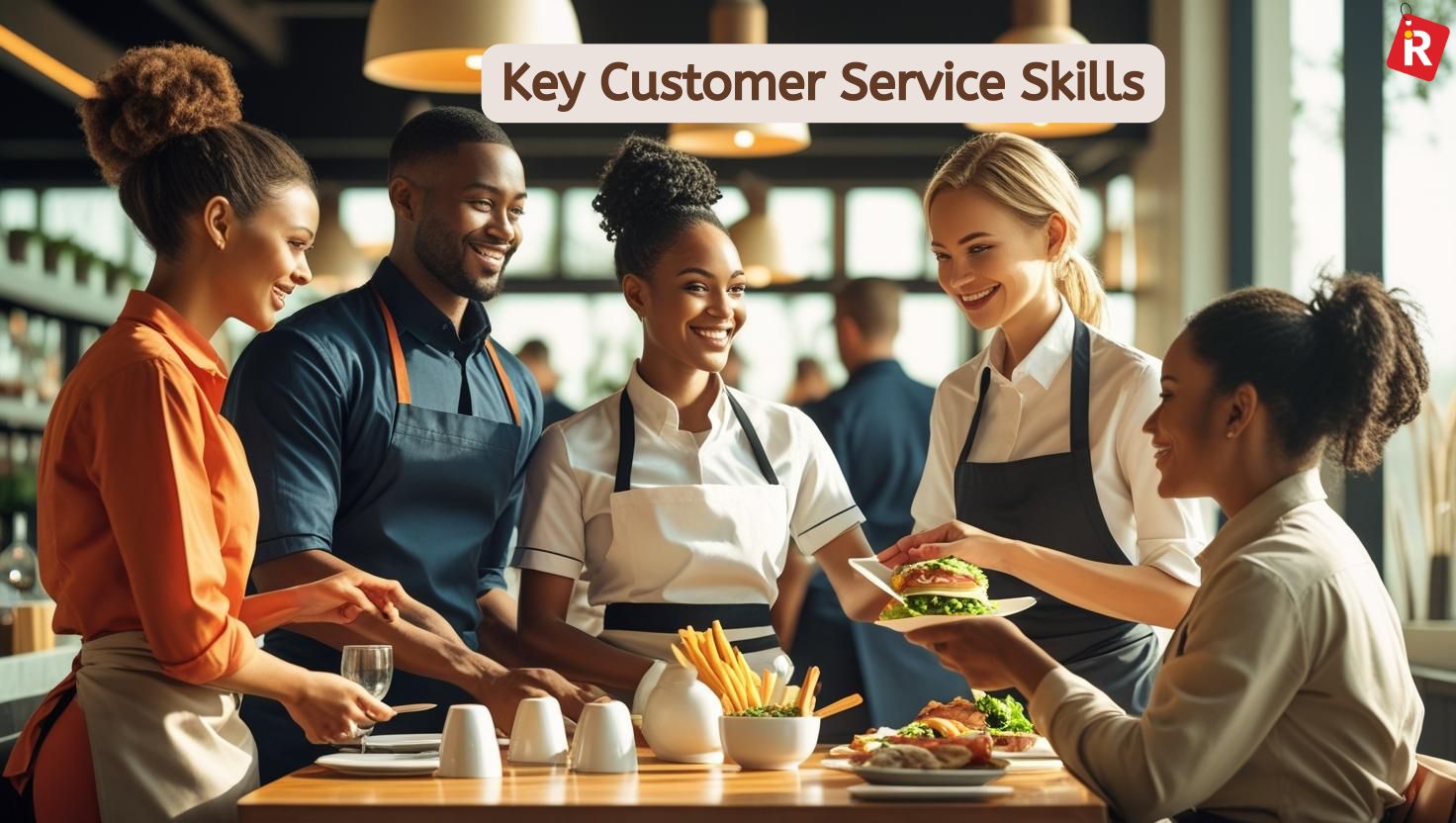
Good training focuses deeply on the particular, subtle abilities that come together to produce an incredibly amazing client experience.
- The Critical First and Last Impressions: A customer's impression is greatly influenced by the greeting and departure. Teach employees how to greet guests with a genuine smile and eye contact as soon as possible, maybe within 30 seconds of their arrival. The goodbye is just as crucial; it should be kind and thankful, maybe a sincere "Thank you for dining with us! We hope to see you again soon!" These first and last exchanges create a favorable impression that lasts throughout the dinner and greatly influences the possibility of return visits.
- Paying Attention and Predicting: Train employees to do more than just hear what customers have to say. Urge them to closely observe nonverbal clues and offer clarifying questions. In addition to ensuring proper order taking, this builds trust. More significantly, teach them to anticipate client demands by immediately refilling water glasses, offering additional drinks without being asked, quickly cleaning away empty dishes, and generally being one step ahead of the customer. This attentive service greatly improves the dining experience and makes guests feel truly valued.
- Overcoming Obstacles: Handling complaints expertly is arguably the most important service ability. Instruct employees on a clear, step-by-step process for addressing restaurant complaints: first, actively listen without interrupting; second, show empathy for the customer's annoyance; third, sincerely apologize (even if they weren't at fault); fourth, offer a solution; and fifth, follow up to make sure the customer is satisfied. Giving employees the freedom to resolve little problems immediately turns potentially negative situations into chances to demonstrate superior service recovery techniques, which frequently results in increased customer loyalty compared to when the problem had not occurred.
- Improving the Experience: Train employees to use suggestive selling as a legitimate approach to improve the eating experience for customers, rather than as a pushy sales technique. Their extensive menu knowledge serves as the direct reason for this. For instance, a waitress might suggest, "Would you like to begin with our popular Paneer Tikka, which pairs wonderfully with our fresh mint chutney?" rather than "Do you want a starter?" and "Our chef's special dessert, the Gulab Jamun with Rabri, is a perfect end to your meal." By gently encouraging servers to use upselling strategies, this strategy raises the average check amount while giving customers a sense of direction and introducing them to new favorites.
Check out: How to create a restaurant menu from scratch
Coffee Cocktail Drinks: 10 Must-Try Options to Follow in 2025
The Cycle: Feedback, Development, and Recognition
Excellent service is a continuous process of improvement driven by feedback and an appreciative culture rather than a final destination.
- The Vital Loop: Use a variety of channels to get feedback from customers. Traditional comment cards, electronic feedback forms that can be accessed through QR codes on tables, and constant observation of internet review sites like TripAdvisor, Google Maps, and Zomato are a few examples of this. Crucially, go over this feedback regularly in team meetings, addressing persistent problems head-on and praising favorable remarks to raise spirits. This shows how important customer feedback is and enables rapid corrections in the course based on practical experiences.
- Individual Growth: Conduct regular, individual performance reviews for your employees, with a strong emphasis on service standards. Provide detailed, actionable comments, praising concrete examples of great service while explicitly identifying areas for improvement. Provide constructive mentoring and further targeted training as needed. This ensures individual accountability, ongoing skill development, and reinforcement of desired behaviors that contribute to overall service excellence.
- Celebrate Excellence: Publicly recognize and praise employees who consistently provide excellent customer service. This could take various forms, including an award, bonuses based on great customer feedback, gift cards, or simply genuine vocal gratitude in front of their fellow employees. Creating a culture in which going the extra mile is celebrated boosts morale, promotes healthy competition, and reinforces the value of customer service. Employee appreciation programs are highly effective motivators.
Read this: How can a small restaurant double its customers in 6 months?
Conclusion
In the vibrant restaurant scene, where culinary creativity is plentiful, the quality of your customer service can genuinely differentiate you. It's the secret ingredient that improves every dish and turns an ordinary meal into an amazing experience. You're not just serving food; you're building relationships by implementing practical, ongoing training techniques, providing your employees with essential interaction skills, and cultivating a culture of continuous improvement.
Investing in your team's customer service skills benefits your restaurant's reputation, revenue, and long-term success. It ensures that each customer departs with a grin, becomes an ambassador for your business, and anxiously anticipates their next visit, transforming your restaurant into a beloved destination.

In the highly competitive cooking world of today, simply serving delicious food can often be insufficient. Diners have an astounding number of options, ranging from the quieter residential areas to the busy streets. Restaurants must use more than just traditional marketing if they want to stand out, engage their audience, and build a loyal customer base. This is where a well-written restaurant blog can be very effective.
With the rise of the digital age, lots of people are searching online for cafes or restaurants. They primarily use their website or Google reviews to determine which option to select. Therefore, it is crucial for a restaurant owner to adequately promote their business. Creating a blog for your restaurant is only one of several strategies to advertise your business. It is a novel approach to writing blogs on various subjects related to the restaurant. In this article, we will be discussing all the important elements related to restaurant blogs, like their need and how to create your restaurant’s blog to attract more customers.
Read more: A CULINARY DEBUT: INDIA WELCOMES ITS FIRST MODERN CHINESE POP-UP AT ZEN!
Why Your Restaurant Needs a Blog
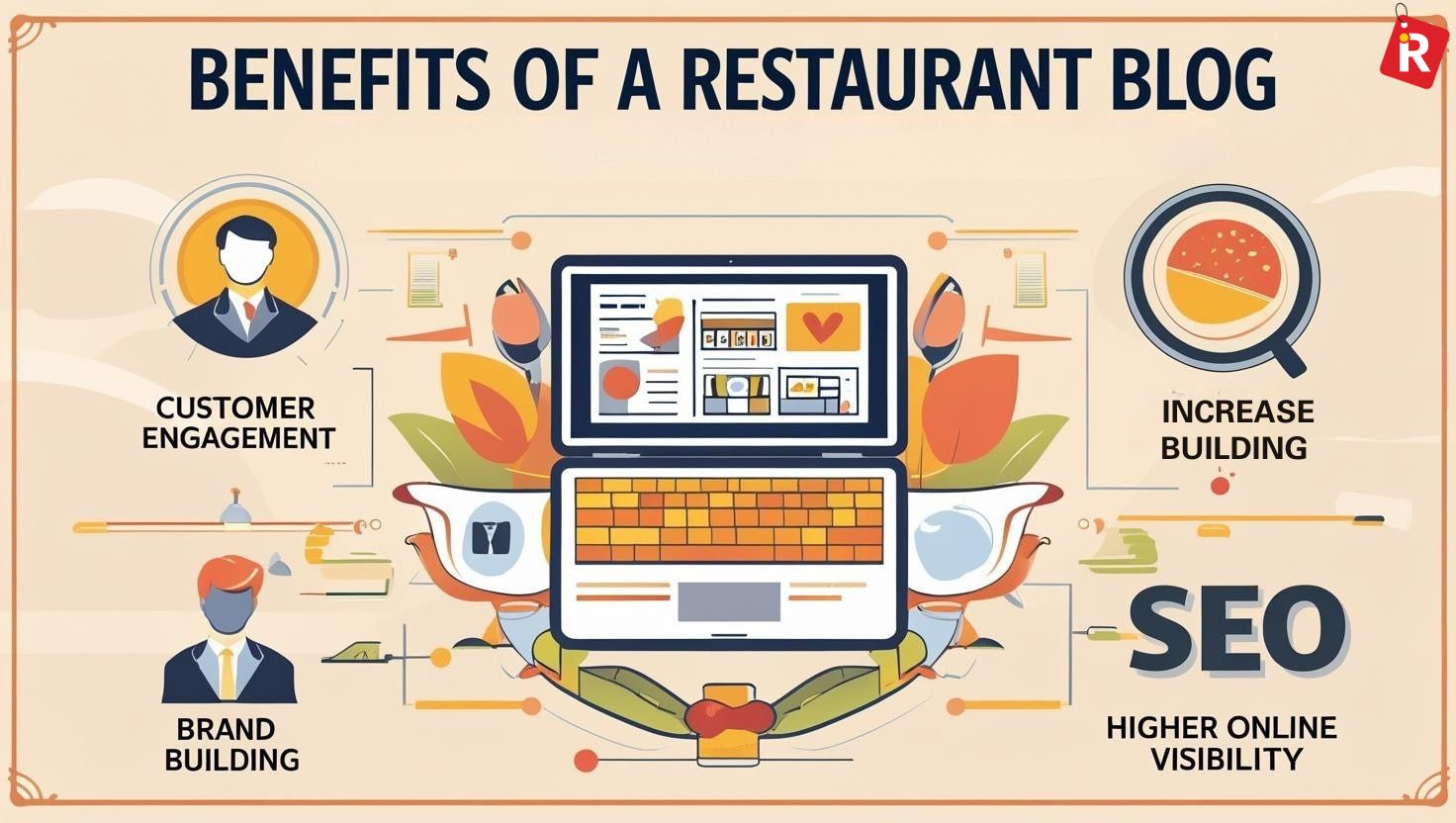
Before we look into how to create a blog, let’s talk about why a restaurant needs a blog.
1. Build Brand Authority & Trust
In an era of limitless options, customers favor brands they respect and trust. You can establish your restaurant as an authority in your niche or cuisine by using a blog. Explain your dedication to using high-quality ingredients, highlight your chef's skill, and share your cooking philosophy. This differentiates you and increases your credibility.
2. Enhance Local SEO (Search Engine Optimization):
In any area, if someone looks for "best Italian restaurant near me" or "family dining options in my area," you want to show up high on their search history. Google has more justification to rank your restaurant higher for these particular searches if it has a blog with important, locally useful data.
3. Forge Deeper Customer Connection:
A blog is your storytelling platform. Tell about the beginnings of your restaurant, the ideas behind your specialties, or even the difficulties and successes of managing a business. Customers can relate to you more emotionally as a result of showing your brand. It turns fans into devoted customers and strangers into fans.
4. Drive Foot Traffic & Reservations:
Getting customers into your restaurant is the ultimate goal of any marketing campaign. By attracting readers with appealing descriptions, announcing special events, and providing clear instructions on how to place an online order or reserve a table, a blog can directly help with this.
What's new: How to create a restaurant menu from scratch
5. Cost-Effective, Long-Term Marketing Asset:
A blog post is a long-term asset, in contrast to sponsored advertisements that stop producing results as soon as your budget expires. After being published, a blog can draw in natural traffic for months or even years, offering steady value without having to pay for each click.
Setting Up Your Restaurant Blog’s Technical Foundation
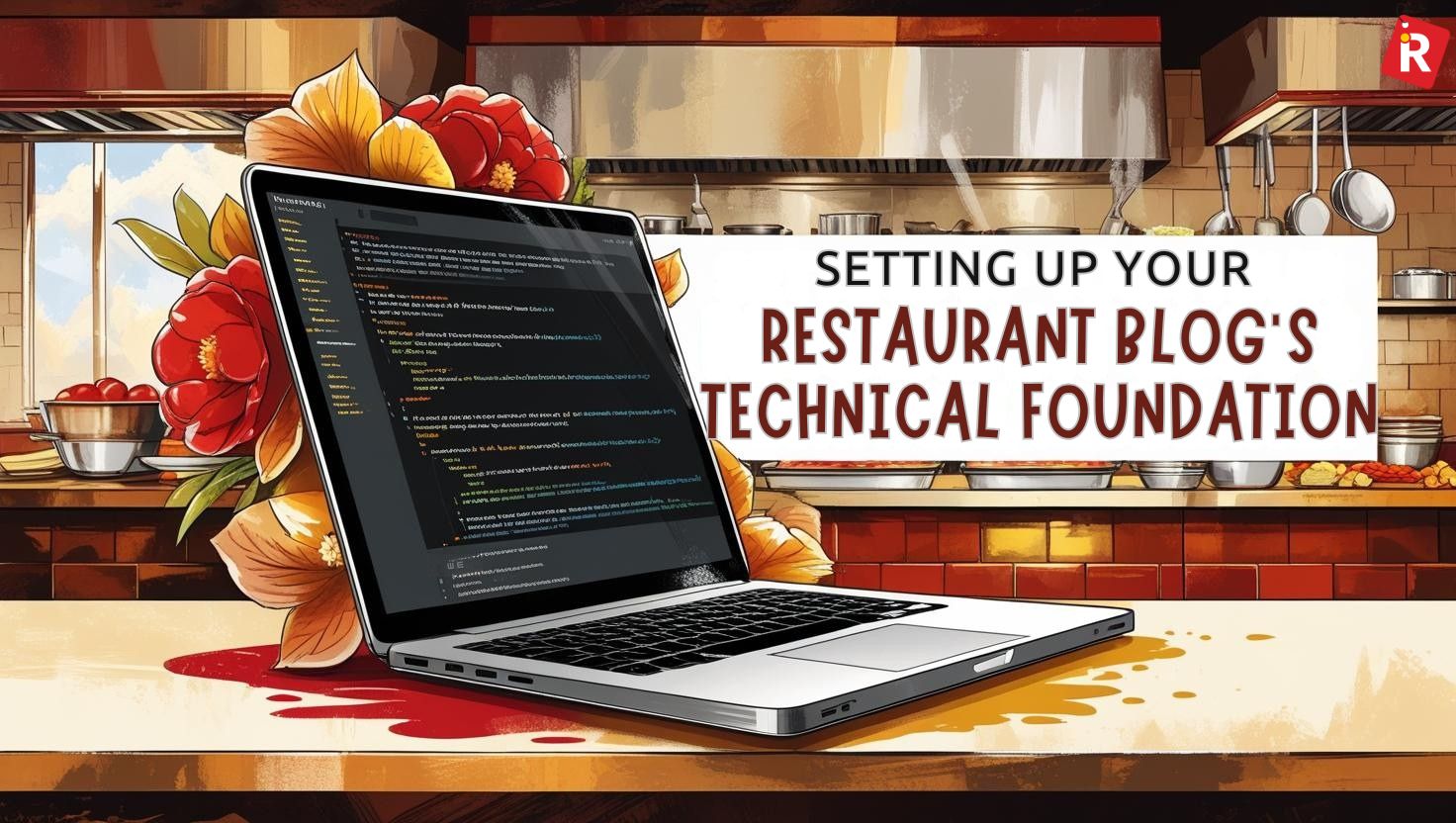
Before you start writing your content, you need to find a platform to publish it. Creating your restaurant’s official website is beneficial, as it will pop up as soon as people search for it.
1. Choose a Blogging Platform:
The first step is to choose a blogging platform. So, we need to find a host for the website. The most popular and safe choice for hosting is WordPress.org, which provides maximum flexibility and SEO control. With themes and plugins, it provides unmatched customization. You also need to purchase a domain name, which will be a part of your restaurant’s main website. Also, do not try to use any free hosting platforms if you're serious about professional appearance and long-term growth.
2. Essential Plugins & Tools:
Install essential plugins after logging into WordPress. For on-page SEO optimization, Yoast SEO or Rank Math are essential tools. Plugins for image optimization, such as Smush or Imagify, will make sure that your gorgeous food photographs don't cause your website to load slowly. Google Analytics is essential for monitoring user activity and website traffic. Remember to include social sharing plugins so that viewers can easily share your work.
3. Design & Branding:
The layout of your blog should reflect the style of the restaurant you run. Make use of the colors, fonts, and general design of your restaurant. Make sure the layout is clear, simple, and easy to use. The majority of users will access your information on smartphones, so your blog must be mobile-friendly. Having high-quality images is essential for a food blog. All these will help in enhancing brand identification, projecting a polished image, and guaranteeing a flawless user experience on all platforms.
Content Strategy To Decide What To Write In The Blog

The main job of drawing in clients begins here. First and foremost, we must create material that is both popular with readers and search engine optimized in order for them to find our website. You may write about topics related to your own restaurant. Customers may learn more about your restaurant as a result. If any potential customers would like to come to your restaurant, then they can research more on your official website.
Know more: What Gen Z Really Eats: 10 High-Protein Indian Meals That Don’t Taste Boring
What type of content can you write about?
By sharing behind-the-scenes stories, such as introducing your chef and their cooking journey, describing a typical day in your busy kitchen, or sharing the interesting origin story behind your signature dish—or even demonstrating how you source fresh produce from local markets—you can establish a genuine connection with people. This increases openness, cultivates confidence, and establishes a very intimate bond with your audience. Additionally, establish yourself as a food expert by providing helpful recipes and cooking advice. For example, you could highlight a special spice or seasonal produce, offer easy Indian comfort food recipes, or even teach a particular cooking technique without revealing your restaurant's trade secrets.
By emphasizing the best family-friendly locations close to your restaurant, demonstrating your dedication to helping local farmers, sharing your community projects, or even discovering best-kept cooking secrets, you can demonstrate your devotion to being an essential part of the community. By showcasing new items and menu highlights, diving further into the ingredients and inspiration behind new meals, celebrating seasonal treats, or experimenting with the ideal beverage pairings and your unique drink menu, you can keep your offers interesting. You can advertise theme evenings, holiday specials, your catering services for local events, or even give your blog readers access to special discounts. Your blog is a great way to advertise events and promotions.
Lastly, create a feeling of community and trust by showcasing your most loyal customers in customer spotlights (always with their consent!), responding to frequently asked questions about your restaurant, or sharing a little bit about your philosophy of customer care. By providing this wide variety of good content, your blog will develop into a thriving center that draws in, interacts with, and eventually turns readers into loyal clients.
Optimizing Your Blog for Search Engines (SEO for Restaurants)

1. Research on Keywords: Determine the search terms that your target clients are really using. Use tools such as Google Keyword Planner or SEMrush to find terms such as "fine dining in my area," "family dinner places," "best [cuisine] restaurant (city)," or "vegan options near me."
2. On-Page SEO Best Practices: Add catchy headlines to your blog. Also, include your primary keyword naturally. There should be a proper summary under 160 characters that will appear in search results, attracting people to click on it. For SEO and accessibility, use eye-catching, appropriate photos with informative alt text. Additionally, provide links to your menu site, reservation page, or other relevant blog posts.
3. Content Quality & Readability: Compose posts that are interesting, educational, and simple to read. To break up text, use bullet points, concise paragraphs, subheadings, and clear headings. Stay clear of nonsense. A conversational tone is what you want. Google rewards important, well-written content.
4. Build Backlinks: Google perceives backlinks—links pointing to your website from other websites—as a powerful indicator of authority. Speak with local websites, local news sources, or food bloggers in your city. Provide guest posts or work together to create content that will attract people to return to your blog.
Check out: Coffee Cocktail Drinks: 10 Must-Try Options to Follow in 2025
Brewing Success: Why 2023 Will be an Year for Speciality Coffee
Attracting Customers Through Your Blog

No matter how many blogs you write, if they are not reaching the customers, then they do not serve any purpose. So, after creating the blog posts, you also need to promote them so that any potential customers can see them.
- Social Media Promotion: Post each new blog entry with attention-grabbing images, interesting captions, and requests for participation on all of your restaurant's social media platforms (Facebook, Instagram, etc.). Take into account targeted, tiny advertising to increase reach.
- Email marketing: Create an email list by signing up on your website or in-restaurant, then send out newsletters regularly that highlight your most recent blog entries, deals, and events.
- In-Restaurant Cross-Promotion: Put QR codes on menus and table tents, teach employees to bring up blog entries, and put up signs pointing existing customers to your web content.
- Google My Business Posts: To help local searchers find your content, link fresh blog posts straight from your GMB page.
- Giveaways & Contests: To increase traffic and engagement, run campaigns that call for viewing a particular blog post (for example, leaving a comment on it to enter a draw).
- Use clear calls to action (CTAs): Include direct instructions in your blog posts. For example, "Book a table now!" "View our menu!" or "Order online!" will encourage visitors to become clients.
Read this: Brewing business over a cup of coffee
A Digital Shop for Storytelling
The establishment of a restaurant blog is an investment in the authority of your brand, your internet presence, and your relationship with your customers. It's a path that calls for dedication, imagination, and a sincere desire to share your food tale. But the benefits are huge. Your restaurant blog will become a potent magnet if you continuously produce insightful, interesting, and SEO-optimized content. This will turn frequent readers into devoted customers, fill your tables, and establish your establishment as a cherished culinary icon.

The menu is unmistakably the heart and soul of any restaurant. It is considerably more than just a list of dishes; it is a precisely produced strategic document that captures your culinary vision, establishes your brand identity, directs your operational flow, and, most importantly, decides your profitability. For aspiring restaurant owners, the task of creating a menu from scratch can be overwhelming. It necessitates a delicate balance of creative flair, keen market knowledge, accurate financial planning, and tireless operational practicality.
Whether you want to build a bustling quick-service restaurant, a pleasant casual dining location, or an elegant fine-dining establishment in a thriving city, a carefully crafted menu is the foundation of your success. This in-depth article will guide you through the procedures required to build a restaurant menu from the start, focusing on the strategic and culinary foundations that ensure both client satisfaction and strong business health.
Read more: Easy tips for saving money as a restaurant owner without sacrificing quality
Section 1: The Strategic Foundation—Vision, Market, and Resources
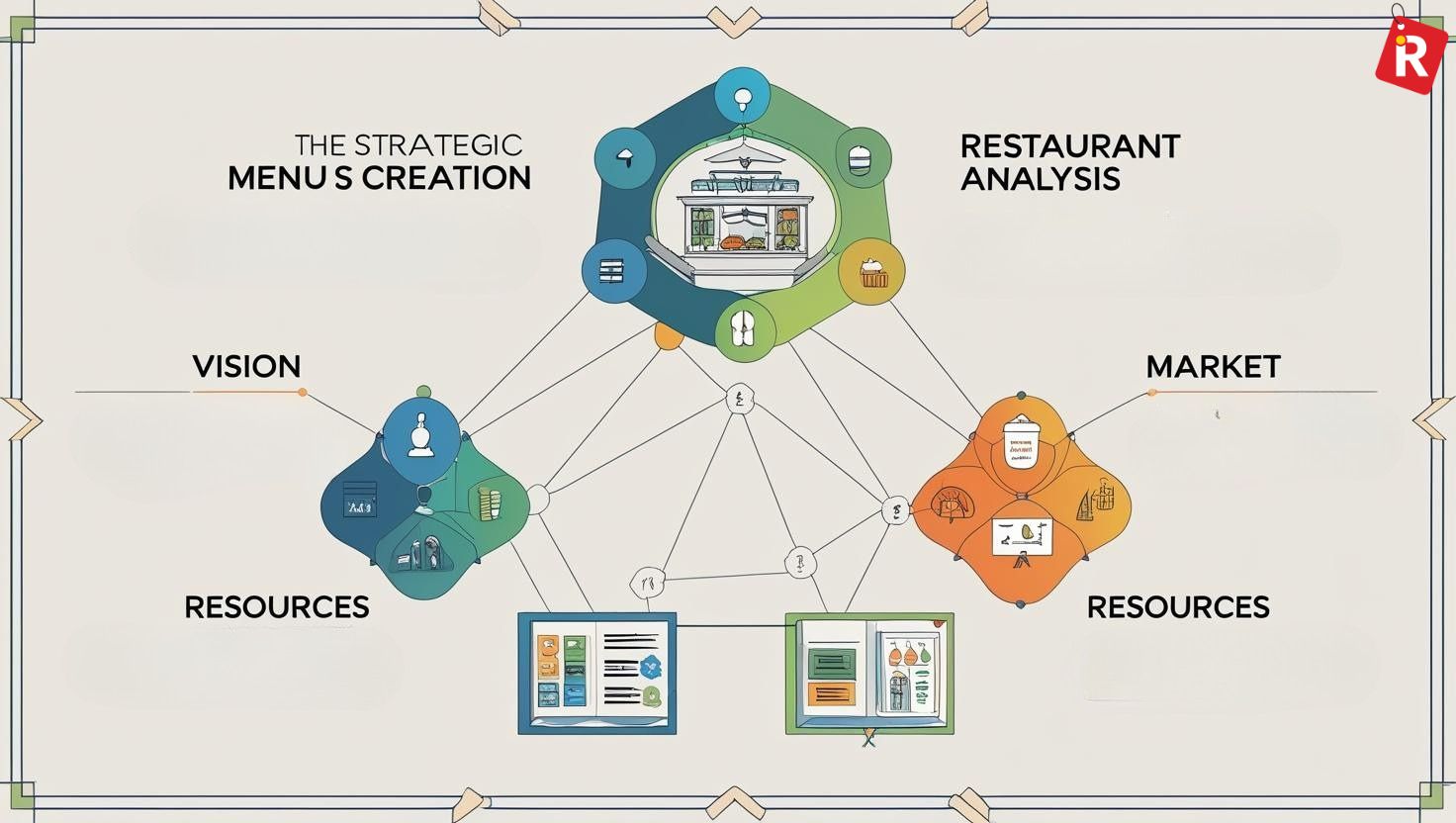
Before you even consider ingredients, you must first define your restaurant's goal and market position.
1. Define Your Restaurant Concept & Vision:
- Cuisine and Style: First, you need to decide what kind of cuisine you want to serve. What types of cuisine will you serve? Will it be true North Indian cuisine, a modern Indian bistro, traditional Italian fare, pan-Asian fusion, or something else different? What is the dining style: grab-and-go QSR, casual family restaurant, or premium dining experience? Consider the local palate in your area, whether it generally favors traditional Indian meals or also develops a penchant for cosmopolitan flavors.
- Unique selling proposition (USP): What distinguishes your restaurant from the other restaurants? Is it a secret family recipe passed down through generations? Are you committed to farm-to-table freshness? An unrivaled commitment to speed? Exceptional value for money? Your USP must be visible in your menu options.
- Target Audience: Who do you want to attract? Are you looking for large families, young professionals, students from local institutions, corporate executives, or a combination? Their preferences, disposable income, and dining habits will have a significant impact on your menu options, portion sizes, and pricing points.
- Desired Experience: Do you envision clients enjoying a short, efficient lunch, a leisurely social gathering, or an intimate and memorable dining experience?
What's new: How can a small restaurant double its customers in 6 months?
2. In-Depth Market Research & Competitor Analysis:
- Competitor Deep Dive: Visit competitor restaurants in your chosen area. What exact dishes do they offer? What are the prices for similar items? What are their best-selling items, and more crucially, what are their deficiencies (e.g., a lack of vegetarian alternatives, a terrible dessert menu, a small beverage selection)?
- Trend Identification: Look into current food trends, both national and local. Are health-conscious alternatives increasing in popularity? Is there a demand for certain regional Indian dishes or international comfort foods? Platforms like Zomato, Swiggy, and Google Maps reviews can provide vital information about local preferences and popular cuisine.
- Gap Analysis: Based on your findings, discover unmet demand or underdeveloped areas in your target market. Is a certain cuisine missing? A price point that is not being properly addressed? Is there an innovative dining experience that does not currently exist? This observed gap could be a tremendous opportunity.
3. Assess Your Strengths, Skills & Operational Capabilities:
- Chef's specializations: What are your head chef's particular specializations, signature dishes, or areas of cooking strength? Utilizing them can offer your cuisine a more authentic and high-quality feel.
- Ingredient Sourcing: What unique, high-quality, and cost-effective local ingredients can you consistently obtain in any surrounding agricultural regions? Prioritizing local produce can improve freshness and appeal, typically at a lower cost.
- Kitchen Capacity and Equipment: Can your kitchen layout and existing equipment (ovens, fryers, prep stations, refrigerators) handle the complexity and volume of the foods you want to prepare? Don't create a menu that requires specialized equipment or more kitchen space than you have.
- Staff Skills: Does your kitchen crew have the necessary abilities and training to consistently and efficiently prepare complex dishes, particularly during peak service hours?
Know more: How Microbreweries Are Redefining India’s Drinking Culture?
Section 2: The Culinary Core—Dish Development and Profitability
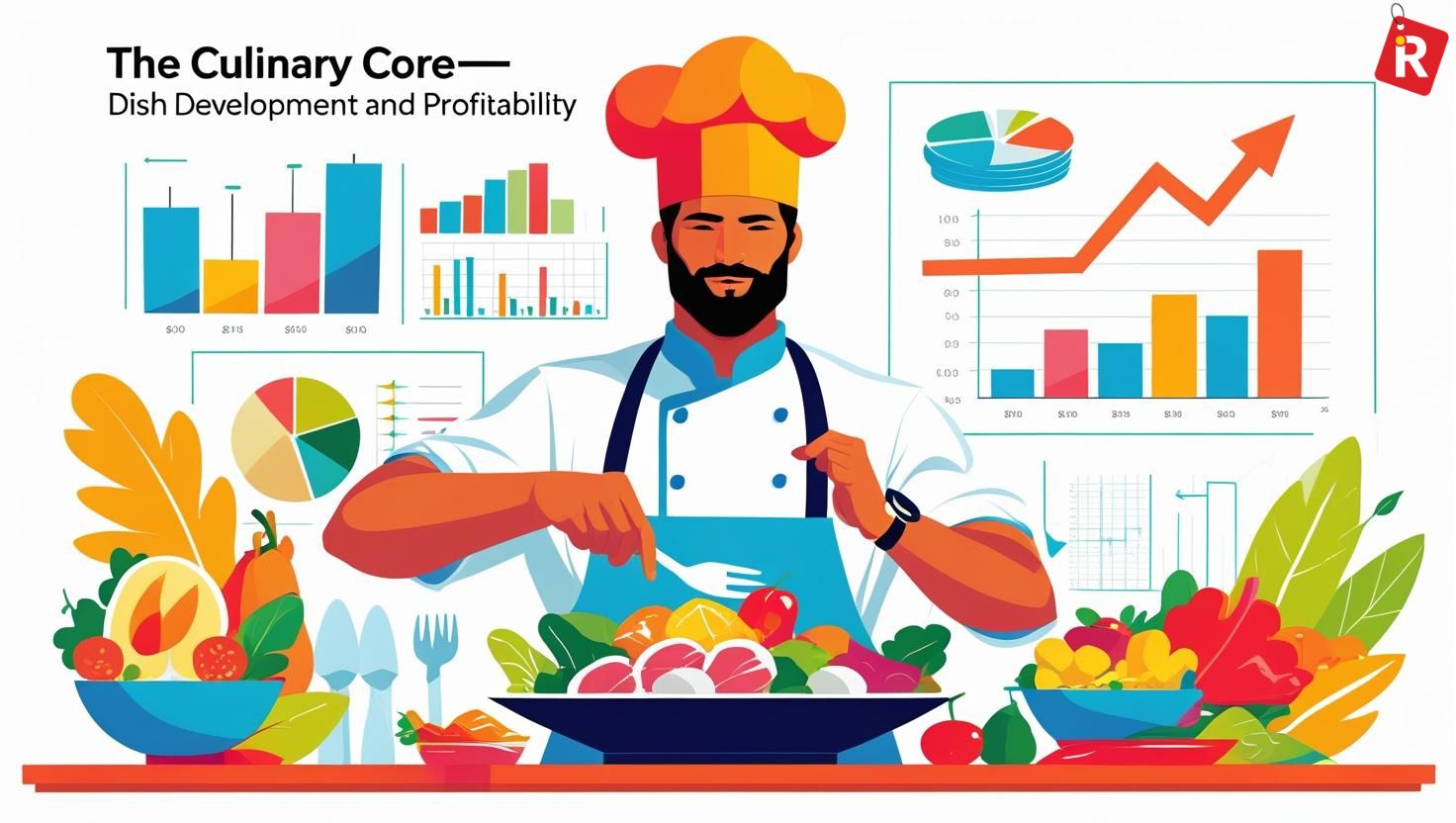
This is where your creative ideas become real and profitable dishes. This section discusses what services you provide and how you can make money.
1. Brainstorm & Curate Dish Ideas (The Creative Phase):
- Broad Ideas: Begin by identifying every possible food that fits with your restaurant's idea, vision, and market research findings. Don't censor thoughts at this point.
- Categorization: Divide these concepts into logical menu categories such as appetizers, soups, salads, main courses (subdivided by protein or cuisine type: vegetarian, chicken, mutton, seafood, pasta, etc.), sides, desserts, and a comprehensive beverage list (non-alcoholic and alcoholic).
- Variety and Balance: Aim for a menu with a wide range of flavors, textures, cooking methods (e.g., grilled, fried, baked, curried), and prices. Consider incorporating seasonal ingredients to increase freshness and allow for dynamic menu updates. Consider typical dietary restrictions (e.g., gluten-free, vegan alternatives) if your target audience requires them.
2. Rigorous Food Costing for Every Single Item:
- Exact Ingredient Cost: For each dish on your suggested menu, methodically calculate the exact cost of every component. This covers not only the primary ingredients but also garnishes, oils, spices, sauces, and even a portion of the cost of common products such as frying oil.
- Determine the target food cost percentage (FCP): Your FCP represents the cost of ingredients as a percentage of the dish's selling price. Typically, full-service restaurants aim for an FCP of 25-35%, although QSRs may seek lower. This proportion, when combined with your computed ingredient cost, will directly determine your selling price.
- Factor in waste and labor (indirectly): While it is more difficult to decide on an amount per dish, consider how much prep effort is required and the possibility of ingredient waste when calculating total profitability.
- Benefit: Ensures that each dish you sell contributes favorably to your desired profit margins, avoiding depleting your funds.
Check out: State of Coffee Prices in Indian Restaurants
3. Recipe Development, Testing, and Relentless Refinement:
- Standardized Recipes: Create accurate, step-by-step recipes for each food. These recipes must include precise measurements (weights are preferable to volumes), detailed instructions, and expected outputs. This maintains consistency no matter which chef prepares the dish.
- Multiple Blind Tastings: Conduct many blind tasting sessions. Include your chef, kitchen staff, front-of-house personnel, trusted friends, and even a small group of potential consumers. To avoid bias, do blind tastings. Collect candid, critical input on flavor, seasoning, texture, visual appeal, consistency, and "crave-ability."
- Iterative refinement: It includes not being afraid to start over. Refine recipes based on feedback until each dish regularly satisfies your quality criteria, fits your concept, and is visually appealing.
4. Operational Efficiency & Ingredient Management:
- Advance Prep: Can dish components be prepared in advance to save cooking times during busy hours? This is critical for ensuring speed and service quality.
- Kitchen Flow Analysis: Do your menus cause obstacles in the kitchen? Are there too many dishes that use the same piece of equipment at the same time? Design the menu so that it allows for a smooth process.
- Shared Ingredients: Make the best use of shared ingredients in various cuisines. This simplifies ordering, lowers inventory holding costs, decreases waste, and aids in negotiating better bulk prices from suppliers.
- Cook Time Management: Balance the cook times for different foods to avoid long client wait times, especially if you want a quick turnaround.
Section 3: Execution, Launch, and Continuous Evolution

1. Comprehensive Staff Training:
- In-Depth Knowledge: Instruct every server, bartender, and hostess on every menu item. They must understand ingredients, preparation methods, common allergens, and recommended pairings (food and beverage) and be able to confidently answer any client questions.
- Taste Sessions: Have your entire front-of-house personnel sample each dish on the menu. This enables them to genuinely recommend items, speak authentically about flavors, and answer questions based on personal experience, resulting in significantly improved customer service and increased sales.
2. The Grand Launch & Initial Performance Monitoring:
- POS System Analytics: Immediately after launch, make full use of your Point-of-Sale (POS) system's powerful analytics features. Track every single item's sales on a daily, weekly, and monthly basis. Which dishes are immediately popular? Which ones are hardly moving? What is your average check size per customer? This data is quite useful for making quick modifications.
- Initial Feedback: Pay special attention to early consumer feedback and informal employee observations.
Read this: Coffee Cocktail Drinks: 10 Must-Try Options to Follow in 2025
Brewing business over a cup of coffee
3. Gather Feedback & Iteratively Refine:
- Active Requests: Actively seek customer input via comment cards, brief QR code surveys, or direct talks with managers. Also, encourage your employees to share client observations.
- Data-Driven Decisions: Combine the qualitative customer feedback with the quantitative sales data. Use these insights to make ongoing, data-driven changes. Do not be hesitant to remove consistently unpopular goods, modify prices, or create new daily/weekly specials in response to shifting demand or ingredient seasonality. This adaptive menu management ensures that your offerings remain fresh, entertaining, and profitable.
Conclusion
Creating a restaurant menu from scratch is a complicated experience that goes beyond basic cooking skills. It's a strategic process that includes thorough market research, exact financial planning, innovative recipe development, and smart operational decisions. By devoting time and effort to each of these phases, you can create a menu that not only attracts consumers but also serves as the true engine of your restaurant's earnings and long-term success. Your menu is a live document, a masterwork that is constantly evolving and meant to keep consumers coming back for more.

For a restaurant, whether big or small, the competition to stay steady in the culinary industry is of utmost importance. The competition is fierce, and it is worse for the small restaurants that can be kicked out of the market at any time. We all know that customers are the biggest factor for a restaurant to keep going. If the customers stop visiting, then it is over for the business, whether big or small. Therefore, for the small restaurants, a surefire way to keep their business going and even generate profits is to increase their customer base. How about making an action plan to double the number of customers in 6 months? What, it seems impossible? It may look impossible to increase, not even double, the customer base within 6 months. But with a proper action plan and joint efforts of all the restaurant staff, it is possible.
A focused six-month plan might be a spark for quick growth for small restaurants negotiating the cutthroat culinary scene, where picky customers have an abundance of options. This article provides a thorough, realistic strategy to enable small restaurant owners to greatly increase their customer base and become a neighborhood favorite.
Read more: How to Start a Restaurant Business in Delhi: Registration, License, Documents & Fee
Benefits of Increasing Customer Base

- Significantly Higher Revenue & Profitability: The increased number of customers means greater sales and a healthier bottom line.
- Improved Financial Stability: If there is a consistent customer flow, then the income will become predictable, and the cash flow will be better.
- Optimized Resource Utilization: It will help to reduce waste that was usually created from the kitchen, staff, and physical space staying idle.
- Enhanced Brand Reputation: A busy restaurant signifies popularity and quality, which in turn attracts more customers.
- Stronger Customer Loyalty: A large customer base means more opportunities to establish relationships and loyal clients.
- Amplified Word-of-Mouth: Word-of-mouth is a great way to advertise your small restaurant.
- Competitive Advantage: A growing customer base helps you stand out in a crowded market.
- Greater Investment Capacity: With increased profits, the restaurant can invest in improving the business.
Monthly Guide To Double The Customer Base Within 6 Months

Month 1: The Foundation—Get Ready for Growth
You have to make sure your present business is in order before you can grow successfully. This month is all about self-reflection and efficiency.
1. SWOT Analysis & Crystal-Clear Goal Setting:
Strategy: Carefully start by analyzing the restaurant’s internal Strengths, like a new, unique dish, prime location, etc. Any Weaknesses, like slow service or limited parking? External Opportunities (e.g., a new residential complex nearby, lack of specific cuisine in the area) and Threats (e.g., a new competitor, rising ingredient costs). Set SMART (Specific, Measurable, Achievable, Relevant, Time-bound) goals at the same time. Do not only want to "get more customers"; strive to "increase daily average customer count from 50 to 100 within 6 months" as well as "boost weekend dinner covers by 30%."
Local Context: This also means knowing the local population (office workers, families, and students), their eating preferences, and the advantages and disadvantages of direct rivals in your particular neighborhood.
2. Optimize Your Core Offerings:
Strategy: Without quality, growth cannot be sustained. Improve your current menu by identifying your best-selling, most profitable items and making sure they are always the same. Remove low-margin or underperforming items with ruthlessness. Pay close attention to your service procedures beyond the meal. Are employees competent, approachable, and productive? Is the order taken accurately? Do dishes arrive on time and in the right condition?
Benefit: Makes sure all new customers get the greatest experience your business has to offer, turning them into returning customers.
Know more: Different Types of Restaurants: Complete Guide for Potential Owners
3. Financial Readiness Check:
Strategy: Know every last rupee of your existing expenses. Consider greater ingredient costs and possibly additional staff hours when projecting your cash flow for increased volume. Determine whether you require a modest working capital flow for early marketing campaigns or small-scale operational upgrades. Investment is necessary for growth.
Benefit: Ensures you have the means to carry out your plan and keeps development from putting a strain on your finances.
Months 1-3: Ignite Your Marketing Engine
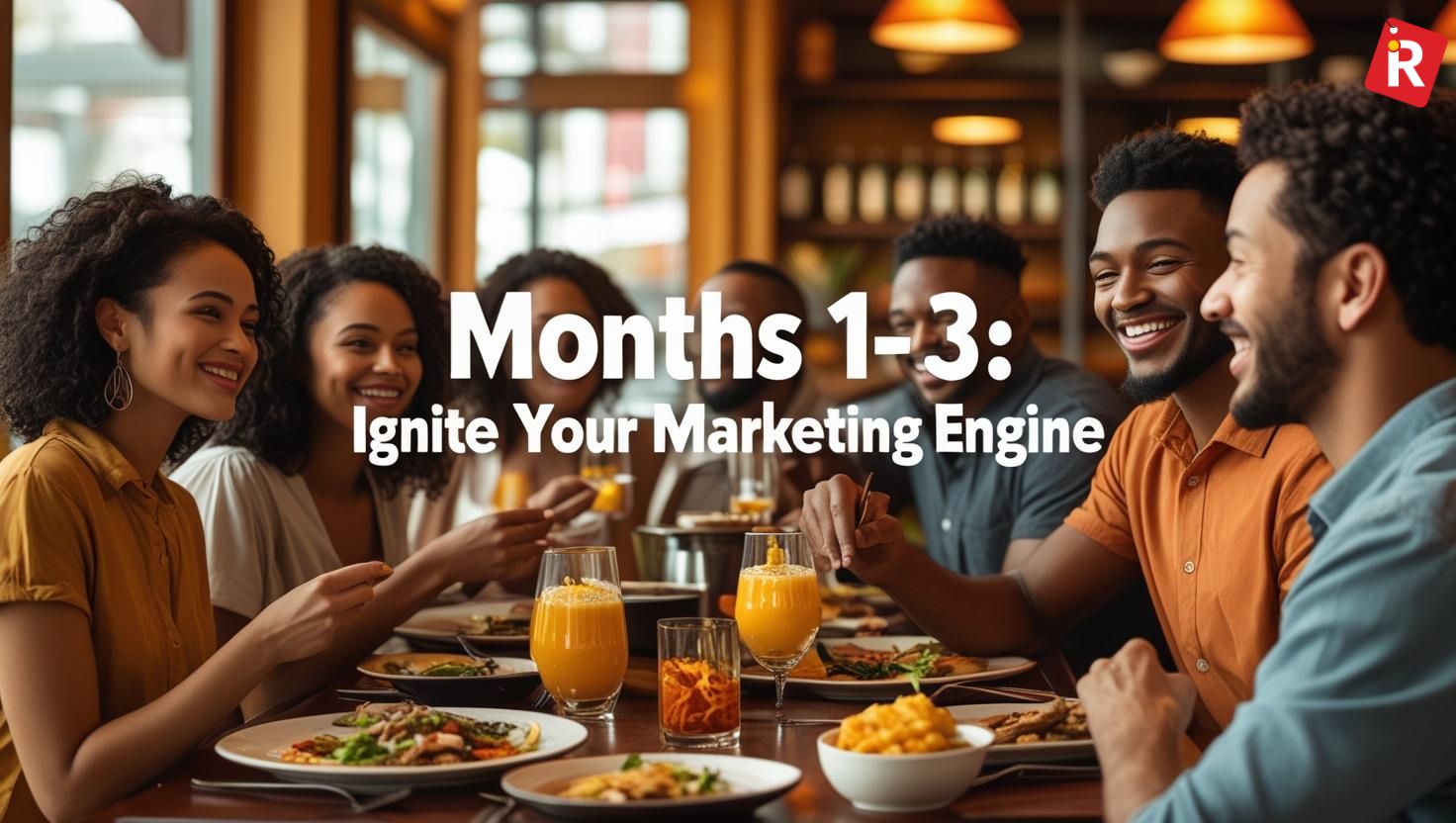
Now that you have a strong base, it's time to actively attract new customers. Concentrate on low-cost, high-impact marketing techniques.
1. Hyper-Local Digital Domination:
Strategy:
- Google My Business (GMB): It is the most effective free local search engine optimization tool available. Make your profile stand out by including beautiful, high-quality images (particularly of your greatest dishes and interior), precise hours, a thorough description, and up-to-date services. Use GMB posts to advertise events or everyday discounts. Importantly, actively seek out, keep an eye on, and reply to all reviews—both good and bad. A timely, sympathetic reaction has the power to convert a critic into a devoted supporter.
- Online Reviews (Zomato, Swiggy, Google Maps): For Indian local diners, online reviews of Zomato, Swiggy, and Google Maps are crucial. Encourage pleased clients to submit feedback in an active way. Teach employees how to respectfully request feedback. Keep an eye on these sites every day and reply to each review. While negative evaluations present chances for service recovery, positive reviews are free promotion.
- Targeted Social Media (Facebook/Instagram Ads): With hyper-targeting, even a small expenditure can provide significant outcomes. Run geo-targeted advertising campaigns that showcase your unique selling propositions, tempting daily specials, or forthcoming events within a 5- to 10-kilometer radius of your restaurant. Make use of captivating, excellent images.
Benefit: Significantly raises your local website's visibility and fosters trust, which will increase walk-ins and reservations.
Read this: 14 High-Protein Vegetarian Breakfasts That Keep You Full for Hours
2. Collaborate & Community Engage:
Strategy: Increase your reach by utilizing current networks.
- Local Business Partnerships: Ask for cross-promotions (e.g., staff discounts for their employees, joint marketing flyers) from local offices, gyms, salons, or retail establishments.
- Local Influencers/Bloggers: To promote genuine reviews and social media mentions, invite local food bloggers or micro-influencers to dine at your restaurant for free on a slow day.
- Community Involvement: Get involved in the community by attending fairs, festivals, or charitable gatherings. Provide samples or erect a modest booth. In addition to introducing your brand to possible new customers, this fosters goodwill.
Benefit: Develops a solid local reputation and reaches new audiences through reliable channels.
Months 2-5: Optimize Operations & Elevate the Experience
Sustaining quality and making every visit smooth should be your top priorities as the number of customers rises.
1. Streamline Service & Speed:
Strategy: Increased efficiency in response to higher volume demands.
- POS/KDS Optimization: Make sure your Kitchen Display System (KDS) and Point-of-Sale (POS) systems are operating efficiently, reducing errors and expediting the order flow from front-of-house to kitchen.
- Kitchen Efficiency: To find and remove obstacles, periodically examine the prep times, cooking procedures, and station arrangement in the kitchen.
- Employee Training: Hold intensive training sessions that promote speed without sacrificing accuracy. Stress good service by anticipating spice needs or pre-bussing tables.
Benefits: It includes shorter wait times, more accurate orders, and increased customer satisfaction, all of which are important for recurring business.
Check out: Top 5 States With the Spiciest Food in India
2. Enhance Ambiance & Comfort:
Strategy: The dining experience can be greatly enhanced by making minor, reasonably priced adjustments. Examine your sitting comfort, lighting (is it too harsh or too dim?), music (is the level and genre appropriate?), and, most importantly, the overall cleanliness of your business, paying particular attention to the toilets. Maintaining a fresh and comfortable dining space requires proper ventilation.
Benefit: Fosters a warm and inviting atmosphere that promotes longer stays, happy memories, and return visits.
3. Exceptional Customer Service & Robust Feedback Loop:
Strategy: Give your front-line employees the authority to handle tiny problems (such as an incorrect order or a minor spill) right away without requiring management approval. Use direct conversations, quick QR code surveys, or comment cards to swiftly seek out diners' opinions. Importantly, address all feedback—especially complaints—in a kind and proactive manner. Reversing a bad experience can result in a more devoted client than one who has never experienced a problem.
Benefits: They include increased client loyalty, favorable word-of-mouth, and priceless insights for ongoing development.
Months 4-6: Scale Smartly & Sustain Growth
As you get closer to your objective, concentrate on improving your products and creating a sustainable future.
1. Refine Menu & Introduce Newness:
Strategy: Keep improving your menu in light of your recent spike in sales data and consumer input. To keep the menu interesting and entice customers to return, add a few intriguing new items or seasonal specials. Take into account a monthly themed cuisine or a temporary "chef's special" to create continuous hype. This demonstrates how creative and changing your restaurant is.
Benefit: Maintains the attraction of your menu, promotes repeat business, and sparks fresh interest.
2. Expand Channels (Delivery/Catering):
Strategy: Now is the time to actively market delivery services (Swiggy and Zomato are the most popular in India) with promotions designed especially for these channels if you haven't already fully optimized them. Make sure the food quality is maintained in your packaging. Additionally, look into small-scale catering options for private parties, corporate gatherings, or nearby offices. During off-peak hours, this makes use of your current kitchen and employees.
Benefit: Diversifies income sources beyond dine-in by reaching clients who prefer to eat at home or events.
What's new: How Microbreweries Are Redefining India’s Drinking Culture?
Easy tips for saving money as a restaurant owner without sacrificing quality
3. Build a Customer Data CRM:
Strategy: Put in place a basic CRM (customer relationship management) system. Use comment cards, online reservations, or loyalty programs to begin gathering client contact information (phone number, email address) ethically. Make use of this information for tailored marketing, such as advanced invitations to new menu samples, birthday greetings with discounts, or special offers for devoted clients.
Benefits: It includes enabling highly customized marketing, creating lasting connections with customers, and offering insightful data about their preferences.
Conclusion
The process of doubling your customer base in six months is demanding but highly satisfying. It requires a collaborative strategy in which marketing campaigns attract new customers, operational excellence maintains existing ones, and an unmatched customer experience turns them into devoted supporters. Your small restaurant may accomplish this challenging objective and become a well-known, cherished dining destination for many years to come by continuously implementing these strategic measures, responding to criticism, and upholding an uncompromising dedication to quality.

It takes a delicate balance of cooking expertise and smart financial sense to run a successful restaurant, whether it's a busy restaurant or a small cafe. Keeping expenses under control without sacrificing the quality that attracts and holds onto customers is one of the most enduring problems faced by business owners. Even little savings can have a big impact on profitability in a sector that is infamous for having narrow profit margins.
The good news is that you don't have to sacrifice your cuisine, service, or atmosphere to save money. Rather, it's about improving procedures, cutting waste, utilizing technology, and making better choices in all areas of your company. The following article will discuss achievable, simple strategies that restaurant owners can use to cut costs without sacrificing—or even improving—their reputation for quality.
The Pillars of Restaurant Profitability
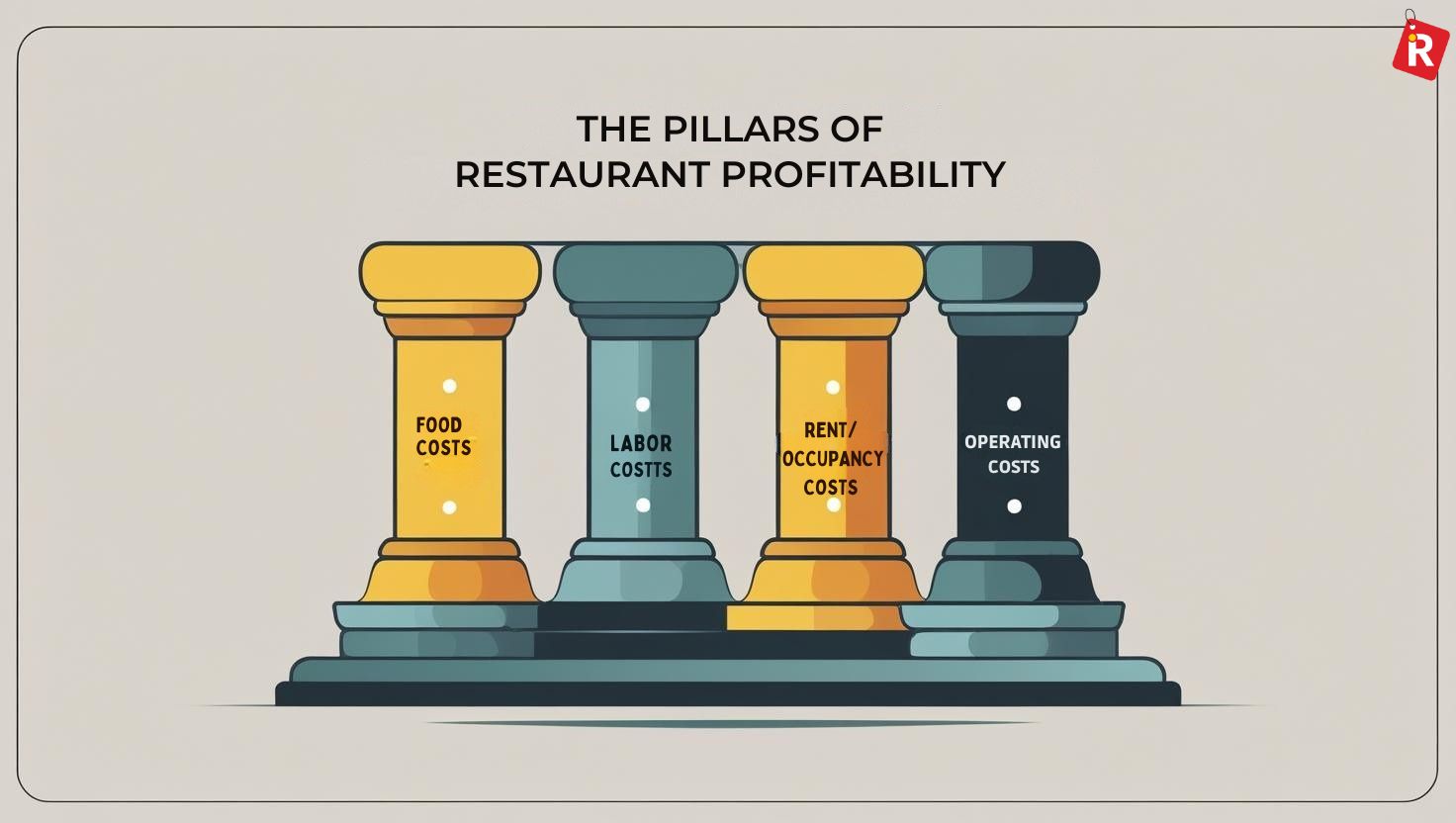
It's important to know where a restaurant's money usually goes before looking at solutions. Typically, the main expense categories consist of:
- Food Costs: The price of the unprocessed ingredients used to make all meals and drinks. This is frequently the biggest variable expense.
- Labor costs: Includes all employees' wages, salaries, perks, and taxes.
- Rent/Occupancy Costs: utilities, insurance, property taxes, and lease payments.
- Operating costs: Includes marketing, upkeep, supplies (cleaning, uniforms, dishes), technology (point-of-sale systems), and administrative charges.
To successfully cut out expenses, these areas must be dealt with wisely.
Read more: Savouring Stardom: What it Takes To be a Celebrity-Owned Restaurant
Comparing Fast Food vs. Fine Dining: Which Is Right for Your Restaurant
Strategic Sourcing and Inventory Management

The largest variable expense is frequently the cost of food. Here, careful management has a direct effect on your financial results.
1. Optimize Your Menu for Profitability
Not all dishes are created equal in terms of profit margins.
The Strategy: The action plan is to regularly engineer the menu. Examine sales data to determine which of your dishes are the most popular and profitable, which are popular but not very profitable, and which are neither. Put your "most popular" first and think about re-engineering or eliminating "low popular-profitable." Is it possible to employ high-volume, common ingredients in a variety of recipes? Can paneer, for example, be used in a main course salad or a special wrap if it's used in a popular appetizer?
Benefit: By concentrating on what sells and generates revenue, you may increase overall profitability without compromising dish quality.
2. Negotiate Smartly with Suppliers
Building strong relationships with vendors can unlock significant savings.
The Strategy: Obtain numerous estimates from different suppliers. If you are able to commit to larger quantities, try to negotiate volume discounts. Discuss flexible payment schedules or early payment discounts. Suppliers may also give you discounts on overstocked items if you maintain regular communication and a positive working relationship. Investigating local farmers for fresh produce can occasionally result in cheaper costs and fresher ingredients for restaurants, improving quality as well.
Benefits: Includes improved supply chain management, a direct decrease in ingredient costs, and frequently higher quality as a result of direct interactions.
Know this: How to Start a Restaurant Business in Delhi: Registration, License, Documents & Fee
3. Implement Rigorous Inventory Management
Food waste is profit waste.
The Strategy: To guarantee that older stock gets used before it expires, implement a First-In, First-Out (FIFO) system for all perishables. For expensive items, do inventory counts every day or every week. To monitor consumption, forecast demand, and reduce overordering, use inventory management software. This aids in spotting possible theft or over-portioning problems as well.
Benefit: Significantly lowers waste and spoilage, guaranteeing that every ingredient is used efficiently.
4. Master Waste Reduction and Repurposing
Every scrap can be a lost rupee.
The Strategy: Educate staff on proper portion management and accurate knife skills to reduce trim waste. Encourage creative item reuse, such as using leftover grilled chicken for a staff dinner or special, stale bread for croutons or breadcrumbs, or vegetable scraps for stock. If there are facilities nearby, think about composting organic waste to possibly lower waste disposal expenses.
Benefits: Includes reduced food costs, an appeal to environmentally conscious diners, and the potential to inspire new menu items.
Simplifying to Increase Operational Efficiency

Costs are greatly impacted by front-of-house and kitchen operations in addition to ingredients.
1. Optimize Staff Scheduling and Training
Labor is a major expense, but cutting staff can hurt service.
The Strategy: Make use of data-driven scheduling tools to match staffing levels to anticipated demand (e.g., more staff during weekend dinner rushes, fewer workers on a calm Tuesday). Employees should receive cross-training so they can perform a variety of tasks, which will increase their flexibility during slower times. Spend money on continual training to improve productivity, portion management, and waste minimization. Reduced expenses for hiring and training are another benefit of high staff turnover.
Benefits: They include lowering needless overtime, increasing worker output, and upholding high service standards.
Check out: Different Types of Restaurants: Complete Guide for Potential Owners
2. Embrace Energy Efficiency
Utilities can be a silent drain on profits.
The Strategy: Replace all of the restaurant's lighting with energy-efficient LEDs. When replacing outdated equipment (such as ovens, refrigerators, and dishwashers), make an investment in ENERGY STAR-rated appliances because they use a lot less water and electricity. Establish strict guidelines for shutting down equipment when it's not in use. To maintain comfortable temperatures without using excessive amounts of energy, make sure that HVAC systems are properly insulated and maintained on a regular basis.
Benefits: They include cheaper monthly utility costs, a smaller carbon footprint, and frequently longer equipment lifespans.
3. Leverage Technology Smartly
Strategic tech investments can yield significant returns.
The Strategy: Invest in a modern Point-of-Sale (POS) system that provides labor management tools, sales analytics, and real-time inventory tracking. To increase kitchen efficiency, decrease errors, and streamline order flow, take into consideration Kitchen Display Systems (KDS). When possible, look into online ordering platforms or the direct ordering feature on your own website to lessen your dependency on third-party delivery apps (and their exorbitant commissions).
Benefit: They include work automation, mistake reduction, useful data for decision-making, and the potential to directly cut labor and third-party costs.
4. Regular Equipment Maintenance
Preventive maintenance saves money in the long run.
The Strategy: Create a regular maintenance plan for all plumbing, HVAC, and kitchen appliances. This goes beyond just fixing things when they break; it's about proactive checks. Train staff or hire professionals to routinely inspect and clean equipment. Check fridge seals, calibrate ovens, and clean filters on a regular basis. Documenting these checks helps ensure consistency.
Benefit: It delays expensive replacements by greatly extending the life of your expensive equipment. More significantly, it aids in preventing costly, unforeseen malfunctions that may occur during busy times and result in lost sales and unhappy customers. Additionally, well-maintained appliances use the least amount of energy possible, which directly reduces your electricity costs and improves your financial situation.
What's new: 14 High-Protein Vegetarian Breakfasts That Keep You Full for Hours
How to design a kid-friendly restaurant that parents also love
Marketing and Customer Engagement: Smart Spending for Growth

Even marketing can be optimized for cost savings and higher results.
1. Maximize Your Online Presence
Digital visibility is crucial, and it doesn't always require a huge budget.
The Strategy: Make sure your Google My Business profile is optimized with correct information, eye-catching images, and frequent updates. Promote and reply to user reviews on websites such as Google, Swiggy, and Zomato. Make use of natural social media platforms (Facebook, Instagram) with captivating content and excellent images that showcase daily deals or behind-the-scenes looks. Organize campaigns with user-generated content or contests.
Benefit: Builds brand exposure, attracts new customers, and nurtures loyalty with minimum direct cost.
2. Cultivate Strong Customer Loyalty Programs
Retaining existing customers is often cheaper than acquiring new ones.
The Strategy: Put in place a basic loyalty program that offers regular diners exclusive discounts, a punch card, or a points system. Obtain client contact information (with permission) in order to market to them via email or SMS about events, birthday deals, or specials.
Benefits: It includes boosting client lifetime value, encouraging repeat business, and generating a steady flow of income during possibly difficult times.
Know more: Top 5 States With the Spiciest Food in India
3. Strategic Menu Pricing and Portion Control
Small adjustments can have big impacts.
The Strategy: Small adjustments to your menu can yield big impacts on profitability. Evaluate your menu prices on a regular basis in light of competitors' prices and changing ingredient costs. If you frequently see plates returned with large amounts of leftovers, think about reducing portion sizes a little bit. However, do this discreetly to prevent lowering perceived value.
Benefit: Lowers food waste and preserves your profit margins without upsetting clients. This dual approach also powerfully protects profit margins, minimizes costly food waste, and ensures customer satisfaction remains high without them noticing a sacrifice in quality.
Conclusion
Understanding cost management is crucial in the cutthroat restaurant industry, particularly in busy cities. But real success doesn't come from randomly cutting costs; rather, it comes from putting in place sustainable, intelligent tactics that improve operational effectiveness and cut waste without ever sacrificing the quality that makes your business unique.
Restaurant owners can successfully reduce their operating costs by concentrating on smart sourcing, strict inventory control, efficient labor management, energy efficiency, and utilizing technology. The goal of these "easy tips" is to create a more robust, successful, and reputable restaurant business that will continue to satisfy patrons for many years to come, not just to save money.

Whether you are running a global Indian brand, be it restaurants or cloud kitchens, there are certain things to focus on while scaling up and to cater the varied audiences. It majorly requires adaptability, authenticity and operational excellence. You have to focus on the core philosophy of the brand to ensure a scalable brand identity among the audiences.
The global foodservice market is around US3.6 Trillion dollars based on consumer spending. Indian brands are popular in US, UAE, UK, Canada and Australia. As per the reports, around 3,600 restaurants are there in London itself and US has 7,000 restaurants approximately with a growing presence in various cities. So, what are the major factors to run a global Indian brand?
Move with Intention
One has to be focused on their journey from the start while following their core vision. If your vision and storytelling is clear, and the brand philosophy is on-point, then eventually one can plan to scale it abroad.
“We’re gently growing our presence in London, while also exploring international markets like the Middle East with care and curiosity. It’s important to us that we move with intention, always putting thought into where and how we grow. Quality means everything, and we believe each new restaurant should feel like a world of its own, created with heart, not just as an extension of a brand,” said Samyuktha Nair, Founder of LSL Capital and third generation restauranteur of The Leela Hotels & Resorts.
Use of Technology
Brands need to invest a lot in digital media for brand and community building. The use of tiktok, instagram reels, YouTube and collaborating with food influencer’s helps in targeting wide set of audiences. Every brand should focus on unique style of storytelling by sharing about the concept or idea behind the curation or their menu to attract more customers.
Adapting to Local Palates
You need to understand the local palate and know your customers. One needs to localize without compromising on the taste, also it would be useful if you meet health safety and labeling officials to know about the regulatory norms.
Highlighting his views, Kallol Banerjee, Founder of Rebel Foods said, “I would recommend having a local team, local connects who also helps in promotions. Know what your game is. There are two things top focus on while running a restaurant. One is if your customer’s comeback, that’s because of the food, everybody who is in food business attracts the customers.
“You need to be clear on deliveries, dine-in and ambience. Have the capability to have very small systems. Get the right people so you can work with your vision, while monitoring the things effectively,” explained Banerjee.
Operational Efficiency
Menu engineering, technology and packaging play an important role. One has to choose the items which have high-yield and long shelf life while monitoring the performances and customer preferences across geographies. Brands have to invest well in packaging so that the products can be transferred from one location to another without any spillage and leaks.
Adaptability is key
One needs to adapt with what’s trending and work as per the customer’s needs. You have to be sure before you come up with a new concept in a specific location.
Rahul Shetty, the Managing Director of The Stables and Peninsula Hospitality Group pointed, “There aren’t many differences in food and beverage business in UAE and in India. But supply chain is different, and sourcing of few ingredients is different as we get it sooner in UAE rather than in India where we need to wait. Adaptability is fast in India these days so even if anyone opens a new concept, people accept it.”
Focus on Financials:
Before going global, brands need to focus on Tier-1 and Tier-2 cities and make their mark. Generally, brands expand with franchise or on their own while focusing on the capital availability and operational control.
Although, one thing which we can surely say is that there is a room full of growth the with changing consumer preferences and Indians moving in global countries. The future will be focused more on personalization, health-conscious and wellness brands, more focus on Indian cuisine in global cities, brands expanding with franchise and expansion of Indian cloud kitchens.

What are the two things kids like the most? We all know kids like tasty food and playing all the time the most. So, if you are thinking about opening a kid-friendly restaurant, then these are the two important factors you need to keep in mind. A kid-friendly restaurant will be visited mostly by families. And families make up a sizable and highly valued sector of the ever-evolving food environment of today. Most parents try to look for dining experiences that satisfy their kids' requirements without sacrificing their own wants for good food, a cozy setting, and some quiet time. The difficulty, though, is finding that fine balance between providing a sophisticated, pleasurable, and stress-free atmosphere for adults and a lively, stimulating space for active children.
Breaking this barrier for new restaurant owners involves more than just providing a kids' menu; it involves creating a whole experience, especially in busy family-friendly areas. A restaurant that is designed for both generations and is genuinely family-friendly can turn a stressful outing into a treasured memory, generating a great deal of repeat business and developing customer loyalty. In order to create a restaurant where children and their parents feel truly welcome and wish to return, this article will explore the fundamental design concepts and useful necessities.
Read more: Easy ways to attract more customers during slow nights
What the Kids and Parents Want

Before we look into the strategy to design a kid-friendly restaurant, we need to take a look at what both parties (kids and their parents) want. This will help us get a better understanding of how to design a kid-friendly restaurant that parents also love:
What the kids want:
- Fun Food Choices: Simple, well-known foods like fries, nuggets, pasta, or tiny pizzas make for enjoyable meal options.
- Exciting Presentation: Food that has an entertaining appearance, possibly in the form of imaginative shapes, vibrant colors, or unusual containers.
- Entertainment on Demand: On-demand entertainment options include coloring sheets, placemats with activities, tiny puzzles, or a special play space.
- Room to Move: Space between tables for wiggles or a safe, visible zone for active play.
- Comfortable, kid-sized seating: lots of booths, high chairs, and reclining seats for simple confinement.
- Easy-to-Use Utensils: Kid-friendly cutlery, sturdy, non-breakable plates, and cups.
- Clean & Accessible Restrooms: The restrooms should be clean and easily accessible, with changing tables and perhaps step stools for smaller users.
What the parents want:
For parents, enjoying a wonderful meal with their kids involves much more than just keeping them occupied. They're searching for an area that lets them eat in peace as well.
- Relaxed Atmosphere: A relaxed atmosphere lessens the stress and shame of parents by allowing small spills or some noise.
- Safety Assurance: Being aware that the space is kid-proofed with non-slip flooring, rounded corners, and sturdy high chairs.
- Cleanliness Is Important: Exceptional hygiene, particularly at the table and in restrooms, reflects overall excellence.
- Efficient service: Quick, attentive service that understands the pace needed when dining with children (e.g., bringing kids' meals out first).
- Comfortable Seating: Options include roomy tables and booths that are suitable for strollers and luggage.
- Adult-Friendly Menu: Good food and drink selections for adults, not just a concession for children.
- Well-considered restrooms: Possibly family restrooms for convenience, as well as tidy, fully stocked changing areas.
Know more: Sustainable Restaurant Practices That Attract More Customers in 2025
Key Design Elements for Kids and Approved by Parents
Here's how you can include thoughtful design features in your restaurants that appeal to both generations:
1. Thoughtful Seating Solutions for All Ages:
Variety is essential: Lots of sturdy, clean high chairs and booster seats should be available. Think about high chairs that are simple to stack and clean.
Embrace Booths and Banquettes: Families love them because they provide a safe environment for kids and make it more difficult for them to get lost.
Family-Sized Tables: Make sure you have enough tables that can easily seat families with strollers and additional luggage.
Strategic Spacing: To facilitate stroller mobility and avoid unintentional bumps, arrange your tables with plenty of room between them.
2. Engaging (and Monitored) Play Areas:
Designated Zone: Establish a play space that is easily recognizable and well-defined. This might be a corner with a big blackboard wall, a soft-play area for young children, or an activity panel installed on the wall for older children.
Supervision-Friendly: Play areas should be positioned in a way that allows parents to easily monitor their children from their tables.
Quality over Quantity: A play area that is small, well-stocked, and maintained is preferable to one that is huge, disorganized, or inadequately supervised. Age-appropriate books in a tiny reading nook can be a peaceful substitute.
Weather Specific: Consider an air-conditioned play area if your restaurant is in a hot or humid climate, where outside play could be uncomfortable during peak summer months.
3. Interactive & Subtly Themed Decor:
Visual Interest: Use paintings, large (but not overpowering) artwork, or even gently themed spaces that capture children's curiosity without offending adults. Consider a travel theme with attractive maps or an amusing forest theme with subdued colors.
Subtle Interactive Elements: Little hands can be occupied without making noise or mess by using magnetic activity boards or wall-mounted puzzles in waiting rooms.
Steer clear of excessive childishness: The design should be entertaining for children but elegant enough for adults. Cartoon characters aren't the only "restaurant theme ideas for families" that can be found.
Check out: How to Plate Food Like a Chef: 10 Secrets Only Pros Know
4. Strategic Noise Management:
Acoustic Solutions: Install sound-absorbing materials such as plush carpets in specific locations, fabric padding on chairs, and acoustic panels on walls or ceilings.
Zoning: Establish discrete zones if at all possible. For adults or families with older children, there should be a quieter dining room and a noisier, more relaxed "family zone" with access to the play area.
Background Music: Play background music at a volume that is both soft enough to facilitate easy conversation and loud enough to cover some crying and conversational noise. A well-designed restaurant's acoustics are crucial.
5. Thoughtful Restroom Facilities:
Basic Facilities: Any restaurant should have spotless, well-kept restrooms, but for families, the details are important. Make sure that both the male and female restrooms have hygienic, reliable baby changing stations (with disposable liners), or better yet, a special family restroom.
Kid-Friendly Access: If money permits, take into account step stools, low-height sinks, or even kid-sized toilets. For parents who are having a hard time with their toddlers, these little things make a big difference.
6. Kid-Friendly Tableware & Menu Presentation:
Fun and Durable: Give kids bowls, plates, and cups that are colorful, long-lasting, and non-breakable. Provide appropriate cutlery that is kid-sized and manageable by little hands.
Engaging Menus: Create a kid-friendly menu that is both aesthetically pleasing and possibly health-conscious. When people are seated, provide them with activity sheets and crayons as a standard offering. These tiny actions convey care and offer instant amusement.
7. Staff Training for Family Service Excellence:
Beyond Design: Outstanding execution is necessary for even the best designs. When dealing with families, teach your employees to be incredibly understanding, patient, and helpful. This includes helping with high chairs, receiving orders for children's meals first so they may be served on time, and paying attention to any spills or requirements.
Empathy and Speed: A server who shows genuine concern by promptly bringing a missing napkin or providing an additional set of crayons improves the whole family dining experience.
8. Welcoming Entrance & Waiting Area:
Accessibility: Make sure your entrance has stairs, open routes, or wheelchair- and stroller-friendly steps.
Comfortable Wait: Provide cozy seating in your waiting area if you expect long wait times. Impatient kids can be kept busy with a few quiet toys, a wall-mounted puzzle, or a tiny, entertaining feature like a fish tank.
What's new: Comparing Fast Food vs. Fine Dining: Which Is Right for Your Restaurant
9. Harmonious Lighting and Ambiance:
Warm & Inviting: Make sure the lighting in the room is warm and welcoming. Stay clear of harsh, institutional-feeling LED bulbs.
Dimmer Controls: Using dimmer switches, you may change the lighting throughout the day to create a more intimate, softer glow for dinner and a brighter, more lively atmosphere for lunch.
Zoned Lighting: By defining different parts with different lighting levels, a room can become more welcoming to all users.
10. "Parent-Approved" Touches: Subtle Sophistication for Adults:
Comfort Is Essential: Parents need comfort, and children need enjoyment. Ensure your adult seating is practical and attractive.
High-quality Offerings: Keep your adult menu and drink selections at a high level. Parents are looking for more than just a location to feed their children; they want a nice meal and a comfortable dining experience for themselves.
Cleanliness is Godliness: Parents greatly value the restaurant's impeccable cleanliness, which is reflected not only in the dining area but also, and particularly, in the restrooms.
Elegant Accents: To avoid making the restaurant seem like a glorified daycare center, use elegant components in your décor that appeal to adult tastes.
Read this: Savouring Stardom: What it Takes To be a Celebrity-Owned Restaurant
Conclusion
Creating a restaurant that appeals to both parents and kids is an excellent example of thoughtful hospitality design. It calls for a dedication to cleanliness, safety, and longevity, together with imaginative features that keep young children entertained and considerate additions that let adults unwind and enjoy their food. Families will love your restaurant if you invest in these multipurpose design strategies and back them up with first-rate, sympathetic service. This ensures your restaurant's long-term success by filling your tables and building a loyal customer base that will come back time and time again.

Actor-turned-entrepreneur Khushank Arora seamlessly blends his two passions—acting and hospitality. The first chapter of his career was dedicated to the screen, where he took notable roles in popular Indian television series such as Miley Jab Hum Tum (Star One), Behenein (Star Plus), Maan Rahe Tera Pitaah (Sony), Yeh Ishq Haaye (Star One), Santoshi Maa (&TV), and Yeh Hai Chahatein (Star Plus).
In 2019, Khushank made a bold pivot, turning his full focus to the hospitality industry. Despite having no formal culinary training, he embraced the journey as a self-taught entrepreneur, driven by passion and an unwavering commitment to excellence. In an exclusive interview with RestaurantIndia, Actor Khushank Arora, Founder of King Kraft Group discusses about his journey, new project, challenges and much more.
Venturing into Hospitality
Driven by a passion for crafting meaningful dining experiences, Khushank aims to build distinctive concepts that leave a mark in the ever-evolving F&B space. He launched his first venture, ‘Same Place, Same Time,’ in 2019, setting the tone for his journey as a hospitality entrepreneur.
His second project, Zeki was launched in April 2025, located in a modern-day mud house in Andheri West, Mumbai. Zeki offers a refined take on Modern European and Mediterranean cuisines, paired with a bold cocktail-forward bar program. The space reflects Khushank’s commitment to thoughtful storytelling—through flavour, design, and atmosphere.
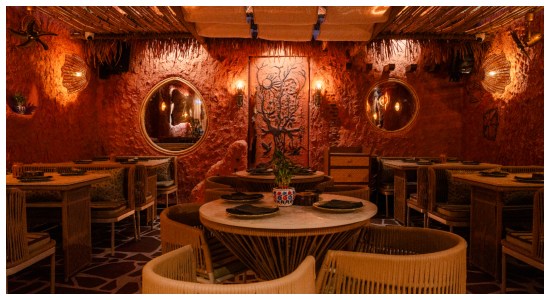
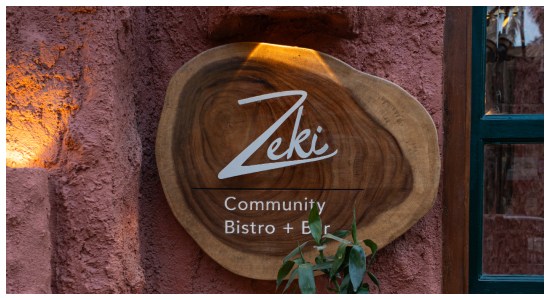
Why Zeki?
Zeki is derived from the Turkish word meaning “intelligent,” “wise,” and “clever,” is envisioned as more than just a bistro and bar—it’s a gathering space with soul. Designed to foster a sense of community, Zeki invites guests to step away from the urban rush and into calm, welcoming haven.
“We are a community bistro bar; our purpose is to bridge people along, tap into their senses and emotions. Our tagline is ‘Gather, Savor’ and belong,” added Khushank Arora.
What’s Unique about it?
The 60-seater space, featuring both indoor and outdoor areas, brings Khushank Arora’s vision of a refined yet functional dining destination to life. “At the heart of the interiors, a striking mural of a ‘mushroom goddess’ symbolizing Earth’s nurturing spirit anchors the room, radiating warmth and wonder. This focal point is complemented by a bar carved from a single monolithic stone, adding a raw, sculptural element to the space,” pointed Arora.
The ambiance is grounded in a soothing terracotta palette, setting the tone for a sensory dining experience. True to its ethos, the space is built using eco-conscious materials such as terracotta clay, rice husk, dried grass, banana fiber and membranes, and Bali cane—all thoughtfully woven into the cob structure and handcrafted furniture, creating a space that’s both sustainable and soulful.
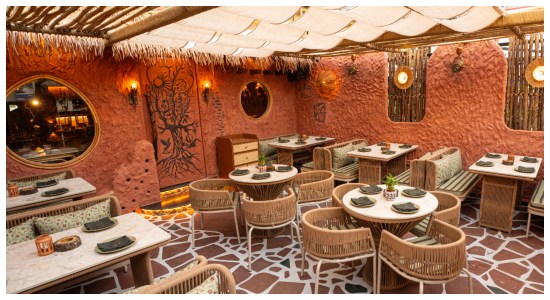
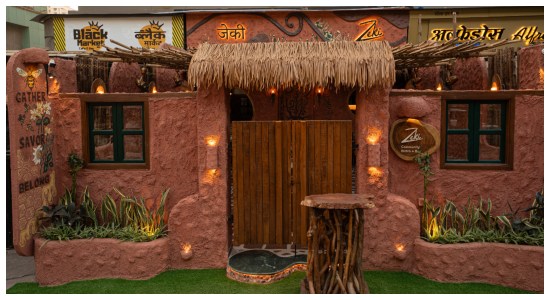
The Target Audience
Our target audience is 20-45 age groups, and we are not targeting above 45yr old. “We are an upscale casual dining restaurant and focuses on being affordable, so the pricing is Rs 1200 for two people. We want to provide sense of value for money,” noted Arora.
What’s in the Menu?
Rooted in European and Mediterranean culinary traditions, the menu is curated by Chef Consultant Vidit Aren. It celebrates the beauty of simplicity with flavour-forward dishes crafted from locally sourced, seasonal ingredients, often rustically roasted or grilled to bring out their natural character. Designed around communal dining, the menu invites guests to share not just plates, but cultural moments and collective experiences at the table.
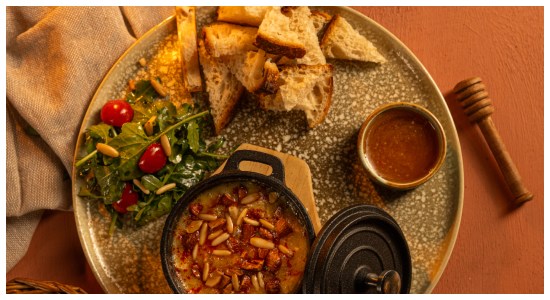
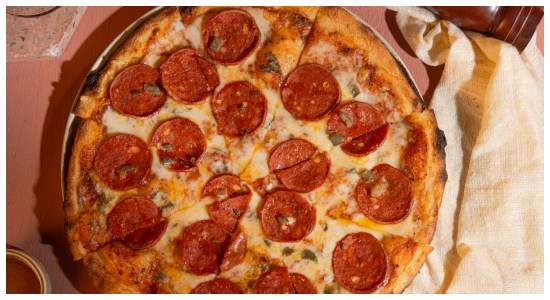
Gather for cocktails
The bar program at Zeki unfolds 10 potent cocktails, crafted with the nuances of modern mixology such as homemade infusions, and clarified and fat-washed derivations.


What’s New Coming up?
Arora’s third venture will be Sarabi in Vagator Goa. This is an experiential dining space which will be launched in September. Sarabi is derived from the African continent. Sarabi is a famous name from the movie, ‘The lion king.’ Simba’s mother’s name was Sarabi.
She was the queen of the jungle. While Sarabi means illusion. The menu in Sarabi will be focused on progressive fusion plate and it’s completely different from zeki. Talking about trends, Arora said, “We don’t go by the trends; we want to come up with something new which stays.”
The Challenges
Licensing issues and staffing was one of the challenges. And building a brand to shape up as your vision is a challenge as well.
Highlighting on his views, Arora shared, “If we don’t get someone as same vision in our team, we instilled with the confidence and train them as per that. We have a specific KRA which we follow, it’s there for every employee. We do follow the SOPs and believe in having an equal blend of tech and human both. “
Celebrity favorites in Zeki
Arora’s Favourites is in the menu. Baked Brie, Swiss Cheese Fondue, 2 Days Air Dried Roast Chicken Leg, Community Boards are unique and his favorites. In Bar menu, Citrus Caravan, Earthern Whisper and Mud stone are my personal choices.

Slow nights are the periods when the restaurants encounter the fewest customers during a day or a week. The gloomy sight of empty tables on a quiet Monday afternoon or a Tuesday evening is familiar to all restaurant owners. In the hotel sector, slow evenings and off-peak times are a constant problem that frequently results in lost income opportunities, misused resources, and wasted labor. However, smart restaurant owners see these times as excellent chances for innovation and calculated attraction of customers rather than unavoidable downtime.
Creatively filling those quiet times can greatly increase your profit line, strengthen your community relationships, and develop loyal consumers for restaurants in cutthroat culinary environments where customers have a wide variety of options. Good news? To do this, you don't need a big marketing budget or a total makeover. Implementing many high-impact tactics is surprisingly simple and inexpensive.
This article will explore practical, budget-friendly ways to transform your slow nights into bustling successes, enhancing your restaurant's vibrancy and profitability.
Read more: Comparing Fast Food vs. Fine Dining: Which Is Right for Your Restaurant
Understanding Your Slow Nights

Before you launch any kind of plan, you need to understand the root of the problem first.
Pinpoint the Patterns: Examine your Point-of-Sale (POS) information. Which days of the week are the slowest regularly? Are there specific times of day when the least amount of traffic occurs? Is it Wednesday night, Tuesday lunch, or Monday dinner?
Examine the Reasons: Take local factors into account. Are there no significant events in the area? Is it a typical day off for local offices? Is it a lull after the holidays? Knowing the 'why' will help you customize your solutions.
You might start implementing focused tactics after you've determined the particular slow nights for your restaurant. Let us divide the tactics according to specific categories so that they are easier to implement.
Know more: What’s Pushing the Growth of Chef-Driven Restaurants
Category 1: Irresistible Deals & Promotions

Although discounts and special offers are timeless bait, it's important to use them strategically and creatively.
Themed Nights & Targeted Discounts:
- Concept: Set aside particular slow-paced evenings for promotions with a theme that targets a certain audience. Consider "Family Meal Deal Wednesday," "Student Discount Tuesday" (particularly if you live close to schools or universities), "Ladies' Night" (discount for ladies), or "Service Industry Sunday" (for people who work weekends).
- How: Provide a special fixed-price menu, a "buy-one-get-one-free" deal on a specific dish, or a set percentage off of certain menu items. Use social media and local connections to spread the word about these weekly restaurant bargains.
- Benefits: It includes drawing in certain crowds, giving people a cause to come on an otherwise calm evening, and cultivating a feeling of community.
Happy Hour Reimagined:
- Concept: Include tempting deals on appetizers, small plates, or even late-night snacks in addition to drinks during your classic happy hour. Think of a "brunch happy hour" on a slow-paced weekend morning or a "reverse happy hour" for late-night crowds.
- How: Pay attention to easy-to-prepare, high-margin products. Place eye-catching advertisements for your restaurant's happy hour specials both online and offline.
- Benefit: Encourages customers to try more of your cuisine and increases traffic during normally slow hours.
Loyalty Program Accelerators:
- Concept: Provide an additional incentive for current members of your loyalty program to come in during slow periods. Provide a unique "loyalty member only" price, early access to new menu items, or extra points on purchases made on a designated slow night.
- How: Use targeted SMS messaging, push notifications via your restaurant's app, or email marketing to directly inform customers about these customer reward programs.
- Benefit: Increases loyalty, rewards current clients, and fills seats by utilizing your most precious resource.
Check out: How to Handle Customer Complaints with Confidence and Care
Category 2: Engaging Experiences & Entertainment
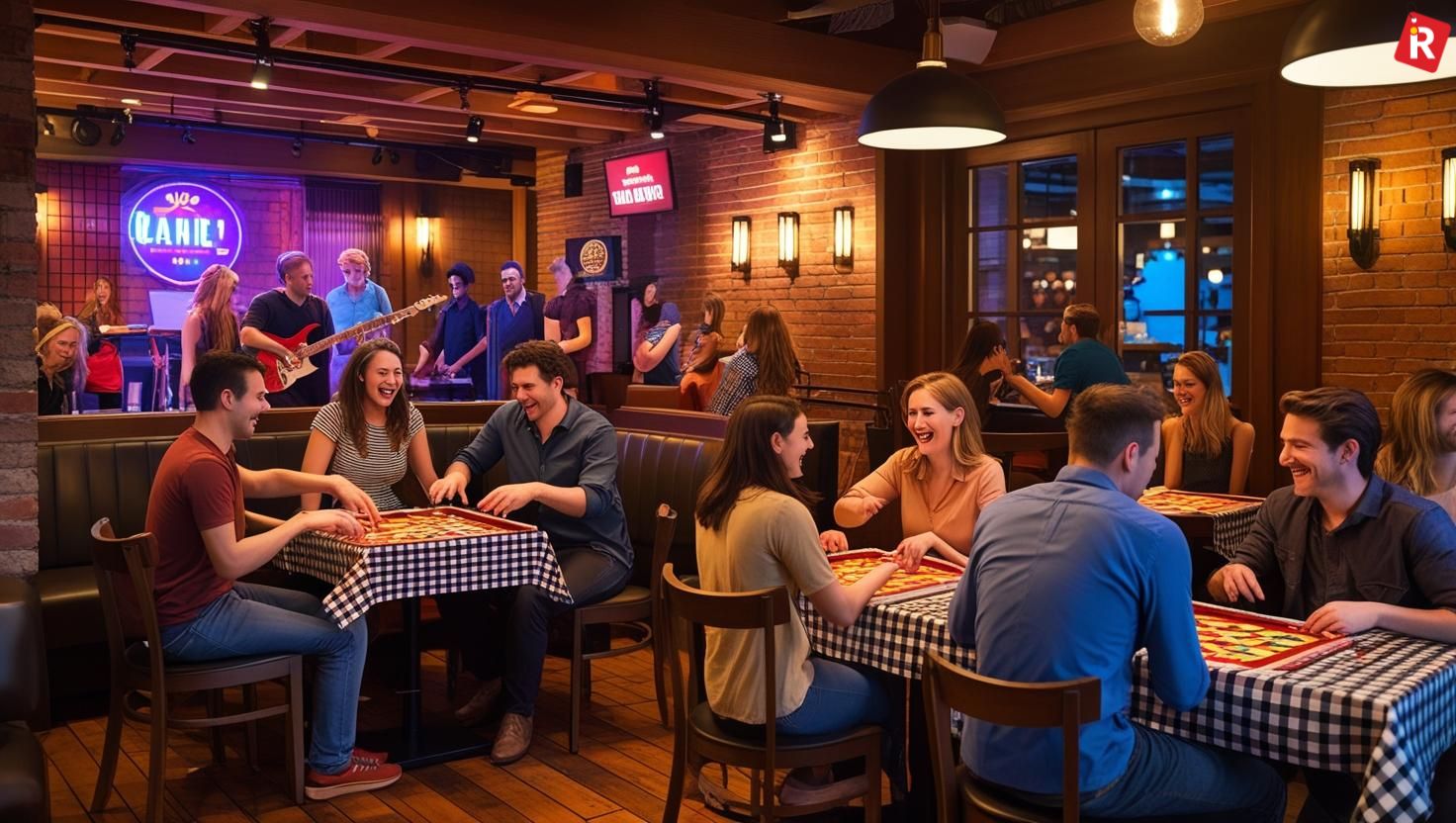
Making your restaurant a center of activity might attract customers looking for more than simply food.
Live Entertainment (Local Talent Focus):
- Concept: Organize open mic nights, stand-up comedy, karaoke, or live music performances (such as jazz, acoustic sets, or instrumental Indian classical). Collaborate with regional artists and performers to add a genuine touch.
- How: Begin modestly with a pair or solo performer. Advertise the particular performers and their showtimes on your local event listings and social media accounts. Seek out live music venues that have experience doing this.
- Benefit: Offers distinctive entertainment value, draws a diverse population, and creates a lively atmosphere.
Interactive Events & Workshops:
- Concept: Plan interactive, entertaining events such as wine or craft beer tastings, cocktail lessons, cooking demos, or food pairings.
- How: You can make it free for diners or charge a nominal fee for participation. These interactive and insightful restaurant classes have the potential to attract new customers.
- Benefit: Presents your restaurant as a community center, promotes social contact, and offers a unique selling opportunity.
Game Nights & Social Hubs:
- Concept: Set aside an enjoyable evening for card game competitions, board game nights, or even video game challenges.
- How: Offer a variety of well-liked board games. Advertise on social media as a laid-back, enjoyable place to meet people. Urge groups to reserve tables.
- Benefit: Promotes a laid-back, welcoming environment for social interaction, making it appealing to younger people or groups seeking a laid-back outing.
Category 3: Digital Presence & Community Engagement
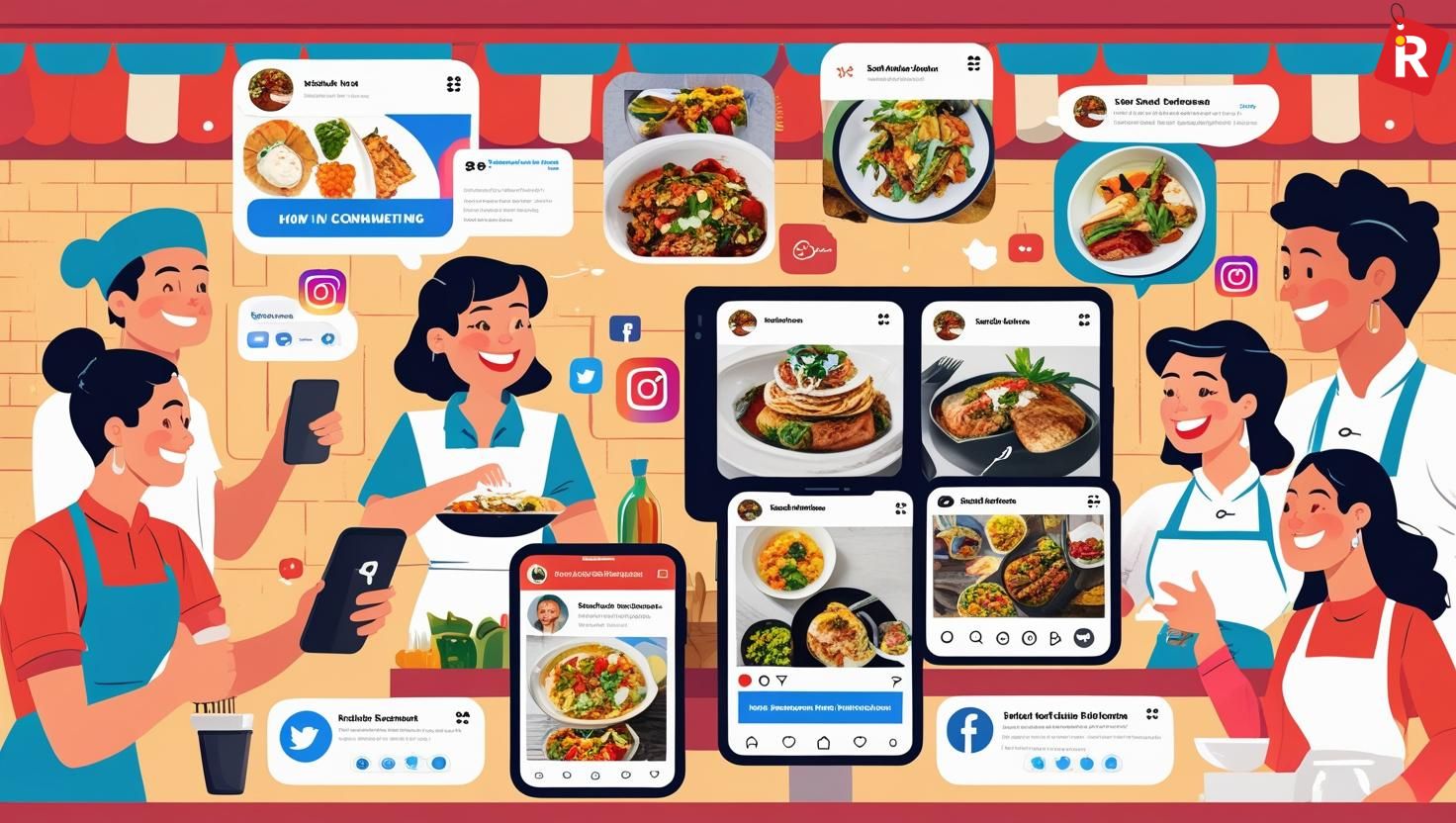
Make use of local relationships and internet channels to promote your exclusive deals.
Hyper-Targeted Social Media Campaigns:
- Concept: Make use of Facebook and Instagram's precise targeting features. Run short, targeted advertising efforts that showcase your events or slow-night offers to those who live a few kilometers from your restaurant.
- How: Make use of geo-targeting, clear calls to action ("Book Your Table Now!"), and eye-catching images (pictures of mouthwatering food and vibrant events). Spend your advertising budget primarily on the days before your slow nights.
- Benefit: Reached potential clients who may be searching for things to do in your locality.
Collaborate with Local Businesses & Influencers:
- Concept: Establish alliances with neighboring workplaces, fitness centers, salons, or other businesses that complement each other. On your slow nights, give their employees special discounts, or trade ads to promote each other. On a slow night, invite food bloggers or micro-influencers from your area for a free supper in return for genuine social media posts.
- How: Get in touch and make a clear offer that will benefit both parties. Working with real, local voices may make influencer marketing for restaurants quite successful.
- Benefit: Offers genuine word-of-mouth advertising and expands customers through reliable local sources.
Optimize Online Listings & Reviews:
- Concept: Your internet presence is your modern showroom. Make sure your listings on Swiggy, Zomato, and Google My Business are up to date with correct hours, appealing images, and any current promotions. Actively reply to every review, whether favorable or unfavorable.
- How: Verify your profiles and claim them. Encourage happy customers to write reviews by gently reminding them to do so after their dinner. Maintaining a positive internet reputation is essential.
- Benefits: It includes increasing your restaurant's exposure in local searches, fostering trust with prospective customers, and having a direct impact on reservations.
What's more: Top 10 Kitchen Must-Haves for New Restaurant Owners
Category 4: Enhancing the Core Offering (Subtle Yet Impactful)
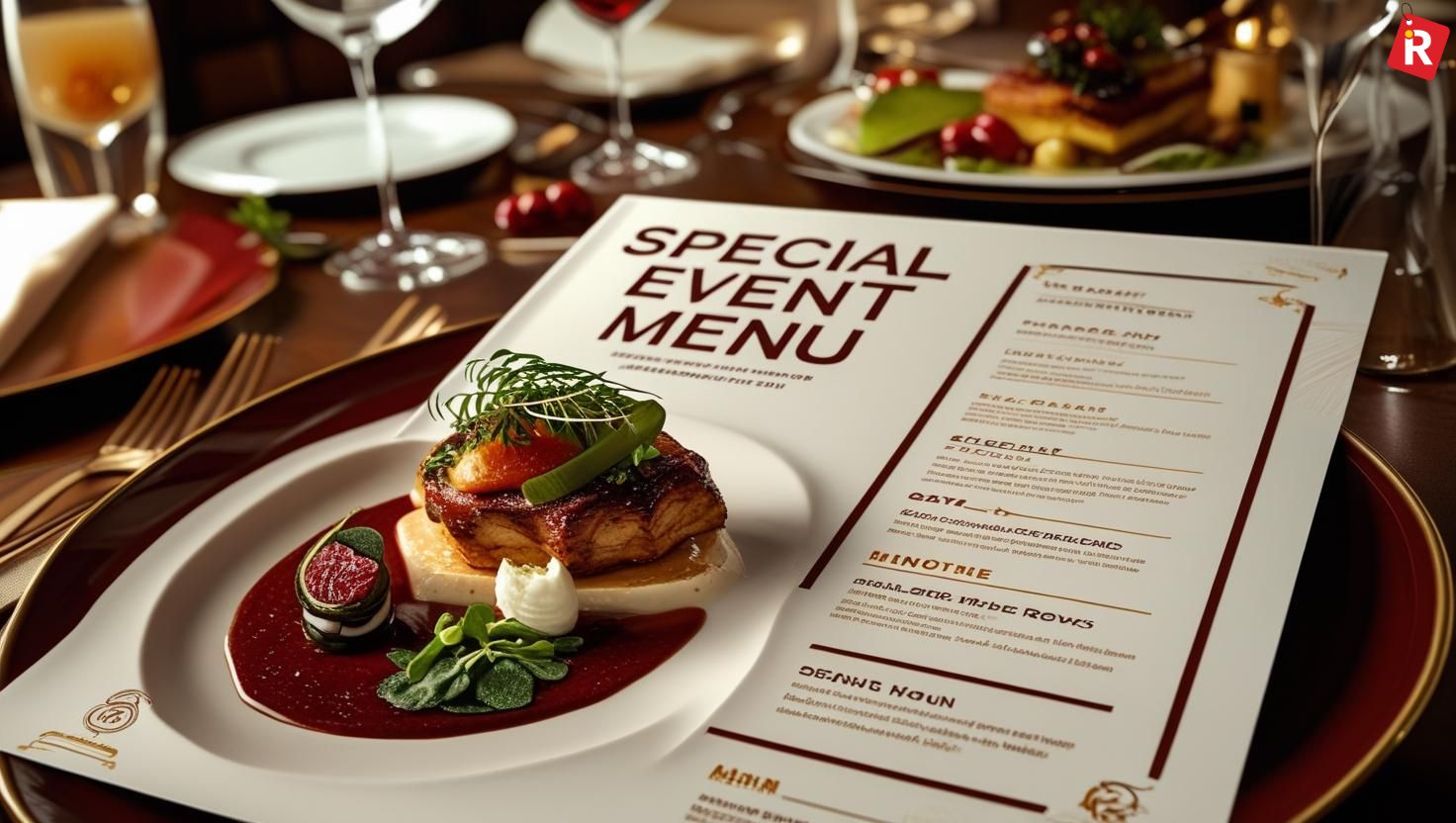
Sometimes, all it takes to draw attention is a small twist on your current offers.
"Sneak Peek" or Tasting Menus:
- Concept: Provide a unique, time-limited tasting menu on a quiet night that is somewhat less expensive than your usual menu. This may be a chef's special, new recipes you're testing, or innovative takes on your best-selling items.
- How: Create excitement and a sense of urgency by marketing it as a special chance to experience something different. Offers for restaurant tasting menus can be a strong appeal.
- Benefit: Converts a peaceful evening into a culinary event by drawing foodies and establishing exclusivity.
Pop-Up Collaboration:
- Concept: For a special slow night, invite a guest chef to provide a special dinner that somewhat differs from your typical menu or offer a unique cuisine. As an alternative, work with a skilled home cook who specializes in a certain cuisine.
- How: Promote this as a brief "pop-up" event, making use of the guest's fan base and crafting a special, one-of-a-kind encounter.
- Benefit: Creates a lot of excitement and may draw in an audience that is ready to try something new.
Embrace Delivery Promotions:
- Concept: Increasing delivery and takeaway orders on slow nights can greatly enhance your overall earnings, even if it doesn't fill seats. Give customers who place online orders during particular times special discounts or free delivery.
- How: Establish and advertise these exclusive deals in close collaboration with well-known Indian delivery services like Swiggy and Zomato. Emphasize the savings on ordering food online.
- Benefit: Increases revenue from customers who want to eat at home and makes the most of the kitchen during downtime.
Read this: Easy Ways to Improve Your Restaurant's Atmosphere Without Spending Much
Turning Lulls into Opportunities
Slow nights are an opportunity for strategic development and creativity rather than a curse. Your restaurant may turn empty tables into bustling centers of activity by identifying your unique off-peak times and combining them with tempting promotions, captivating experiences, focused digital marketing, and minor improvements to your main menu. It calls for originality, dedication, and an in-depth understanding of the needs of your target market. In addition to increasing income right away, success on slow evenings enhances your restaurant's reputation, fosters community involvement, and adds to its long-term economic success in the constantly changing dining sector.

There’s definitely a wave of chef-driven restaurants right now — people want to eat somewhere that has a soul. You can feel the difference when a restaurant is built around a chef’s story or knowledge. It’s no longer just about good food; it’s about food that has a story to tell.
Storytelling plays an important role. These days guests are curious — they want to know why that dish is on the menu, where the inspiration came from, and what makes it special. That curiosity is what’s pushing this trend forward. Around 30% of restaurants are chef-driven restaurants in India.
What’s pushing the growth
Social media, travel, and the growing awareness of global and regional cuisines have all played a role. The major target audiences driving this growth are Millennial & Gen-Z who wants to know who’s cooking their food and what inspires them.
Parvez Khan, Chef & Co-founder at Sozo Izakaya shared that this curiosity is giving chefs like me the platform to build concepts around our own culinary philosophies. From cities like Bengaluru, Mumbai, New Delhi, customers are ready to pay for originality and quality.
“Whether it’s through social media or just the way a menu is written, there’s so much more room to bring your personality to the table — literally. And when that happens, guests respond to it in a big way,” pointed Jawairia Merchant, Owner and Founder, Thai Naam.
What’s Trending?
There’s a definite shift towards regional Indian food with global techniques, smaller curated menus, and ingredient-focused dishes. “At my restaurant, I’ve seen how guests appreciate comfort and familiarity - but with a fresh, creative twist,” said Khan.
Commenting on this, Merchant said, “We’re seeing a huge focus on local produce and regional inspiration — chefs are digging into their roots or discovering lesser-known ingredients from across India and Asia.”
Tasting menus and no-menu experiences are also really picking up — people trust the chef’s journey. And then there’s a whole movement around conscious cooking — reducing waste, sourcing better, doing more with less.
Focus on attention to detail
Every element - be it the plating, the lighting, the ingredients, or even the pacing of the meal - carries intention. It allows the creative freedom and the chance to tell a story through food. It’s not just about serving dishes; it’s about creating an experience that reflects our journey, our vision, and our values. Everything is becoming more experienced led, but in a way that’s personal, not performative.
Personalisation & Creative Freedom
“We train our team to ask questions, to understand the guest, and to tailor the meal around them. That’s where personalisation becomes really powerful — not just customisation for the sake of it, but thoughtful, curated recommendations. As a founder, that creative freedom means everything. You’re constantly evolving, playing with new ideas, but always rooted in your original ‘why,” said Merchant.
Vardaan Marwah, Chef Partner, FARRO said, “Our inspiration comes from Mediterranean and Indian regions where farro grows. Travel informs our menus. Every dish reflects that journey. This freedom lets us build deeper guest connections through storytelling, plating, and personalized experiences.”
The Foreseen Challenges:
The biggest challenge is scaling without losing the soul. Sharing his views, Khan said, “As chefs, we need to build strong systems, invest in training, and surround ourselves with a team that understands and believes in the same ethos.” Consistency is key - but so is keeping the passion alive every single day.
Finding the balance is an ongoing process. Building the right team is another big one — not just in terms of skill, but people who understand the philosophy behind the food. Pointing his views, Merchant said, “And if you’re thinking of expanding, the biggest challenge is: how do you scale something that’s deeply personal? That’s why I think growth has to be thoughtful — it’s not just about opening more outlets; it’s about making sure each space still feels like you.”
To overcome these, many chefs invest in building loyal teams, engaging with their communities through chef’s tables and workshops, and diversifying through pop-ups, branded products, or culinary content.
Chef Stephen Gomes, Co-Founder of Mark's EATERY in Dwarka, Delhi added, “Ultimately, these restaurants go beyond serving food—they represent a chef’s journey, passion, and philosophy, reshaping the way India experiences dining and inspiring a new generation of culinary entrepreneurs.”

In the fast-paced world of restaurants, there are many things that can go wrong. And one mistake, one unhappy customer, can cause damage to your reputation. An overdone meal, a forgotten order, or a lengthier wait than anticipated are all inevitable, regardless of how carefully you plan your menu or train your staff. Although inevitably you will get customer complaints, there is a way to handle them with care and confidence. While these times can be intimidating, especially in the fast-paced environment of quick-service restaurants or the high-stakes environment of fine dining, they are not problems; they are precious opportunities. If handled with genuine care and unwavering confidence, the complaint can be changed from a potential disaster to a sign for improved service, increased customer loyalty, and, ultimately, a stronger reputation for your business.
In this article, we will dive into the art and science of resolving customer complaints and provide practical tactics to enable your restaurant staff to handle unfavorable comments with composure, compassion, and a clear route to converting a disgruntled patron into a devoted supporter.
Read more: Top 10 Kitchen Must-Haves for New Restaurant Owners
The Undeniable Value of Handling Complaints Effectively
Before diving into the 'how,' it's crucial to understand the 'why.' Why invest so much in mastering complaint resolution?
- Customer Retention is Gold: Keeping clients is crucial since a dissatisfied customer is unlikely to come back. In addition to being more likely to return, a customer who receives outstanding customer service is also more likely to become a devoted customer than one who has never experienced a problem. They have personally witnessed your dedication to their happiness.
- Protect Your Brand's Reputation: In the era of instant online reviews (Google, Zomato, and Swiggy), a single unfavorable experience that is made public can seriously harm your restaurant's reputation. On the other hand, a public reaction that shows successful service recovery can actually improve your reputation by highlighting your customer-focused strategy and responsiveness.
- Increased Employee Confidence and Morale: Employees feel more competent, appreciated, and confident when they are given the training and authority to handle problems. This promotes a healthy work environment, lowers stress, and avoids burnout.
- Findings for Operational Improvement: Complaints are a free source of market research. They draw attention to particular areas where your operations may be lacking, such as menu clarity, service attentiveness, or kitchen uniformity. Continuous improvement is fueled by methodically addressing these problems.
- Reducing Financial Loss: Revenue is directly impacted by lost repeat business. Retaining an existing client with efficient service recovery is much less expensive than gaining a new one.
The "CARE" Approach: Confidence & Care in Every Interaction

A balanced strategy that combines real concern with professional assurance is essential to managing complaints successfully. Here is a structure to help your team:
C - Calm and Confident Demeanor:
Tip: It's normal to feel defensive or angry when faced with a complaint. However, maintaining composure is the first and most important step. Breathe deeply, look directly into their eyes, and speak in a steady, calm tone. Refrain from reflecting the customer's dissatisfaction.
How It Helps: Your cool-headedness is contagious; it reduces the tension in the situation and lets the client know that you are in charge and can handle their problem expertly. It demonstrates respect and builds trust.
A - Active Listening and Empathy:
Tip: Don't interrupt the customer while they are speaking. Let them explain their complaint in detail. As they speak, nod, make eye contact, and use verbal affirmations ("I see," "I understand"). To ensure you have gotten their complaint accurately, paraphrase it back to them when they have done so ("So, if I'm understanding correctly, the delay in your main course meant you couldn't enjoy your meal fully?").
How It Helps: The consumer feels heard and respected when active listening is used, and this is frequently a big step in calming them down. By demonstrating that you care about their experience rather than just finding a solution, empathy ("I understand why you'd feel frustrated with this situation") confirms their feelings.
Read this: How to Set a Goan-Themed Restaurant
R - Resolve and Recover with Solutions:
Tip: It's time to take action after you've heard and shown empathy. Express genuine regret for their unpleasant experience, even if it wasn't "your" fault. Next, offer precise, realistic fixes. Give front-line employees a variety of choices they may implement right away, such as swapping out the dish, giving away a dessert, reducing the current bill, or giving a coupon for a future visit. Know when to respectfully escalate more complicated matters to management.
How It Helps: This activity shows that you are dedicated to making sure your customers are happy. By providing a timely and suitable solution, you not only address the immediate issue but also transform a bad experience into a chance to demonstrate exceptional customer service. Customers frequently feel appreciated and respected as a result of this.
Know this: 9 Egg Alternatives for a Post-Workout Meal (That Actually Fuel Your Gains)
E - Evaluate and Learn for Continuous Improvement:
Tip: Each complaint is a piece of information. Record the complaint's details, the solution offered, and any systematic problems found. Examine this data frequently to identify patterns (e.g., frequent issues with a particular dish, a certain shift, or equipment). Utilize this input to improve procedures, modify menu items, or provide focused employee training. Follow up with the consumer (by phone or email, for example) to make sure they are satisfied and to express gratitude for their input, if appropriate and practical.
How It Helps: This planned approach shows a dedication to quality, promotes ongoing operational progress, and stops similar concerns from happening again. The shortest route to a stronger, more customer-focused restaurant is to learn from your errors.
Check out: Easy Ways to Improve Your Restaurant's Atmosphere Without Spending Much
Practical Steps for Front-Line Staff
Since servers, hostesses, and counter employees are frequently the first to receive a complaint, it is important that they are educated.
- Accept the Complaint and Recognize It: "I'm very sorry to hear that. How may I be of assistance? and "Please tell me what happened."
- Listen Without Interrupting: Allow the client to express themselves completely. Don't defend or explain until they're finished.
- Apologize Sincerely and Empathize: Express sincere regret and empathy by saying, "I'm really sorry that this isn't what you expected," and "I understand why you'd be upset."
- Ask Clarifying Questions (if needed): "Could you tell me more about what specifically was off with the seasoning?" is an example of a clarifying question you might ask. — but only after they have completed their explanation.
- Provide Answers That Are Within Your Power: Give preset choices. "I can certainly get a fresh one made for you right away," and "Please allow us to offer you a complimentary dessert."
- Put the Solution into Practice Quickly: Take immediate action after a solution has been decided upon. Resolution delays may offset the benefits.
- Check Back: Quickly check in a few minutes after the answer has been put into practice. "Is everything to your satisfaction now?"
- Document Internally and Notify management: Also report the complaint to your management, including the specifics of the problem and the solution, even if it is immediately fixed. The "Evaluate and Learn" step benefits from this.
What's new: 10 Expert Cash Handling Tips for QSRs
Practical Steps for Managers
In order to resolve complicated complaints and avoid more problems, managers are essential.
Understand When to Intervene: Teach employees how to take on cases involving angry clients, complex billing errors, serious food quality problems (such as foreign objects), requests for a manager, or continuing problems.
Help Your Employees in Private: If you have to step in, never make fun of your employees in front of the client. After addressing the customer's problem, have a private discussion with your staff about what worked and what could be improved.
Investigate Thoroughly: Conduct a thorough investigation by asking the consumer and the involved staff member for the whole story. For clarification, compare with POS data, kitchen records, or CCTV if required.
Look for Wider Solutions: Look past the current specific instance. Try to find out the main cause of the complaint. Is a slow service complaint unique, or does it indicate a problem with worker numbers or kitchen timing? Make adjustments to operations based on these insights.
Coach and Train: Every complaint presents a chance for coaching. Make use of certain occurrences to provide your team members with helpful criticism and more training.
Proactive Online Reputation Management: Actively monitor online review sites (Google, Zomato, and Swiggy) as part of active online reputation management. Quickly and professionally reply to unfavorable evaluations by offering to take the discussion offline. A well-managed internet complaint has the power to transform a public negative into a favorable one.
Conclusion
While it may look like getting complaints from customers will directly impact the restaurant, consumer complaints are important feedback channels, not failures. Restaurants can turn difficult contacts into chances for tremendous growth by approaching them with a strategy based on assurance and concern. A successful, customer-focused restaurant that creates enduring loyalty and shines brightly, even in the most competitive culinary landscapes, requires not only good practices but also investing in staff training, empowering your team, and sustaining a culture of continuous improvement through feedback.

In the highly competitive dining business, having tasty food and a welcoming atmosphere are unquestionably essential for success. However, the standard of a restaurant's service is frequently what really sets it apart and turns a meal into an unforgettable experience. Certain serving methods can greatly improve the guest's impression and comfort level beyond simple efficiency and civility. One of these approaches is the Open-Hand Service Method for restaurants, which stands out for its sophistication, smoothness, and customer-focused philosophy.
Despite its seeming complexity, this elegant method has a significant impact on the guest's feeling of care and the service flow. Using such a technique can be a potent differentiator in a vibrant culinary hub, demanding diners desire both quality and an extraordinary experience. In order to guarantee that your business provides a genuinely exceptional dining experience, this article will carefully examine the Open-Hand Service Method, outlining its fundamentals, the significant advantages it gives to both customers and employees, and offering helpful advice for its efficient application.
Read more: Front Of House (FOH) Vs. Back Of House (BOH): What's The Difference?
What is the Open-Hand Service Method?

The Open-Hand Service Method is a traditional, formal, or semi-formal table service method that is distinguished by a particular way of serving and clearing food and drinks. Fundamentally, it prioritizes efficiency, elegance, and less interference with the visitor's personal space.
The fundamental principles are:
- Food Service & Clearing from the Left: Usually, food dishes are positioned in front of the customer, and the server uses their left hand to remove completed plates from the customer's left side. The server's body should be slightly oriented toward the table, with their arm or hand "open" or facing the table or guests, and they should never be turned away or turn their back.
- Beverage Service from the Right: The server's right hand is used to serve and replenish beverages (drinks, water refills, and wine pours) from the guest's right side.
- Minimizing Reach & Intrusion: The technique is intended to prevent reaching across visitors, especially in front of their face or over their dominant hand.
- Fluid & Silent Movement: Smooth, silent, and nearly undetectable movements are emphasized throughout the process to guarantee that the eating experience (rather than the technicalities of service) remains the major focus.
Open-Hand Service combines the effectiveness of plated service with the sophisticated elegance of traditional methods, in contrast to the more complex French/Russian styles (which involve platter service and more direct server interaction at the table) or the widely used American service (where plated food is delivered from either side). It all comes down to accuracy, consideration for others' personal space, and a higher standard of professional serving methods.
Advantages of Open-Hand Service

There are numerous advantages to using the Open-Hand Service Method that improve both the customer experience and restaurant operations' efficiency:
Enhanced Guest Comfort & Minimized Intrusion:
- Natural Flow: Right-handed folks make up the majority. By serving from the left, the server can avoid touching the customer's dominant hand, which may be resting or in use. This allows the diner to flow naturally and unhindered.
- Reduced Disruption: The server can minimize interruptions to conversation or dining pleasure by approaching and withdrawing from a consistent side with an "open" posture. This also reduces the amount of elbow-to-table contact and bending over the guest.
- Clear Communication: A pleasant and predictable dining experience results from a consistent approach to service, which lets guests expect engagement.
Improved Server Efficiency & Ergonomics:
- Streamlined Workflow: A standardized, predictable workflow is produced when all servers are trained using the same technique. This consistency decreases mistakes, speeds up during peak times, and lessens delays.
- Improved Control & Balance: By using the left hand for the left side and the right hand for the right side (for drinks), one can improve control, stability, and balance while lowering the risk of spills or mishaps.
- Minimizes Uncomfortable Motions: The technique is ergonomically sound, minimizing awkward body postures, twisting, and reaching that, over time, may cause severe fatigue or injury.
Know more: 10 vegetarian foods that are healthy and suitable for Fasting
Elevated Perception of Professionalism & Elegance:
- Polished Image: Open-Hand Service's fluid, accurate motions exude professionalism and meticulous attention to detail. Even in more informal dining settings, this instantly improves the perception of your business and gives it a more sophisticated feel.
- Consistent Standard: A consistent, dependable brand experience is created when all employees uphold the same high standard. Trust and loyalty are fostered when guests come to expect a specific degree of service excellence.
- Attention to Detail: Paying attention to details lets customers know that your restaurant is concerned about more than simply the cuisine during their meal. This methodical approach demonstrates your dedication to providing exceptional hospitality.
Better Hygiene & Safety:
- Less Cross-Contamination Risk: Theoretically, the risk of cross-contamination is decreased by keeping food and drink service on separate sides and making sure the server's hands are always turned away from the food when they are being placed or taken away.
- Fewer Spills: Careful, controlled motions greatly lower the possibility of unintentional spills, enhancing worker and visitor safety.
- Guests Feel Safer: Customers feel safer because waiters aren't reaching over their plates or faces, which makes them feel more at ease and clean.
Seamless Communication & Teamwork:
- Clear Signals: This technique produces clear nonverbal cues when used in all FOH training. The seamless and orderly flow of the dining room is facilitated by servers who are fully aware of where their coworkers will be entering or leaving.
- Orderly Flow: Open-Hand Service's natural orderliness helps restaurants run more efficiently by avoiding traffic jams and crashes, particularly in crowded places.
Read this: What makes a great Sit-down restaurant?
A Step-by-Step Guide for Restaurants to Implement Open-Hand Service

Although implementing the Open-Hand Service Method demands dedication, the results in terms of restaurant statistics related to customer satisfaction are great.
1. Thorough Staff Training Is Essential:
- Theory First: Start by outlining the advantages of this approach for customers, employees, and the restaurant's reputation. Gaining an understanding of the reasoning promotes buy-in.
- Practical Drills: Conduct comprehensive hands-on training sessions using practical drills. Play out serving and clearing scenarios. Pay attention to the 'open hand' stance, tray carrying, good posture, and plate handling (thumb on the rim, never on the food).
- Practice Silence & Grace: Emphasize quiet, flowing motions. Plates must be positioned and taken out carefully, without scratching or clanking.
- Consistency is Key: To guarantee a consistent restaurant service style, all servers—new and experienced—must get the same rigorous training.
2. Master the Table Approach & Posture:
- Consistent Side: When serving and clearing food, always approach a guest from their left side; when serving beverages, always approach them from their right side.
- Stand Slightly Behind/to the Side: Stand a little to the side or behind the visitor to show respect for their personal space by avoiding direct eye contact.
- "Open" Body Posture: Maintain your body at a little angle to the table, with your palm facing the table or a visitor and your serving arm slightly bent. Don't turn around.
- Polite Announcement: "Excuse me, sir/ma'am, your [dish name]" or "May I clear this for you?" are suitable, quiet, and respectful expressions.
3. Serving Food (Left Side, Left Hand):
- From the guest's left side, carefully slide the dish onto the table using your left hand.
- Make sure the dish's focal point or major protein faces the visitor.
- Gently remove any cloches or plate covers that are being used from the guest's left side as well.
4. Clearing Plates (Left Side, Left Hand):
- Go to the left of the customer.
- Gently remove the completed plate with your left hand.
- Develop the ability to silently and efficiently stack plates, balancing them on your forearm. Make sure the plate is collected together with all used silverware.
Check out: Top 10 best appetizers at Indian Restaurants
5. Serving Beverages (Right Side, Right Hand):
- Always keep multiple glasses on a sturdy, clean tray.
- Go to the right of the customer.
- Pour the drink or set the glass on the table with your right hand. Present the bottle and pour from the right while serving wine.
- Before serving, discreetly confirm the order.
6. Replenishing (Right Side, Right Hand):
- Approach from the guest's right side and refill water, top off wine glasses, or offer more drinks.
- Refrain from making unnecessary interruptions to the talk or reaching across the table.
7. Continuous Practice & Refinement:
- Incorporate brief role-playing exercises in pre-shift gatherings.
- Managers should regularly monitor service and provide employees with prompt, helpful feedback.
- Encourage employees to be conscious of their own body language and table manners.
- Aim for a nearly undetectable presence and seamless, quiet transitions.
8. Equipping Your Staff:
Assemble the proper serving trays, making sure the plates are suited for this technique, and make sure the uniforms allow for elegant, easy mobility.
What's more: 8 Unique Flavors of Rajasthani Street Food to long for
Conclusion
More than just a collection of guidelines, the Open-Hand Service Method for Restaurants is a philosophy of service that puts the comfort, productivity, and general impression of professionalism of the customers first. Restaurants can raise the bar for the dining experience by adopting its principles, carefully educating their employees, and continuously implementing its methods. Investing in this sophisticated technique will show a deep dedication to hospitality excellence, turning a simple meal into a memorable event and greatly enhancing your restaurant's brand and reputation.

The customer frequently perceives the magic of a flawlessly executed dining experience as being effortless. A friendly greeting, an excellent meal, and flawless service—all of it seems to come naturally. However, behind this well-polished exterior lies a sophisticated, dynamic process—a painstakingly planned dance between the Front of House (FOH) and the Back of House (BOH), two separate but closely related worlds. Anyone hoping to create, run, or simply enjoy a successful restaurant must have a solid understanding of this fundamental difference; it is not merely academic.
The successful cooperation of these two teams determines everything from customer pleasure to operational effectiveness and, eventually, profitability in the busy restaurant industry of India and, in fact, the entire world. By July 2025, every facet of restaurant operations will need to be precisely calibrated to meet the demand for outstanding dining experiences. This article will carefully dissect the distinctions between Front of House (FOH) and Back of House (BOH), examining their distinct roles, duties, and innate difficulties as well as—most importantly—their mutually beneficial relationship, which is the lifeblood of every successful restaurant.
Check out: How does social proof help to brand your restaurant?
The Restaurant as a Dualistic Organisation
Think about a large-scale theatrical production. The actors, the set, the lighting, and the direct audience connection are all examples of the "Front Of House" being similar to the stage and the performers. On the other hand, the backstage crew, which includes directors, producers, costume designers, lighting technicians, and stagehands, is known as the "Back Of House." They all put in a lot of overtime behind the scenes to ensure that the stage show is faultless.
The same is true in a restaurant. Directly interacting with consumers and overseeing their immediate experience, the FOH is the public face. The product that the FOH delivers is created in the BOH, which is the engine room where the culinary magic takes place. Both are equally important; without the other, neither can operate efficiently or lead to restaurant success. The productivity of the restaurant as a whole is increased by this clear division of labor, which permits specialization and guarantees that highly qualified workers concentrate on their primary skills, such as creating the ideal drink or presenting a beautiful dish.
Read more: 7 Ways Employees Steal from Restaurants
Front Of House (FOH): The Face and Voice of the Restaurant

All employees who deal directly with patrons or work in the restaurant's public spaces, such as the dining room and bar, are referred to as the Front Of House (FOH). They serve as the restaurant's first point of contact, brand representatives, and direct facilitators of the patron experience.
Key Roles & Responsibilities:
- Hosts and hostesses: Frequently the first point of contact, they greet customers with warmth, handle waitlists and bookings, show diners to their tables, and occasionally answer basic menu questions. They must be able to control flow and initial impressions.
- Servers/Waitstaff: The mainstay of the FOH crew, servers and waitstaff are in charge of receiving orders for food and beverages, accurately relaying them to the BOH, serving food and beverages, cleaning tables, taking payments, and generally responding to all of the needs of the guests. They are also essential for guaranteeing guest happiness and upselling.
- Bartenders: Making drinks, keeping track of supplies, accepting orders from waiters and customers, and giving those seated at the bar a special experience.
- Runners and bussers: Support positions essential to productivity. While runners bring hot, fresh food from the kitchen to the appropriate tables and frequently engage in brief conversations with patrons, bussers quickly clean and reset tables.
- FOH Managers: Keep an eye on the whole FOH business. Staff training, scheduling, handling client complaints, cash operations management, atmosphere (music, lighting), and upholding cleanliness standards in public spaces are among their duties.
Primary Focus: Delivering an outstanding customer experience at the restaurant is the FOH team's top priority. This includes offering excellent hospitality, optimizing sales through efficient service, preserving the intended atmosphere, making sure that service is accurate and timely, and expertly handling any problems that may come up on the spot.
Key Challenges: FOH positions can be extremely taxing. Employees must have encyclopedic knowledge of the menu, deal with a variety of clients (some demanding, some lovely), endure high levels of stress during rush hours, and have a large amount of physical endurance due to their constant standing. Finding a balance between quick service and individualized attention is the difficult part.
Essential Skills: Outstanding verbal and nonverbal communication abilities, strong interpersonal skills, creative problem-solving, outstanding order and guest preference memory, calm under pressure, sales smarts, and keeping a polished yet approachable look.
What's new: What makes a great Sit-down restaurant?
Back Of House (BOH): The Engine Room of Culinary Creation

All of the employees who operate behind the scenes, mostly in the kitchen and storage rooms, are referred to as the Back Of House (BOH). They are the innovators, the unnoticed heroes whose painstaking labor guarantees each dish's safety, quality, and consistency.
Key Roles & Responsibilities:
- Executive Chef/Head Chef: The head chef or executive chef is in charge of the kitchen. In charge of creating the menu, hiring, training, and scheduling the entire kitchen crew, making sure the cuisine is consistent and of high quality, keeping food expenses under control, and overseeing inventories.
- Sous Chef: The executive chef's second-in-command is known as the sous chef. They supervise line cooks, keep an eye on everyday kitchen operations, make sure recipes are followed exactly, and cover for the head chef when needed.
- Line Cooks (Station Chefs): The core members of the kitchen are the line cooks, often known as station chefs. Each line chef is in charge of making particular menu items reliably and promptly, and they each specialize in a different area or "station" (such as Sauté, Grill, Fry, Garde Manger, or Pastry).
- Prep Cooks/Commis: In charge of chopping vegetables, making sauces, and portioning meats in advance so that line cooks have everything ready for serving.
- Dishwashers: They have a crucial but frequently overlooked job. They frequently play a crucial part in preserving the general cleanliness and hygiene of the kitchen by guaranteeing a steady supply of sanitized dishes, silverware, and cooking equipment.
- Receiving/Storeroom Employees: Oversee vendor deliveries, arrange inventory (making sure it rotates properly; FIFO: First-In, First-Out), and keep dry stores and refrigerators clean and organized.
Primary Focus: The BOH team's primary focus is on kitchen operations, which includes making sure that every meal is consistently of the highest quality, according to strict sanitation and food safety regulations, optimizing efficiency during peak hours, and closely monitoring food expenses.
Key Challenges: The kitchen is a high-pressure setting that is frequently defined by high temperatures, quick speeds, and the requirement for perfect accuracy. BOH employees handle intricate orders, follow tight deadlines, keep pristine sanitation despite the turmoil, and put up with a lot of physical strain. Effective supply chain management and creativity under stress are ongoing problems.
Essential Skills: Outstanding culinary skills and accuracy, quickness and effectiveness under pressure, solid collaboration, outstanding stress management, constant dedication to food safety and hygiene regulations, and frequently a high level of originality in menu planning and execution.
Know more: Top 10 best appetizers at Indian Restaurants
The Symbiotic Relationship: When FOH and BOH Work as One
The FOH and BOH's flawless cooperation, not their genius, is what makes a restaurant successful. Between the dining room and the kitchen pass, they operate in a vital but frequently unwritten "no man's land" where respect and communication are essential.
- Communication is Key: FOH depends on BOH to provide precise and timely information regarding dish availability, preparation schedules, and any delays. For precise order transmission, dietary requirements, and important client feedback, BOH depends on FOH. Inaccurate orders, delays, unhappy customers, and food waste might result from poor communication in this situation.
- Mutual Respect: A supportive atmosphere is created when people recognize and honor one another's difficult struggles, such as the strain of a demanding customer against the heat in the kitchen.
- Shared Goal: Despite their different responsibilities, both teams strive to provide a remarkable dining experience that will tempt customers to return. In highly competitive settings like the restaurant business, where every customer experience matters, this synergy is especially important.
Read this: A Guide to Procurement in Restaurants
Bridging the Divide: Strategies for Seamless Integration
Effective restaurant management concentrates on bridging the barrier to guarantee this crucial symbiosis:
- Frequent Communication Meetings: Key FOH and BOH leadership gather for brief daily or weekly meetings to talk about obstacles, achievements, and impending changes.
- Cross-training opportunities: It includes occasional dining room observations for BOH workers to observe customer interaction and quick kitchen tours for FOH staff to comprehend the culinary process.
- Shared Goals & Performance Measures: Establishing shared objectives that both teams may work toward in terms of efficiency, order accuracy, and customer happiness.
- Fostering a "One Team" Mentality: Creating an atmosphere where employees from both sides perceive themselves as a part of a bigger team striving for a common goal is known as the "One Team" mentality.
Conclusion
Understanding the difference between Front of House (FOH) and Back of House (BOH) is essential to comprehending the true workings of any restaurant. They are two separate but completely complementary forces, each with its own set of demands, obligations, and necessary competencies. While the BOH painstakingly prepares the gourmet product backstage, the FOH designs the patron experience on stage. The real key to the success of a restaurant lies in comprehending and maximizing this dynamic interaction, which promotes smooth communication and respect for one another. This constant, coordinated dance turns simple components into unforgettable experiences, guaranteeing that the establishment will become a popular destination in any thriving market.

A Ghost kitchen, or better known as a cloud kitchen, virtual kitchen, or dark kitchen, is a type of restaurant that operates on a delivery-based system. It's a company approach that focuses solely on cooking. These invisible kitchens only fulfill digital orders and have no front-of-house, dining area, or apparent storefront. Some Ghost kitchens operate from a separate kitchen within an existing restaurant. Customers just order their food over the phone or online. Its entire design allows you to focus solely on cooking and delivering the meals through third-party apps or the restaurant's own digital platforms.
The primary goal of a ghost kitchen is to reduce overhead expenditures associated with premium real estate, front-of-house staff, and costly decor. This concept enables food businesses to focus completely on kitchen efficiency, meal preparation, and smooth delivery logistics.
This article will explain what a ghost kitchen is, investigate the causes behind its exponential growth, examine its various operational models, highlight its specific advantages, address its unique challenges, and predict its future in the ever-evolving culinary landscape.
Check this: Why Guests Choose third-party apps over direct ordering and how to win
What Exactly is a Ghost Kitchen?
A ghost kitchen is essentially a professional dining facility that only prepares food to be delivered to the customer. Unlike normal restaurants, there is no dine-in area, no servers, and no hostesses. The entire system of the ghost kitchen is designed to ensure a smooth flow of online orders, from the start of the process by cooking, packaging, and handling the food to delivery riders.
A ghost kitchen is also sometimes referred to as a cloud kitchen, a dark kitchen, and a virtual restaurant. However, there are some subtle distinctions between them:
- Cloud Kitchen: The operations rely totally on cloud-based ordering and management tools.
- Dark Kitchen: It appears dark to walk-in customers because it lacks a public-facing storefront
- Virtual Restaurant: It is a dining company that operates completely online without a real restaurant. This brand may operate out of a typical restaurant's kitchen (as a secondary menu) or, more commonly, a separate ghost kitchen facility.
Regardless of the name, the essential principle is the same: a focus on efficiency, low overhead, and direct-to-consumer distribution through internet platforms. Food is prepared, packaged, and delivered to third-party delivery services (such as Zomato and Swiggy in India) or a dedicated delivery fleet.
Read this: How Sprouts Can Help You Live a Better Life
The Rise of the Ghost Kitchen
The sudden rise of ghost kitchens is not an accident; it is a direct result of enormous commercial forces and alterations in consumer behavior.
- Online Food Delivery Boom: The development of the online food delivery system is a key driver in the rise of ghost kitchens. Nowadays, consumer prefer to have their meal delivered to their doorstep. This is because of convenience and global events (such as the pandemic). This is why platforms like Zomato and Swiggy have become household names in India. Ghost kitchens, which specifically operate around a delivery-based system, have benefited the most from this theme.
- Soaring Real Estate Costs: Setting up a restaurant in metropolitan cities or commercial hubs and residential sectors requires a high rent and dining room refurbishment costs. Ghost kitchen dramatically lowers this cost. They can operate from industrial regions, less visible commercial locations, or even converted warehouses, reducing real estate costs. This makes the restaurant business model more appealing to aspiring entrepreneurs.
- Labor Shortages & Operational Efficiencies: The typical restaurant concept requires necessities such as front-of-house crew (waiters, hosts, and bartenders), in addition to cooking professionals. Ghost kitchen reduces the requirement of front-of-house staff, allowing for a smaller team dedicated only to food preparation and packaging. Their kitchens are meant to maximize workflow for delivery orders, streamline operations, and improve overall operational efficiency.
- Technological Advancement: The rise of ghost kitchens is naturally tied to advances in culinary technology. These types of businesses manage a large amount of orders without a physical storefront because of Sophisticated online ordering platforms, integrated kitchen display systems, inventory management software, and efficient delivery logistics technologies.
- Changing Consumer Habits: For modern consumers, convenience, quickness, and variety are top priorities, particularly for younger generations. Today’s customers are becoming more comfortable ordering food online rather than dining in. The existence of ghost kitchens makes it possible for them to enjoy varied cuisines that are delivered swiftly, capitalising on India's latest food delivery trends.
What's new: How to Effectively Market Your Restaurant
Types of Ghost Kitchen Models

The ghost kitchen concept is not one-size-fits-all; it includes a number of diverse operating models, each with its own advantages and strategic consequences.
- Independent Ghost Kitchens: This is the most basic type, in which a single culinary brand operates a dedicated kitchen purely for delivery. An entrepreneur with a unique menu concept may rent a modest commercial cooking facility, establish operations, and list their products on popular meal delivery apps. This strategy provides the most control over a single brand.
- Multi-Brand Ghost Kitchens (Virtual Restaurants): One physical cooking facility prepares food for multiple virtual restaurant brands. For example, one kitchen could hold "The Pasta Palace," "Wok Wonders," and "Burger Bliss" - all distinct brands with their own menus, marketing, and internet listings, but they all use the same cooking area, equipment, and, in many cases, people. This allows for diversification and targeting many consumer segments from a single place.
- Commissary/Shared Kitchens (culinary-as-a-Service): These are big, purpose-built buildings that accommodate several independent culinary units under one roof. Businesses (from startups to established brands) can hire these fully equipped kitchen facilities, giving them access to common infrastructure such as dry storage, cold storage, utility connections, and, in some cases, shared dishwashing and waste management services. Rebel Foods, an Indian company famed for trademarks such as Faasos and Behrouz Biryani, has a large network of similar shared kitchens. This "kitchen-as-a-service" strategy greatly reduces initial construction expenditures for individual companies.
- Restaurant-Owned Ghost Kitchens: An existing traditional restaurant may open a second, delivery-only ghost kitchen. This enables them to expand their reach into new geographical areas (for example, a popular restaurant in Sector 14, Faridabad, establishing a ghost kitchen in the Industrial Area to cater to that market) or experiment with new, delivery-only menu concepts without disrupting the operations or brand identity of their primary dine-in location.
- Hybrid Models: Many traditional restaurants have taken a "hybrid" strategy, in which they use their current dine-in kitchen to handle a high volume of delivery orders. While not strictly a "ghost kitchen," their operational focus frequently shifts to meet this dual demand, blurring the borders.
Check out: How Indian QSRs Are Creating Their Own Identity in a Global-Dominated
The Advantages of Ghost Kitchens

The ghost kitchen idea appeals to both entrepreneurs and established restaurant organizations due to its specific benefits:
- Lower overhead costs: This is probably the most persuasive benefit. Ghost kitchens significantly minimize initial capital investment and continuing operational costs by reducing the requirement for a prime commercial storefront, extravagant dining area décor, and a large front-of-house crew (waiters, hosts). This results in a more efficient, low-overhead restaurant model.
- Faster Scalability & Flexibility: Scalability and flexibility are improved, making it much easier and less expensive to launch a new virtual brand or expand into new communities. Businesses can test new markets or concepts with less risk by avoiding the complexity of opening a full-service restaurant. This agility is a huge advantage for culinary creativity.
- Optimized Operations: Ghost kitchen layouts are specifically intended to maximize productivity when preparing and packaging deliveries. The workflow is streamlined, with less superfluous movement and a singular focus on kitchen production.
- Wider Reach & Market Access: By working with big meal delivery apps such as Zomato and Swiggy, ghost kitchens gain instant access to a massive consumer base across a larger geographical area than a single physical restaurant could draw alone.
- Data-Driven Decisions: Because ghost kitchens are digital, they can collect and analyze a variety of data (popular dishes, peak ordering periods, and consumer demographics), allowing for speedier menu revisions and marketing optimization.
- Reduced Labor Requirements: Because the focus is on back-of-house operations, fewer employees are necessary, making hiring and management easier than in typical restaurants.
Know this: Popeyes Opens First Airport Location in UK at Birmingham Airport
The Challenges of Opening a Ghost Kitchen
Despite their various advantages, ghost kitchens have their own set of obstacles.
- High Reliance on Third-Party Apps: While third-party apps give reach, they also charge high commission fees (typically 15-35% every order), which have a direct impact on profitability. Furthermore, the restaurant loses direct consumer information, making it impossible to develop independent loyalty programs or cultivate direct ties. This increases the rivalry for visibility in the apps.
- Branding and Customer Loyalty: Without a physical presence or direct connection, developing a strong brand identity and cultivating customer loyalty can be extremely challenging. The restaurant's brand can quickly become diluted and overwhelmed by the app's branding.
- Quality Control for Delivery: Maintaining food quality, temperature, and presentation during travel is an ongoing challenge. The "last mile" of delivery is critical and mostly beyond the kitchen's direct control.
- Intense Online Competition: The digital market is congested. To stand out among hundreds of other virtual eateries, active restaurant digital marketing is required, as is a truly distinctive selling offer.
- Logistical Complexities: Managing many incoming orders, negotiating with various delivery partners, and assuring efficient dispatch necessitates sophisticated systems and well-organized employees.
- Limited Customer input: Without direct dine-in engagement, getting immediate and nuanced customer input might be difficult, but internet reviews remain important.
A New Era of Culinary Innovation
The ghost kitchen is not just a passing trend; it is a disruptive and developing force that has fundamentally altered the restaurant industry. By eliminating traditional overheads and optimizing for the digital age, it provides unprecedented scalability, flexibility, and market penetration. While obstacles remain, notably in terms of economics and branding in the face of reliance on third-party apps, the ghost kitchen heralds a brave new era of culinary creativity. Understanding and properly utilizing this unseen transformation will be critical for both aspiring restaurateurs and existing companies seeking success in the modern food sector.

Online food delivery has become an essential component of contemporary eating due to the alluring prospect of fast satisfaction. Thousands of customers in India in June 2025 are purchasing delicious food from a limitless digital menu by simply tapping their smartphones. The existence of third-party food applications poses a challenging situation for restaurants, even while this convenience benefits customers. Restaurant owners frequently feel financially strained and estranged from their own customers due to the expensive commission payments, lack of direct customer data, and deterioration of brand identity.
Restaurant owners are now faced with a crucial dilemma as a result of this digital revolution, which has drastically changed the profitability of their establishments: Why do guests choose third-party apps over direct ordering to place direct orders from their preferred restaurants? It is important to start by understanding this underlying inclination. In-depth discussion of the strong appeal of third-party applications is provided in this article, but more significantly, it gives restaurants practical advice on how to win customers back to their own direct ordering channels, ensuring a viable future in India's ever-changing food scene.
What's new: How Sprouts Can Help You Live a Better Life
Why Visitors Select Third-Party Apps
Developing a counter-plan begins with figuring out why consumers choose meal delivery apps. It comes down to a combination of perceived worth, psychological comfort, and ease of use.
- Unmatched Convenience & Familiarity: For a busy professional or any family, the appeal of third-party apps is undeniable. A single app acts as a portal to hundreds, if not thousands, of restaurants. Customers maintain payment information, addresses, and previous orders, making reordering simple. The user experience is refined and intuitive, with a focus on speed and simplicity. This "single source" convenience frequently exceeds the urge to support a certain restaurant directly.
- Discovery & Variety: These platforms are effective discovery engines. Users can search through a limitless number of selections, filtering by cuisine, price, dietary requirements, and even trending items. If you are looking for a unique regional cuisine in your area that goes beyond your typical haunts, then these apps can help you. An app can provide curated lists, top-rated selections, and recommendations, bringing up a universe of possibilities that would otherwise go unexplored.
- Deals & Discounts: This is perhaps one of the most important aspects. Third-party applications typically offer substantial discounts, free delivery, and reward schemes that appear more appealing than what individual restaurants can provide. Restaurants are frequently forced to participate in these specials to maintain awareness, which motivates customers to use the app for the best savings. A percentage discount or a 'buy one, get one free' offer is a strong motivation for the value-conscious Indian consumer to continue with the app.
- Reliable Delivery Logistics: Getting their meal hot and on time is a top priority for many patrons. Third-party apps make significant investments in sophisticated tracking systems, sizable delivery fleets, and committed customer service for delivery-related problems. The app's promise of dependability is quite alluring because restaurants, particularly smaller ones, frequently lack the infrastructure to match this level of logistical efficiency and real-time surveillance.
- Trust & Social Proof: The sheer number of reviews and ratings on these platforms creates a strong sense of social proof. Diners trust peer recommendations and aggregate rankings, allowing them to make more informed selections and lowering the perceived risk of choosing a new restaurant. Popularity badges and "best-seller" tags have an even greater impact on purchasing decisions.
- Polished User Experience (UX): These apps are created by huge technology corporations with substantial R&D budgets. Their interfaces are sleek, intuitive, and regularly updated, ensuring a smooth transition from Browse to Checkout. This sophisticated experience frequently outperforms that of individual restaurant websites, particularly those made using basic templates.
Check out: How to Effectively Market Your Restaurant
The Restaurant's Dilemma

While third-party apps have undeniable reach, relying on them poses considerable issues for restaurants:
- Exorbitant Commission Fees: The most immediate pain point is exorbitant commission fees. Commissions might range from 15% to 35% (or greater for some campaigns), drastically reducing already tight profit margins, particularly in a price-sensitive market like Faridabad.
- Loss of Customer Data: Restaurants lose direct access to important customer information such as email addresses, phone numbers, shopping habits, and preferences. This information is critical for targeted marketing, creating loyalty programs, and better understanding your consumer base. You do not own the consumer connection; rather, the app does.
- Brand Dilution: Your restaurant's brand may become secondary to the app's brand. Customers generally connect the delivery experience with Zomato or Swiggy rather than with your unique business.
- Control Issues: You have less say over the final mile delivery experience, customer service interactions after the order, and how your brand is represented once the food leaves your kitchen.
- Dependency Trap: As a restaurant's sales increasingly rely on these platforms, it becomes more difficult to break away, resulting in a risky dependency.
What's new: A Close Look at Goa's Diverse Cuisine
How To Win Customers Back

Reclaiming direct orders is about more than just saving money on commissions; it's about repairing customer relationships, strengthening your brand, and ensuring your restaurant's long-term prosperity.
I. Optimizing Your Direct Ordering Channel: Build a Better Mousetrap
If you want customers to order directly, your platform must be comparable to, or better than, the aggregators in critical areas. This necessitates an investment in smart restaurant technology.
- User-Friendly Website/App: Your direct ordering platform (website or dedicated app) should be lightning-fast, mobile-responsive, and extremely straightforward. If it's clumsy or slow, buyers will quickly switch to familiar aggregators.
- Seamless Online Menu: Showcase your menu with high-resolution, visually appealing images for each dish. Descriptions should be concise, appealing, and provide easy adjustment options (for example, spice levels, add-ons). Maintain real-time inventory changes.
- Integrated Payment Options: Provide all popular payment options applicable to the Indian market, such as UPI, major credit/debit cards, net banking, and prominent digital wallets. Make checkout frictionless.
- Reliable Delivery System: A dependable delivery system is essential. Choose a white-label delivery service that works well with your ordering system if having an internal fleet is too expensive or complicated. Most importantly, replicate the aggregator experience by offering consistent, timely delivery notifications and real-time order tracking. Openness fosters trust.
- Committed Customer Service: Provide an easy-to-use phone, chat, or email channel for direct questions or concerns about orders. Customer loyalty is directly increased when issues are resolved promptly and courteously.
Know more: Restaurant Taboos You Can Break
II. Incentivizing Direct Orders: Give Them a Reason to Switch
Why should a consumer choose your direct channel instead of their favorite app? Give them strong justifications.
- Exclusive Discounts & Deals: These are the simplest rewards. Offer better prices, complimentary things (e.g., "Order direct and get a free dessert!"), special packages, or larger portions, solely to direct customers. Savings on commissions can be passed on to customers, making your direct offer more appealing.
- Robust Loyalty Programs: Offer big rewards to direct customers. Implement a points-based system, tiered loyalty tiers, or unique discount cards that are only usable on direct orders. Make them feel appreciated for picking you.
- First-Time Order Incentives: A compelling initial offer (for example, "20% off your first direct order") can be quite effective in converting new customers from third-party platforms.
- Subscription Models (when applicable): For frequent customers (e.g., daily lunch orders from adjacent offices in business hubs), consider a subscription plan that provides recurrent discounts on direct orders over time.
III. Promoting Your Direct Channel: Get the Word Out
Having a fantastic direct ordering mechanism is meaningless if no one knows about it. Promote it everywhere.
- In-Restaurant Messaging: This is valuable real estate. Place visible QR codes on table toppers, menus, and bill folders that connect customers to your ordering platform. Train your employees to gently advocate for direct orders and explain their benefits.
- Packaging Inserts: Include a flyer or card with each order sent through a third-party app that prominently promotes your direct ordering channel, emphasizing the exclusive perks or discounts available to direct orders.
- Social Media and Digital Ads: Create dedicated ads on Instagram, Facebook, and Google to promote your direct ordering benefits. Make explicit calls to action, such as "Order Direct & Save!" Faridabad inhabitants are the target audience.
- Google My Business & Website: Make sure your GMB profile and website prominently display your direct ordering link as the primary call to action, possibly even above aggregator links.
- Email/SMS Marketing: If you've been gathering client information (from dine-in customers or previous direct orders), use it to send out appealing promotions for direct ordering.
Read more: How Probiotics and Fermented Foods Can Boost Gut Health
IV. Enhancing the Direct Customer Relationship: Beyond the Transaction
Once you have a direct customer, cultivate the relationship.
- Personalization: Use the client data you're gathering to remember preferences, give personalized birthday offers, and recommend dishes based on previous orders.
- Solicit Feedback Directly: Set up a basic technique (such as a quick post-order survey link) to collect feedback on direct orders. This demonstrates that you value their feedback and allows you to handle issues directly.
- Exclusive Content/Updates: Send chef's remarks, behind-the-scenes looks, or exclusive information about new dishes via email or your direct ordering platform's news section.
- Community Building: Organize special events, tasting menus, or even virtual culinary classes for your direct, devoted customers.
Reclaiming Your Restaurant's Future
In today’s dynamic digital ecosystem, while third-party applications provide obvious reach, reclaiming direct orders is critical to any restaurant's revenue and longevity. You may shift the balance by investing in a flawless direct ordering platform, providing appealing special incentives, constantly advertising your direct channel, and cultivating true customer relationships. It is time for restaurants to reclaim control, establish a dedicated direct customer base, and ensure their future in the competitive food and beverage industry.

When we dine in a restaurant, whether it be in a casual setting or a fine-dining, we automatically follow a set of unwritten guidelines: wait for a seat, place your order from the menu, keep quiet, and tip properly. These standards guarantee efficient operations and enjoyable dining experiences for everyone.
However, beneath all these customs lies an intriguing reality: there are several completely normal, harmless, and even beneficial activities that diners hardly ever think about. People frequently place restrictions on themselves without realizing that some "restaurant taboos" are purely fictitious or just bad habits.
It's time to subtly push these boundaries that people have set for themselves in a world that values sustainability, customization, and real connection more than ever. This article aims to empower you, the diner, to improve your experience, express your uniqueness, and even positively impact the environment. That is, all while staying within the parameters of decency and consideration. It does not advocate rudeness or contempt for manners. Prepare to learn 10 completely acceptable restaurant activities that most people don't know about, demonstrating that occasionally breaking the invisible rules is the best way to enjoy your dinner.
Read more: How Probiotics and Fermented Foods Can Boost Gut Health
Why We Self-Limit at Restaurants: The Silent Codes
Why are these unspoken guidelines in place, and why do we adhere to them so strictly?
- Social conditioning: By seeing others and internalizing conventions, we pick up restaurant manners from an early age.
- Fear of Being Judged: No one wants to be "that" person who ruins the atmosphere or irritates the employees.
- Perceived Burden: We frequently believe that the chefs or servers will find our requests inconvenient.
- Lack of Awareness: A lot of people are just unaware that some options exist at all.
- Respect for Tradition: Being courteous in public places is highly valued, particularly in India, where hospitality has long been ingrained in the culture.
What if, however, any of these self-imposed restrictions are keeping you from having the best possible eating experience? Let's investigate.
1. Ordering Several Appetizers to Go with Your Main Course
The Unwritten Rule: You have to order a main course, according to the unwritten rule. Appetizers are merely an introduction.
The Break: Even if they're not really hungry or just want to try more items from the menu, many guests feel pressured to eat a hefty entrée. The good news is that you can start your entire meal with the appetizers!
Why It's Excellent:
- Variety: You can sample a greater range of foods and flavors, which is ideal for discovering a new cuisine or the range of skills a chef possesses.
- Portion control: If you're not hungry, it lets you eat a lighter meal.
- Sharing: It promotes a tapas-style experience where everyone can try various bites, making it perfect for group meals.
- Cost-Effective Exploration: A variety of appetizers may occasionally be a more economical way to sample a restaurant's offerings.
2. Inquiring About the Sourcing of Ingredients
The Unwritten Rule: Don't question the chef about the origins of the food; just consume what is served.
The Break: Inquiring about the origin of important items is becoming more and more frequent and perfectly appropriate as people become more conscious of sustainability, freshness, and supporting local companies.
Why It's Excellent:
- Assurance of Quality: You become more assured of the food's quality and freshness.
- Supporting Local: Your interest supports a restaurant's sustainable practices if it proudly sources from nearby farmers in parts of India.
- Dietary Requirements: For ethical or health-related reasons, it can be important to understand sourcing (e.g., free-range chicken, organic veggies).
- Involving the Staff: It demonstrates a sincere interest in their work and frequently prompts a proud justification from informed servers.
3. Bringing Your Own Reusable Containers for Leftovers

The Unwritten Rule: Simply use the included "doggy bag" made of plastic or Styrofoam.
The Break: Although eateries offer containers, the majority are made of foil or single-use plastic. One easy yet effective way to practice sustainability is to bring your own reusable, clean container.
Why It's Excellent:
- Impact on the environment: lessens plastic waste, which is becoming a bigger problem in India and around the world.
- Freshness: Compared to typical takeout cartons, leftovers may stay fresher in your own airtight containers.
- Personal Preference: When it comes to food storage, you may have a preference for glass or particular food-grade materials.
- Setting a Good Example: It gently persuades people to think about adopting more environmentally friendly behaviors.
Also check: The Best Bar POS Systems: 10 Must-Have Features (2025)
4. Placing the Dessert Order First
The Unwritten Rule: Dessert is served as a magnificent climax at the very end.
The Break: Who says you can't make a big impression right away? Go for it if you want rich gulab jamun with ice cream or that molten lava cake!
Why It's Excellent:
- Pure Indulgence: Give in to your craving right away.
- Dessert Appreciation: While your palate isn't overloaded with savory flavors, you may appreciate the dessert more while you're not eating.
- Flexibility: You can base the remainder of your meal on your first sweet treat.
- Surprise Aspect: It's a lighthearted and entertaining way to begin a meal with loved ones.
5. Asking for Particular, Reasonable Modifications
The Unwritten Rule: Don't be "difficult." Instead, follow the menu exactly as it is written.
The Break: Requesting small, sensible adjustments is always acceptable and frequently encouraged, but making extravagant or complex demands can be difficult for a busy kitchen.
Why It's Excellent:
- Dietary Requirements: Essential for those with allergies, intolerances, or preferences (e.g., "less oil," "more spicy/less spicy," "gluten-free bread option," "no onion/garlic for Jain diet").
- Personal Preference: Do you prefer a smoky paneer tikka? Or less creamy daal makhani? A courteous request frequently yields results.
- Increased Satisfaction: A more fulfilling meal results from preparing your food precisely how you prefer.
- Sign of Care: A well-designed kitchen strives to satisfy. It demonstrates their concern for your experience when they grant reasonable requests.
6. Dining Alone at the Bar

The Unwritten Rule: One should not eat a complete meal at the bar; it is for beverages and little snacks.
The Break: Eating at the bar can be a great, sometimes-overlooked option for lone diners or even those who simply want a more relaxed atmosphere.
Why It's Excellent:
- Comfort for lone diners: Usually less daunting than a big table for one person.
- Casual Atmosphere: Compared to the main dining area, the atmosphere here is more laid-back and informal.
- Possibility of Interaction: You may start a discussion with other patrons or the barman.
- Faster Service: Bartenders are frequently able to serve you faster.
- Observational Perch: An excellent place to people-watch or watch the bar in action is the observational perch.
What's new: How to design a menu card for a Hotel: 10 Things not to Skip
7. Having Sincere Conversations with Your Manager or Server
The Unwritten Rule: Servers are only there to deliver food and accept orders. Managers are for grievances only.
The Break: Going beyond the transactional, you can improve your experience and establish a relationship by having a quick, sincere chat with your server or a passing manager.
Why It's Excellent:
- Personalized Service: A cordial relationship may occasionally result in superior suggestions or a more focused encounter.
- Expressing gratitude: The crew greatly appreciates a genuine compliment regarding the food or service.
- Learning Something New: You may learn about a restaurant's history, a specialty of the chef, or a distinctive ingredient.
- Building Empathy: Everyone enjoys a better eating experience when they are acknowledged as unique people who go beyond their roles.
Check more: Why You Should Consume 1 Coconut Daily During Summer
8. Bringing Your Own Reusable Water Bottle to Practice Eco-Hydration
The Unwritten Rule: You have either order bottled water or accept the usual glass or jug that is offered.
The Break: It's a responsible and growingly popular practice to respectfully request refills for your reusable water bottle if you prefer filtered water or just want to stay away from single-use plastic bottles.
Why It's Excellent:
- Impact on the environment: Less plastic waste from bottled water.
- Savings: Prevents having to buy bottled water.
- Personal Preference: Guarantees that the water is filtered and at the temperature you choose.
- Convenience: After the meal, prepare your water for travel.
9. Asking the Kitchen to Plate a Dish Separately
The Unwritten Rule: You must divide the dish at the table if you wish to share.
The Break: You can gently ask your waiter if the kitchen would be able to divide and plate a single dish into two halves before bringing it out, if the dish is larger, or if you just want a neater presentation.
Why It's Excellent:
- Cleaner Presentation: Prevents uncomfortable table division.
- Equal Portions: Guarantees a more uniform division.
- Decreased Mess: Using plates and serving spoons is less complicated.
- Careful Service: It seems like a high-end touch, particularly for huge biryanis or substantial curries.
Check out: 10 Benefits of Turmeric in Your Daily Life and Top Brands to Pick
10. Savoring the Experience (Without Overstaying Your Welcome)
The Unwritten Rule: Pay the bill and go as soon as you're finished dining, especially if the restaurant is crowded.
The Break: After your lunch, it's quite acceptable to stay a little while to chat, finish your chai, or just take in the atmosphere, though it's important to be aware of busy times and waiting patrons.
Why It's Excellent:
- Complete Satisfaction: A meal is an experience rather than just food. Don't rush the mood or the social part.
- Comfort of Digestion: Hurrying can make digestion more difficult.
- Possibility of Increased Sales: You may choose to have coffee or another round of drinks.
- Shows Satisfaction: To the staff, lingering (without occupying a necessary table for an extended period of time) can convey satisfaction.
Breaking Barriers, Not Rules
The secret to adopting these "unconventional" eating practices is attention, civility, and respect. Always consider how crowded the restaurant is, how much staff can handle, and how comfortable other patrons are. An understanding attitude, a kind smile, and a courteous question go a long way.
In addition to improving your own dining experience, you're quietly promoting a more individualized, environmentally friendly, and authentically connected approach to hospitality by softly questioning these unspoken norms. Therefore, keep in mind that there are many options available beyond the plate the next time you enter a restaurant. Feel free to kindly investigate it.

Fusion food in India is no longer just a trend; it’s a reflection of who we are and where we’re headed. Diners across the country are embracing inventive combinations, not just for novelty, but because fusion feels like a natural extension of the Indian palate. From major cities to emerging markets, there’s a rising interest in food that’s both comforting and adventurous. This shift is especially driven by Gen Z and millennial, who crave for cross-cultural dining experiences.
In India, 50-60% of the restaurants focus on serving fusion food although it’s still a growing trend in the industry.
Reflecting cultural identity and personal expression
Fusion is much more than a mix of cuisines; it’s a powerful form of personal and cultural storytelling. Every fusion dish becomes a canvas for memory, migration, creativity, or reinterpretation. In a country as diverse as India, where Portuguese, Japanese, Persian, and Chinese influences are already part of our culinary DNA, fusion feels almost organic.
“Today’s chefs are simply reimagining those legacies through a contemporary lens, making the cuisine a personal expression as much as a cultural one,” shared Dinesh Arora, Founder of Roma, Chica, and Qavalli.
Role of fusion in contemporary restaurants
Fusion today is no longer just an experimental whim. It has become a thoughtful expression of a restaurant’s personality and the evolving tastes of its diners.
Putting up his views, Chef Madhav Sukhija, Head Chef, Pastiche shared, “Fusion serves to create an experience that reflects our globalized, layered identities. Every dishes offer a story, a sense of culinary adventure that resonates with well-travelled, curious diners.”
Fusion today is not just a culinary experiment, it’s a statement. “For us, fusion plays a pivotal role in shaping the dining experience. By combining Japanese Peruvian and Bachiche influences, we tap into a world of global flavours while creating a narrative that is fresh, immersive, and culturally expressive,” commented Chef Krishna Sharma, Head Chef of Swan. Good fusion is not just art, its science.
Winning Hearts with Fusion Flavours
Chefs are redefining traditional dining by artfully combining global culinary techniques with local ingredients or fusing contrasting cuisines in inventive ways.
Commenting on this, Arora said, “We’ve witnessed successful fusion firsthand in our kitchens. Examples include layering sharp cheeses over hearty dals or using tangy tamarind glazes on pork belly. These combinations push the palate while staying rooted in Indian flavors, offering something new yet comfortingly familiar.”
Unique, visually captivating dishes drive immense traction on social media, an organic marketing engine that pulls in a younger, experience-seeking crowd. “At Pastiche, dishes like the Miso Caramel Tart or the Jamaican Jerk Chicken Pizza generate the kind of Instagram buzz that traditional fare may not. Beyond visibility, fusion menus also promote repeat visits. Guests return not only to enjoy favourites but to explore new creations,” added Chef Madhav.
Ankit Singh, COO, Epitome shared, “Our menu includes dishes like Vada Pav Fondue, Plant Protein Lollipops, Quinoa Masala PaniPuri, and Batata Bravas all designed to surprise the palate while remaining rooted in comfort.” The chemistry of fusion lies in understanding flavors at a molecular level pairing textures, balancing umami, acidity, and spice.
The Major Challenges
Fusion food does come with challenges. When done poorly, it can come off as gimmicky or lack authenticity. “Striking the right balance between tradition and innovation requires restraint, clear intent, and respect for the original cuisines. But when done right, fusion becomes more than a concept,” added Arora who pointed that it's an experience that connects people through curiosity and storytelling on a plate.
Training kitchen staff to execute a menu that spans multiple cuisines often with unfamiliar techniques, demands time and rigor. Chef Madhav said, “Certain combinations may be unfamiliar to guests, requiring thoughtful storytelling on the menu and at the table to ensure that every dish feels inviting rather than intimidating.”
Maintaining consistency in execution especially when working with lesser-known ingredients or techniques is a challenge. “For chefs and teams, this demands continuous training, deep R&D, and a strong understanding of the cuisines being combined,” added Sharma. Partnering with chefs who understand the cuisine's nuances and adapting to customer feedback ensures alignment with evolving tastes.
From a business perspective, fusion food delivers high value generating buzz, attracting more diners, and often allowing for premium pricing. Around 40% of revenue is gained through fusion food that is preferred by younger crowd.
But for the future, it will be focused more on health-forward fusion, tech driven fusion, hyper local with global techniques and cultural conversations.

Today’s new-age restaurateurs aren’t just serving food; they’re crafting layered experiences. Unlike the legacy models built on scale and standardization, today’s generation is fueled by storytelling, distinct brand identity, and adaptability. They recognize that a restaurant is no longer defined solely by what’s served on the plate, but by the holistic experience.
Personalization and Experiential Dining
Consumers now seek dining spaces that reflect their lifestyle and taste. “From well curated menus and mood-driven playlists to custom plating and chef-led interactions, personalization has become central,” shared Sumit Govind Sharma, Director, Monarch Liberty Hospitality Pvt Ltd.
Sharing his views, Abhimanyu Jakhar - Managing Director - JHPL Group said, “Personalization resonates deeply with me because I’ve felt its impact personally when a place makes me feel seen and heard; it instantly builds trust and connection. That’s the kind of instinctive, emotional bond we design at both Dea and Onrique.”
On the other hand, for Roop Partap Choudhary, Founder of Colonel Saab, London pointed that every corner—from décor to dish—tells a story, turning each meal into a cultural journey.
Building Connection
Menu innovation is rooted in modern re-interpretation of cuisines. Highlighting his views, Choudhary said, “Signature dishes like Chandni Chowk Chaat and Rajputana Laal Maas are not just recipes—they’re stories inspired by the founder’s travel across India. We embrace smart reservation systems, and a strong digital presence to engage guests seamlessly before, during, and after their visit.”
Automation & Digitalization
Whether it's dynamic QR-based menus, automated reservation systems, or real-time feedback tools, technology is not just a support function anymore. It helps in streamline operations, reduce error margins, and offer seamless guest experiences. “Hospitality is still deeply human - tech must enhance, not replace, the emotional connect,” mentioned Sharma.
Jakhar added, “For us, it’s not about chasing every trend, but adopting tools that genuinely improve how we operate and how our guest feels. We’ve started using basic digital systems for reservations and guest feedback it helps us stay organized and respond quicker.”
Hyper-Local Sourcing is Essential
Elaborating his views, Choudhary said, “While much of the produce is sourced locally within the UK to support freshness and sustainability, Colonel Saab remains committed to importing select ingredients from India’s culinary heartlands to preserve authenticity. We do ethically source; small-batch spices which bring unmatched depth and originality to our dishes.”
Operational Efficiency is Key
Build vendor relationships like you build teams as aligned values go a long way. Similarly, inventory transparency is key, use real-time tracking tools to avoid overstocking or wastage. Restaurant owners also need to plan for flexibility as weather, footfall patterns, and city regulations change fast - stay nimble.
“One thing that’s worked for us at Dea and Onrique is staying flexible. No matter how much you plan, demand can shift fast weekends, weather, even traffic patterns can impact covers. So, we try to keep our supply chain local and relationships strong, so we’re not stuck when things change,” explained Jakhar.
Key Challenges:
Rising costs, staffing, and ever-shifting diner expectations are major hurdles. The market is evolving fast, and new-age leaders must evolve faster with intent, insight, and integrity. The biggest challenge has been assembling and keeping a team that shares same vision.
“Additionally, import logistics, rising operational costs, and staffing pressures add complexity. At the same time, keeping up with evolving digital expectations and demand for innovation keeps the bar constantly high,” pointed Choudhary.
For the future, we can surely say that it’s not just about launching the restaurants; it’s about creating culture while defining flavor trends, and crafting narratives that connect with audiences across generations, both digitally and in the real world.

The cornerstone of a successful fine-dining restaurant lies in delivering an exceptional experience that guests will remember long after their meal. It all begins with exceptional service—staff should be thoroughly trained, highly attentive, and well-versed in the menu to deliver a level of sophistication and care that defines fine dining. The trends in fine dining are local and seasonal menus, sustainability and zero waste cooking, chef-driven storytelling, plant forward dining, pop-ups and integration of technology. The market was valued at USD 166.86 billion in 2024 and is expected to grow at a compound annual growth rate (CAGR) of 6.54%, reaching approximately USD 243.17 billion by 2030.
The Ambience
Ambience plays a crucial role in enhancing the overall experience. Whether designed as an intimate, tranquil retreat or a lively, contemporary space, the setting should reflect the restaurant’s character and connect meaningfully with its guests.
Staff Training
Rigorous and ongoing staff training is also essential—culinary and service teams are continuously coached to maintain excellence, adapt to evolving menus, and reflect the brand’s values with every guest interaction.
Tusheeta Khanna, Director of EnCanto Restaurant said, “Hiring passionate, well-trained staff, maintaining strong supplier relationships, and prioritizing guest experience over everything else are essential. Finally, consistency across operations, innovation in offerings, and a clear brand identity complete the formula.”
Quality and consistency
Quality and consistency are the foundations of guest trust and brand reputation. To uphold these standards, leading restaurants implement streamlined kitchen workflows, ensuring precision and uniformity in every dish.
Prashant Issar, Managing Director of Bellona Hospitality said, “Every element of the dining environment contributes to consistency. From lighting, music, and temperature control to hygiene and table settings, these subtle but vital details work together to create a seamless, uninterrupted experience across all visits.”
“We conduct regular kitchen audits, chef training, and tasting sessions to ensure consistency in every dish. Our culinary philosophy prioritizes craftsmanship and discipline, ensuring that guests receive the same high-standard experience each time they visit,” commented Khanna.
“At Bellona Hospitality, this commitment is taken further with initiatives like the Bell Coins program, which captures guest preferences and behaviors across all locations through a centralized POS system. This empowers staff to offer a personalized, high-touch experience tailored to individual guest expectations, without compromising consistency or brand standards,” highlighted Issar. In essence, quality and consistency in fine dining aren't just processes—they are promises, delivered through precision, people, and personalized care.
Service excellence
A strong focus on service excellence is maintained through seamless coordination between front-of-house and back-of-house staff. Feedback is regularly analyzed, internal audits are conducted, and staff meetings are held to identify improvements and uphold best practices.
Issar pointed, “We undertake continuous learning and development programs to ensure that the staff is updated and have the necessary know-how to attend guests and deliver a memorable experience every time.”
Marketing & Branding
A distinct brand voice is consistently applied across all platforms—social media, websites, and delivery apps—through engaging visuals, curated content and regular updates.
Issar noted, “Guest interaction is a core focus. Through campaigns and feedback channels, guests are encouraged to share genuine experiences, which are actively used to refine offerings and improve service. Loyalty data from the Bell Coins program and digital insights help personalize marketing efforts and drive targeted outreach.”
Khanna added, “We use aesthetic visuals, influencer collaborations, themed events, and immersive social media to create aspirational value. Offline, we focus on curated experiences and collaborations that align with our brand. Seasonal campaigns, strong visual identity, and emotional branding help us stay top-of-mind.”
“We also have a strong digital presence, the same has been created by disseminating high quality content on Instagram, Facebook & LinkedIn, regular story telling around our chefs, ingredients, team and guests,” said Sharad Madan, Co-founder, Begam.
Strategic use of reels, behind-the-scenes videos, and UGC (User-Generated Content) helps in reaching more audiences. Good reviews are amplified; concerns are resolved quickly and personally.
Menu innovations and Operational Efficiency
Menu innovation is central to the guest experience, driven by creativity, regional exploration, and the use of premium ingredients. Each brand regularly refreshes its offerings to stay relevant and engaging.
Khanna said, “At EnCanto, menu innovation is not just about introducing new dishes—it’s about curating experiences rooted in culture, seasonality, and creativity. Our culinary team constantly explores traditional Mexican recipes and reimagines them with modern techniques and global influences.”
“On the operations side, efficiency is achieved through strong kitchen-service coordination, the use of smart POS systems, and tech-enabled workflows. These tools ensure consistency, manage inventory more effectively, and streamline order processing,” added Issar.
Commenting on this, Madan said, “We actively monitor guest preferences, reviews, and industry trends to introduce items that are relevant and in demand whether its plant-based dishes, regional cuisines, or modern reinterpretations of classics. We also focus on plating, storytelling, and pairings to offer a complete sensory experience. While creativity drives our offering, efficiency sustains the business.”
Technology
Technology must be embraced, with up-to-date websites, an active online presence, and collaborations with third-party apps to promote user convenience. A strong digital footprint is now required, as fine dining moves outside the physical place.
While, the future of fine dining is being driven by changing consumer preferences, advancements in technology, and an increasing focus on immersive experiences, sustainability, and tailored hospitality, we can surely say that with these tips you can achieve success.

Franchising a restaurant is a good way to enter the food industry if you’re thinking about entering, unlike starting a restaurant from scratch. Starting a franchise restaurant gives automatic brand value. Also, the brands provide support for starting their franchise. But starting a franchise is not easy. Firstly, you must know the basics of a franchise. Also, knowing the details of the brand you want to open a franchise for and knowing about the market and food industry is necessary. However, the most important thing you need to know about is how much it costs to open a franchise restaurant.
In this article, we will be discussing how much it costs to open a franchise restaurant, including initial fees, ongoing expenses, and real-life examples. Whether you are going to start a fast food, fine dining, or even a coffee brand franchise, you’ll be able to understand the financial requirements and make a decision based on them.
What is a restaurant franchise?
A restaurant franchise is a business model where the right to open a branch of the brand’s restaurant is given to the person who pays a royalty for it. The person who gets the rights under their name is called the ‘franchisee,’ and the brand that gives the franchise is called the ‘franchisor.’ In simple words, “A franchise is a restaurant that is in a special location affiliated with its parent brand.” However, just getting the rights to the franchise doesn’t mean that you own that branch now. You do not have the autonomy to make independent big decisions. These are all taken care of from the main branch. However, the main branch also provides support and training to employees.
Read now: 5 Best Restaurants in Delhi/NCR for Birthday Party Celebration
Why franchise a restaurant?
Here are some reasons entrepreneurs choose restaurant franchising:
- Brand recognition: Instant credibility and a customer base
- Training and support: Operational and managerial guidance
- Marketing resources: National campaigns and materials
- Faster ROI: Many franchises become profitable more quickly
But all of these advantages come at a price, which brings us to the core question…
Key Costs of Franchising a Restaurant
The cost to open a restaurant franchise varies widely based on the brand, location, and business model. However, the main costs generally include
- Franchise Fee
- Initial Investment (build-out, equipment, signage)
- Royalties
- Marketing/Advertising Fees
- Working Capital
- Training Costs
Let's take a look at all these costs in further detail.
Read now: Ice Cream Prices to Become Hot this Summer
Breakdown of Startup Costs

Franchise Fee
The franchise fee is the one-time payment made to the franchisor to get the right to use the brand and its business system. The range of this one-time payment can differ from ₹2 lakh to even ₹50 lakhs. High-end brands like McDonald’s have a brand value of around ₹10 crores. Also, this fee is non-refundable and separate from other costs.
Setup and Infrastructure Costs
The setup of the restaurant includes rent of the location, interior design and furniture, kitchen equipment, and staff training. The range for setup and infrastructure is around ₹10 lakhs to ₹1 crore+, depending on the location and store size.
Staffing and Training
This is usually covered by the franchisor; however, training the staff can cost around ₹2-₹10 lakhs for 3-6 months. This amount includes the salaries, uniforms, and training of the staff.
Marketing and Advertising
Franchisees typically contribute to a brand-wide advertising fund and local promotions. The range for local marketing is to be around ₹50,000 - ₹2 lakhs. And sometimes the franchisors require the franchisees to pay a sum for a nationwide ad. This is usually 2 to 5% of monthly revenue.
Working Capital
Working capital is the funds required to sustain daily operations and short-term obligations. The range for this is around ₹5 lakhs to ₹20 lakhs.
Royalties
The franchisee also needs to pay a royalty fee to the franchisor. This is typically calculated by the gross sales of a specific time period, like a month or a year. The typical rate of it can vary from 4% to 10% of gross sales. The brand's popularity and scale also have an impact on deciding the rate.
Renewal Fees
Some franchises charge a fee when renewing the franchise agreement, typically every 5–10 years. The average renewal fees typically range from 1% to 10% of annual sales or a fixed fee.
Specific Restaurant Types and Costs:
- Fast-food outlets can start from ₹15-50 lakhs.
- Casual dining restaurants can typically range from ₹2 to 5 crore.
- Bars can range from ₹2 to 5 crore.
- Smaller outlets (QSRs) may require ₹15,00,000 to ₹30,00,000 for a 100-500 sq ft space.
- Larger casual dining outlets could cost ₹45,00,000 to ₹1 crore for a 1000-2000 sq ft space.
Read now: 5 Best Restaurants in Delhi/NCR for Birthday Party Celebration
Factors Affecting Cost:
- Brand Reputation: Brands with a higher reputation, like McDonald’s, may have higher franchise fees and royalty rates.
- Location: Location can also have a big impact on the cost of opening a franchise. The cost for rent and property taxes can vary from location to location.
- Size and Layout: Larger restaurants, like dining outlets that have more fancy or elaborate interiors, are more expensive to set up.
- Equipment and Technology: The type of equipment for the franchise also affects the overall cost. The quality of kitchen equipment and technology will impact costs.
- Marketing and Advertising: If the restaurant is new, then it needs to be properly advertised so that it gains the attention of the people. Also, the marketing strategy of the main branch also affects the cost, as it might also include marketing costs. Depending on this, the amount spent on marketing and advertising can vary significantly.
- Legal & Regulatory Compliance: Things like licensing, GST registration, FSSAI certification, and fire safety measures may incur added costs.
Hidden and Recurring Costs to Consider
Beyond the initial investment, several ongoing and sometimes overlooked costs can impact profitability:
- Inventory and perishables
- Electricity and water bills
- Maintenance and repair
- Digital tools and POS subscriptions
- Marketing and promotions
- Insurance (fire, liability, etc.)
Cost Examples of Popular Restaurant Franchises in India (2025)
| Brand | Franchise Fee | Total Investment | Royalty |
|---|---|---|---|
| Subway | ₹6.5–8.5 lakhs | ₹40–₹60 lakhs | 8% |
| Domino’s | ₹30 lakhs+ | ₹50–₹70 lakhs | 5.5% |
| KFC | ₹35–₹50 lakhs | ₹1–₹2 crores | 6% |
| Barista | ₹5 lakhs | ₹30–₹50 lakhs | 8% |
| Baskin-Robbins | ₹4 lakhs | ₹10–₹25 lakhs | 5–6% |
| WOW! Momo | ₹6–₹8 lakhs | ₹25–₹40 lakhs | 7–8% |
| Haldiram’s | ₹30–₹50 lakhs | ₹1–₹2 crores+ | Negotiable |
Note: These are approximate costs. Actual investment may vary based on city, outlet format, and negotiation.
Know this: 17 Restaurant Sauces Explained: A Delicious Guide for Food Lovers
Types of Restaurant Franchises in India
There are
- Quick Service Restaurants (QSRs): Fast food chain restaurants come under this category. Fast food outlets like Domino’s, McDonald’s, and Subway typically require medium to high investment. But these franchises are also popular, so the chance of getting more revenue is higher. Also, these restaurants are very popular, so the cost of marketing can be lower.
- Casual Dining Restaurants (CDRs): These dining outlets are moderately priced. Restaurants such as Barbeque Nation or Mainland China come under this category.
- Fine Dining Restaurants: High-end luxury restaurants are under this section. These outlets are generally found in metro cities or high-income zones. To open a franchise, one might need a good amount of money. Also, the rent for these might be high, as these are in metropolitan areas.
- Cloud Kitchens: These are delivery-only models that require no dine-in space and offer a low-cost entry point.
- Cafés and Coffee Shops: This category includes brands like Café Coffee Day, Starbucks (license model), and The Belgian Waffle Co.
Know more: Fine Dining Plating: 12 Essentials That Elevate Every Dish
Is Franchising a Restaurant in India Profitable?
Franchising a restaurant in India can be highly profitable if planned properly. The first advantage would be to purchase the rights of a famous and reputable brand like Starbucks that everyone knows. The second thing to keep in mind is the location. One should choose a good location strategically. Areas with crowds and tourist locations are a good place to start. Margins typically range from 15% to 25%, depending on the concept and location. However, success is not guaranteed. Proper management, consistent quality, hygiene, customer service, and marketing are all critical for sustainable profitability.
Some advantages include
- Reduced risk due to brand recognition
- Access to training and support
- Established supplier network
- Faster customer acquisition
Conclusion
Franchising a restaurant in India is a good and promising opportunity that requires careful planning, financially and brand selection. So, while considering starting a franchise, carefully consider all your options and make a good choice. Costs can range from ₹10 lakhs to over ₹2 crores, depending on the concept and brand.
If you're new to the F&B industry, starting with a low-to-mid-investment QSR or cloud kitchen might be a wise choice. For seasoned investors, casual or fine dining offers greater revenue potential but comes with higher risks and responsibilities.
Before investing, make sure to:
- Analyze the franchise agreement carefully
- Visit existing outlets and speak to current franchisees
- Prepare a realistic ROI and break-even plan
- Understand your responsibilities as a franchisee
With the right approach, franchising a restaurant in India can be both profitable and fulfilling.

Every year, Father’s Day is celebrated on third Sunday of June and this time it is celebrated on 15th June. Celebrate the special day with your dad by giving him the best moments, after all every minute you spend matters more and the lasting memories to count on. Here’s a list of things to do on this special day:
Millo, Lower Parel
This Father’s Day, celebrate over a vibrant vegetarian feast at Millo. Enjoy fresh, seasonal dishes with creative twists—like the bold, flavour-packed spiced cauliflower steak with chimichurri. With its chic interiors and warm ambiance, Millo offers the perfect setting to savour great food and quality time with Dad.
Where: Millo, Lower Parel, Mumbai
A Spirited Sunday Brunch at Donmai, Worli
This Father’s Day, Donmai invites you to celebrate the men who’ve taught us strength, compassion — and how to perfect a sushi roll. On Sunday, 15th June, enjoy a heartwarming Japanese brunch honoring dads, granddads, and father figures for all they do, often without fanfare. To make it extra special, each dad can craft his own complimentary cocktail with Donmai’s expert bartenders — from smoky blends to zesty mixes, it’s a drink made for him, by him.
Where: Donmai, Worli
Si Nonna's: Authentic Italian for the Pizza-Loving Dad
For the dad who appreciates authentic flavours and the simple pleasure of a great meal, Si Nonna’s — India’s favourite pizza spot — is serving up heartfelt experiences this Father’s Day with its “Dear Dad” activity. Dads can discover special postcards on a dedicated board or in a box and enjoy a complimentary dessert as a sweet surprise. Add to the celebration by booking a pizza-making session with your dad before Father’s Day. Craft delicious pizzas together and top it off with a handwritten note — turning it into a fun, hands-on family moment to cherish.
Where: Si Nonna's (all outlets)
Brews, Bites & Bonding: Father’s Day at Le Cafe
If your dad loves cozy corners overcrowded places, treat him to a laid-back Father’s Day meal at Le Cafe, Chembur. Known for its European comfort food and café charm, enjoy their special Beer & Burger menu—featuring beer-battered portobellos, flavour-packed Micro and Mega burgers, and classic brews like Kingfisher, Hoegaarden, and Corona at great deals. A relaxed vibe, great food, and dad’s favourites make it the perfect spot to celebrate together.
Where: Le Café, Chembur
Fiori, Lonavala
This Father’s Day, escape the city and celebrate over a soulful meal at Fiori in Lonavala. Enjoy vibrant small plates like Char-Grilled Asparagus or Jackfruit Tostadas, hearty mains like Chili Parmesan-Crusted Polenta or Portobello Steak, and end with a refreshing Mango & Persimmon Millefeuille. Pair it all with Fiori’s playful matcha menu and bold cocktails for a truly memorable celebration.
Where: Fiori, Lonavala
FARRO, Pune
This Father’s Day, celebrate your rock with a memorable meal at FARRO, Koregaon Park, Pune. Whether it’s a slow brunch or cozy dinner, enjoy quality time over bold, flavourful dishes like woodfired Lahmacun with Garlic Toum or Tahini Soufflé with Sicilian Pistachio Ice Cream. As a special treat, dads get the signature Shades of Cola cocktail on the house during the weekend brunch.
Where: FARRO, Pune
Novotel Goa, Panjim
This Father’s Day, honour the pillar of your life with a flavourful celebration at the heart of Goa. Novotel Goa Panjim invites you to a Spanish Portuguese luncheon infused with Goan flair. Enjoy an indulgent spread featuring live BBQ stations serving marinated prawns, chorizo skewers, and tender lamb cuts, all grilled to perfection. End on a sweet note with a classic tiramisu. As a special gesture, guests dining with their fathers enjoy a 25% discount.
Where: Novotel Goa, Panjim
Bengaluru Marriott Hotel Whitefield
This Father’s Day, kick off the celebrations at Mcafe with a hearty brunch featuring bold flavours like Jack Daniel’s chicken wings, Buffalo wings, and beer-battered fish and chips. Enjoy more than just great food with a father-child cooking competition and interactive storytelling sessions—perfect for creating lasting memories together.
Where: MCafe, Bengaluru Marriott Hotel Whitefield
The Red Brick Room at The Westin Sohna Resort & Spa, New Delhi
This Father’s Day, celebrate the guiding men in your life with a soulful brunch at The Red Brick Room, The Westin Sohna Resort & Spa. Curated by expert chefs, the multi-cuisine spread brings together nostalgic flavours and seasonal favourites—turning a meal into a heartfelt tribute to fatherhood. Enjoy the experience from 12:30 pm to 3:30 pm, with brunch priced at ₹3700++ with soft beverages and ₹4700++ with alcohol.
Where: The Red Brick Room at the Westin Sohna Resort & Spa, New Delhi
Kofuku
This Father’s Day, treat your dad to an authentic Korean fine dining experience at Kofuku with a specially curated set menu at ₹1699. Enjoy comforting soups, flavourful appetizers, refreshing salads, a 4-piece sushi selection, hearty mains like Korean Ramen or Kimchi Fried Rice, and end with Mochi Ice Cream or Chocolate Cake. Top it off with a cocktail of choice—Mojito, Tom Collins, or Whiskey Sour—for a celebration to remember.
Where: Kofuku (all outlets in Mumbai)
Ice Cream Cakes from Baskin Robbins
Whether he’s a dessert aficionado or just someone with a sweet tooth, Baskin Robbins has the perfect treat to make him smile. From the first slice to the last, make it all about Ice Cream Cakes this Father’s Day! Enjoy a flat ₹150 OFF on Celebration Ice Cream Cakes on 14th & 15th June 2025, exclusively at Baskin Robbins parlours.
Where: Baskin Robbins

Restaurant pop-ups are rapidly gaining momentum in India, not just as a culinary trend but as a strategic business and marketing tool. From experimental kitchens and chef collaborations to best bar takeovers and themed dining concepts, pop-ups are allowing restaurants and hospitality brands to stay agile, relevant, and culturally engaged.
This format offers a unique opportunity to test new ideas, like menus, concepts, or even partnerships without the long-term investment of a full-scale outlet. The trend is fuelled by social media buzz, influencer collaborations, and community platforms. With exclusivity, visual appeal, and time-bound availability, these events tap into FOMO while leveraging digital storytelling to generate viral traction and broader brand visibility. Around 80% of the restaurants in India are doing pop-ups to attract more customers.
What’s pushing the Growth?
Pop-up restaurants bring a fresh experience to a new market for a short span of time. In this type of formats, guests sample the cuisines, setting, service, etc. Pop-up restaurants are also a new way for restaurateurs to test out a product on a new market with a very low investment.
Pop-ups offer immense strategic value to restaurateurs. Ranbir Nagpal, CEO of Yazu Hospitality Pvt. Limited shared, “At KICO, we've seen how a well-executed popup can drive buzz, test new markets, and expand our brand footprint. They allow us to experiment with limited-time menus or collaborative formats without long-term overheads.”
More than just revenue generators, they’re excellent tools for community building and storytelling — particularly when done around cultural moments or niche interests like sneakers and cocktails, which are integral to our brand.
Saket Agarwal, Co-Founder, Manifest Hospitality said, “At Latoyá, we see them as cultural and culinary exchanges, an opportunity to showcase fresh ideas, collaborate with like-minded talent, and bring in footfall that extends beyond regular diners. From a brand perspective, pop-ups help build relevance and community, especially when there’s a strong concept, storytelling, and synergy behind the collaboration.
The Right Clientele
The target audience is typically urban millennials and Gen Z diners, those who are experimental, digitally active, and place a premium on novelty and curated experiences.
Angadh Siingh, Co-Founder of Call Me Ten said, “While some events are priced at a premium due to their exclusivity or the involvement of celebrity chefs, others are more accessible to attract volume and footfall. The strategy often depends on the intent, brand building or revenue generation.”
Overcoming Challenges
Challenges typically lie in operational compatibility, from aligning kitchen setups to managing workflows with guest chefs or bar teams. The key is tight pre-planning: understanding their prep and service needs, doing dry runs, and keeping communication crystal clear.
Highlighting his views, Nagpal added, “We’ve learned that keeping the menu tight, using portable equipment, and pre-planning tech and design elements is key. Clear communication, a strong visual identity, and local influencer engagement go a long way in creating impact fast.
“Technology, especially tools that streamline ordering, inventory, and kitchen coordination can really help minimize chaos and maximize output,” pointed Agarwal.
The Business Scenario
A well-executed pop-up with the right audience fit can lead to a significant boost in sales during the event window and a strong halo effect afterward. More importantly, it adds to brand value and recall, which is harder to measure but incredibly important in the long run.
“In terms of business value, popups can lead to 20–30% increase in revenue during activation windows and offer huge intangible value — new customer acquisition, social media traction, and potential partnerships,” highlighted Nagpal.
While Siingh added that the long-term value often lies in audience engagement, brand recall, and creating a deeper emotional connect with diners.
The future is quite certain that the trend will increase as pop-ups are no longer a novelty, they are becoming a powerful tool in a restaurant's culinary and cultural playbook.

As World Food Safety Day is on 7th June, restaurant brands reinforce its daily commitment to food safety through meticulous kitchen practices and preparedness protocols across all its outlets. We all know that food safety is a non-negotiable pillar for restaurants as it serves as an important reminder of our responsibility towards safe and hygienic dining experiences. By adhering to the guidelines set by FSSAI, restaurants can effectively ensure food safety.
Focusing on Kitchen Hygiene
By strictly following HACCP guidelines, the brands ensure food is handled and stored at optimal temperatures. Priyanka Jain, Co-Founder, Leo's, Mumbai said, “Blast chillers rapidly cool hot items, digital thermometers track food safety zones, and fridge temperatures are logged multiple times daily. Hygiene is prioritized through deep cleaning routines and scheduled pest control to keep kitchens contaminant-free.”
Commenting on the same, Sandeep Salian, Co-Founder of Jugnu, Goa shared, “We’ve implemented a robust Food Safety Management System (FSMS) that governs all aspects of kitchen operations—from proper food handling and labeling to the use of pre-batched ingredients stored under the right conditions. We also display Food Safety Display Boards (FSDBs) in our kitchens to reinforce procedures and ensure teams follow the highest standards at all times.
Safety in every step
Safety has to be ensured in every step from receiving raw materials to final plating. Adding her views, Avantika Sinha Bahl, Founder, Kampai, Basque & Arigato, New Delhi said, “We follow a meticulous set of kitchen practices that prioritize hygiene, consistency, and quality. Regular handwashing, sanitization of surfaces, and use of color-coded chopping boards are enforced to avoid cross-contamination.”
Importance of FIFO
Ingredients are stored using FIFO (First In, First Out) methods, and kitchen zones are clearly demarcated for veg, non-veg, and allergen-specific prep. “Our chefs and kitchen staff undergo periodic training to stay updated on food safety and international kitchen best practices,” said Bahl.
Highlighting about what they do, Ankit Singh, COO, Kynd Cafe & Bar, Pune shared, “We’ve integrated digital temperature control systems for refrigeration and storage, helping maintain optimal conditions and avoid spoilage. Smart exhaust and ventilation systems ensure air quality, while automated kitchen sanitizers and pest control schedules support hygiene.”
Preparing for emergencies
Every brand is setting high standards that are consistent across every kitchen, and they are always prepared for emergencies. “Emergency preparedness is equally emphasized. Kitchens are equipped with fire extinguishers, fire blankets, and sand buckets. In Mumbai, where real estate is tight and rents high, each kitchen is still built with a dedicated fire exit. Senior staff receives first aid training and contact details for nearby hospitals and doctors are available at all outlets,” pointed Jain.
Smart exhaust and ventilation systems ensure air quality, while automated kitchen sanitizers and pest control schedules support hygiene.
Commenting on this, Bahl added, “We have fire suppression systems, clearly marked exits, and trained staff for fire safety and medical first aid. Mock drills and safety briefings are conducted regularly to keep the team alert and ready.” But one of the ongoing challenges is ensuring compliance across shifts without compromising speed or service.
Hence, we can say that food safety is a continuous journey, and we need to adhere to it.

As we all know restaurant industry continues to evolve with technology playing a major role in improving customer experience, operational efficiency, and profitability. Restaurant tech is booming with trends like AI & automation, contactless payments, cloud kitchens, smart POS, AR/VR, IoT, and sustainability tech leading the way.
Use of Smart POS & Integrated Systems
Cloud-based POS systems enable in centralized control across outlets managing inventory, loyalty, and CRM seamlessly. Paired with real-time data analytics, they provide insights into sales trends, customer behavior, and staff performance for smarter decision making.
Chef Balaji Balachander, Founder and Director at Salt Restaurants said, “Technology is a very important ingredient in our success. In a competitive hospitality space, technology helps us not only operate efficiently but also connect meaningfully with our guests.”
The restaurant has integrated cloud-based POS systems, smart inventory tools, and feedback mechanisms to streamline backend processes and maintain consistency across all outlets. “This ensures that every biryani, kebab, or dal makhani served is true to SALT’s standard no matter the city,” pointed Chef Balaji.
AI and Automation
Voice and chatbot ordering streamlines service across apps, websites, and kiosks. AI-powered kitchens optimize prep time, while robots add efficiency in guest service.
Commenting on this, Zorawar Kalra, Restaurateur & Founder of Massive Restaurants Pvt. Ltd said, “We’ve implemented AI-based CRM systems that go beyond basic preferences. They help us truly understand our guests—so if someone loves a particular dish or dines a certain way; we tailor their experience the next time, often without them even realizing it.” The group has got their kitchens semi-automated to ensure consistency without compromising on soul.
Use of Digital Sanitation
Technology plays a pivotal role in streamlining safety protocols. Sandeep Salian, Co-Founder of Jugnu Goa added, “We’ve adopted digital sanitation schedules with automated alerts, real-time logging, and verification tools to ensure critical surfaces and utensils are sanitized effectively. This not only helps us stay compliant but also creates an audit-ready ecosystem.”
Online Reservation & Personalization
Around 40-60% of the restaurant bookings are made online using different apps. AI is reshaping dining by recommending dishes based on order history, weather, and time of day. Nearly 50–60% of brands now prioritize personalization, offering tailored experiences and exclusive deals via apps and CRMs driven by customer behavior.
Use of Augmented Reality (AR) & Virtual Reality (VR)
AR menus help the guests to visualize the dishes on their table through their smartphones, while VR experiences offer immersive dining journeys or behind-the-scenes kitchen tours.
Elaborating on this, Kalra said, “On the guest-facing front, we’ve leaned into interactive digital menus, AR-led storytelling, and mobile-first ordering systems, especially in experiential spaces like Farzi Café, Mamma Killa, or Bo Tai. Technology becomes part of the drama—it enhances the experience without overwhelming it.”
Reduction of Food Wastage
With technology, brands can track and reduce the kitchen wastage along with the wastage in the restaurant. Sherry Sebastian, Managing Director, The IBNII Coorg who believes in reducing wastage explained, “At Ibnii, we observed that every day the food waste was piling up and our composting units were overworked with fourteen large bins collecting food waste. We came up with the idea of weighing the waste and charging a fee for the food wasted. This fee would go into a donation box.”
Restaurants these days allocate 7–10% of their capital expenditure towards tech. And, we can surely say that technology isn’t about replacing the warmth of Indian hospitality it’s all about enhancing it.

Plant-forward dining is a culinary style that places plant-based ingredients at the heart of the meal. We have seen a huge shift in choices in both commercial and home kitchens where vegetables, grains, legumes, and plant-based proteins are taking center stage. It's no longer just about replacing meat but about celebrating the natural, diverse flavors that vegetables get along with them.
Around 30% of restaurants in India are focused on plant-forward dining. Due to the rising demand, 50% of the restaurants have vegan, keto and plant-based menu. The key characteristics of plant-forward dining include plant first, health-driven, focus on local ingredients or sustainability. The market is projected to reach USD 3.82 billion by 2033.
What’s the Fad
“The beauty of plant-forward dining is in its versatility. More than just a food movement, it’s becoming part of a larger lifestyle shift towards clean and mindful eating practices,” shared Chef Sarfaraz, Executive Chef, Tresind Mumbai.
Plant-forward dining goes beyond traditional vegetarianism by emphasizing the quality, creativity, and sustainability of plant-based ingredients:
• Mindfulness: It’s about thoughtfully sourcing and preparing seasonal, local, and organic ingredients to showcase natural flavors.
• Culinary Creativity: Chefs are innovating with techniques like fermentation, smoking, and molecular gastronomy to create plant-based dishes that rival traditional offerings in complexity and nutritional-appeal
• Inclusivity: Rather than excluding certain diets, plant-forward menus often provide a flexible approach, making them appealing to omnivores, vegetarians, and vegans alike.
“The approach is to showcase the colours, flavours, textures, and diversity of plant ingredients, showcasing them as the star of the plate rather than mere accompaniments,” mentioned Rohit Dadlani, Co-Founder of Pause.
What’s Challenging
Convincing people that plant-forward dining can be indulgent, flavorful, and satisfying can be a deterrent due to preconceived notions of "vegetarian" or "vegan" food being bland, boring, preachy or restrictive.
“High-quality, sustainably sourced plant-based ingredients can be a tad expensive or may not be universally available. In regions where meat is deeply embedded in culinary traditions, plant-forward dining may face slower acceptance,” added Dadlani.
Commenting on the same Chef Sarfaraz, pointed, “We've always pushed the boundaries of innovation while respecting the essence of flavors, and incorporating plant-based ingredients into our menus has been a journey of both discovery and challenge.”
He also added that the challenges are sourcing of produce, consistency in product, nutritionally balancing the menu.
Training is Essential
More detail-oriented workshops for chefs should be conducted for better understanding regarding the sourcing. Sustainability isn’t a trend — it’s a responsibility.
Chef Anshul Dhyani, Executive Chef, ITC Grand Central, Mumbai said, “I believe in working with the seasons and sourcing locally whenever possible. Not only does this reduce our environmental footprint, but it also results in fresher, more flavourful produce on the plate. Supporting local farmers and producers is important to me, and I enjoy building relationships with them. It brings transparency and traceability into the kitchen.”
Hence, we can say that the future of plant-forward dining is set for substantial growth, driven by shifting consumer tastes, increasing environmental awareness, and ongoing culinary innovation. Plant-forward dining is not just vegetarianism, but a thoughtful celebration of produce as the hero.

Chef Anshul started his culinary journey at IHM Mumbai, where he laid the foundation for what would become a lifelong passion. What truly inspired him was the transformational power of food — how a thoughtfully prepared meal can create a memory, bringing people together and represent a culture on a plate. Over the years, his journey has taken from India to the UK and back to India.
In an exclusive interview with Restaurant India, Chef Anshul Dhyani, Executive Chef, ITC Grand Central, Mumbai spoke about his journey, challenges, sustainability, and strategies to focus on culinary experience and much more. Excerpts:
How the Journey Started
A decade in the UK shaped his culinary foundation, exposing him to global techniques, multicultural kitchens, and precision cooking that honed both skill and palate. With Taj Mahal Palace, Mumbai, The Claridges Delhi and ITC Grand Goa he has honored all his skills.
Role at ITC Grand Central
“As Executive Chef, I lead beyond the kitchen—as a strategist, mentor, and guardian of quality. I oversee menu engineering, cost control, and culinary consistency while building a high-performance team culture,” said Anshul by adding that guest satisfaction is his core focus, ensuring every dish delivers on flavour, presentation, and impact.
“I’m also committed to mentoring the team, aligning with brand values, and driving innovation to keep our culinary offerings fresh and competitive,” he added.
Ensuring Consistency and Quality
Clear communication, hands-on leadership and continuous training is critical. Every team member from commis to sous chef should understand not just what they’re doing but why they’re doing it. This clarity creates a culture of ownership and pride.
Commenting on leading the team, Anshul said, “We conduct daily briefings, team tastings and quality checks, and I actively encourage two-way feedback. I also rely heavily on SOPS and regular refreshers on core techniques to maintain high standards — no matter who is behind the pass.”
Above all, I remind my team of the principle I live by:
“You’re only as good as the last plate you serve. This mindset keeps us grounded, focused and constantly striving to do better.”
Approach on Sustainability and Local Sourcing
“Sustainability isn’t a trend — it’s a responsibility. I believe in working with the seasons and sourcing locally whenever possible. Not only does this reduce our environmental footprint, but it also results in fresher, more flavourful produce on the plate,” he added by pointing that supporting local farmers and producers is important, and he enjoys building relationships with them. It brings transparency and traceability into the kitchen. “We also focus on minimizing kitchen waste, using smart prep systems, portion control, and repurposing ingredients creatively where appropriate,” he pointed.
Define Authenticity in your food
“To me, authenticity doesn’t mean sticking rigidly to tradition — it means respecting the roots of a dish while presenting it with honesty. Whether I’m preparing an Indian classic or drawing on my experience in the UK with European cuisine, the essence of the original must shine through,” mentioned Chef Anshul.
Authenticity is also about cultural context and intention — knowing why a dish exists, understanding its technique and purpose, and not diluting it for the sake of trends. That balance of heritage and innovation is something I constantly strive for.
Current food trends you’re excited about:
Hyper-regional Indian cuisine – There's growing interest in exploring lesser-known flavours and ingredients from across India, which I love.
Plant-forward dining – Not just vegetarianism, but a thoughtful celebration of produce as the hero.
Fermentation and preservation – Old-world techniques are being rediscovered and respected and they offer incredible depth of flavour.
Clean plating with bold flavour – Simplicity is taking centre stage, but with powerful, layered taste profiles.
Three tools you can’t live without:
Chef’s Knife – My most trusted companion; precision begins here.
Tasting Spoons – Flavour is everything, and constant tasting is key.
Thermometer – Precision in temperature defines perfection in cooking.
Advice for aspiring chefs
Learn the basics well - don’t rush the process. Foundations in technique, knife skills, and discipline are everything. Take feedback and consistency will earn you more than flair in the long run. And most importantly, cook with heart - the guest can always tell the difference.

As the restaurant industry is booming in India, there is a huge consumer shift seen among the customers. India's restaurant industry is growing rapidly, driven by rising incomes, evolving consumer tastes, and the expansion of food delivery platforms. The market is expected to reach ₹9–10 lakh crore by 2030, with a projected CAGR of 11.19% through 2028, hitting $79.65 billion.
What’s pushing the growth?
With the influence of social media, Millennials and Gen-Z are actively seeking healthier food options as there is a growing awareness of dietary preferences like keto, vegan, and gluten-free. Along with this, Quick Service Restaurant (QSR) chains are expanding across India, with brands exploring diverse business models to boost profits with minimal investments and higher footfall. Additionally, increased cultural exposure among the consumers has fueled a rising demand for experiential dining experiences.
Healthy, Simple Food is in Demand:
Health and well-being are becoming more and more important to consumers, driving the demand for healthier alternatives in restaurants and an emphasis on mindful eating techniques. This trend includes a desire for more sustainably and ethically sourced food, as well as a rise in interest in vegan, vegetarian, and gluten-free options. Around 50-60% of restaurants in India do offer a healthy menu option which clearly shows the shift in consumers.
“Healthy food, Asian, millets and Japanese are a trend seen in the industry. People are more health conscious and are responsible in what they eat. Sustainable food has become a trend in moving forward and it’s going to stay. Zero-waste cooking is one of the major things in which everybody is focused on and ensures there is less wastage of the product we use in the kitchen,” added Chef Vikas, Executive chef, The Westin.
The main factors driving this trend are consumers as they are well-travelled and they are curious to know about what they are consuming, the ingredients used and the calorie-deficit per servings. It’s all about consuming quality food while focusing on health.
Smaller Portions is a Key Trend:
Consumers prefer smaller portions as they like to try different dishes focusing on mindful eating. There are restaurants in India who charge people for wastage by weighing the waste in weighing machine. On an average, restaurants can save 30-40% on total food costs through portioned servings, primarily by reducing wastage and optimizing inventory and this helps in increasing profits.
Expressing his views, Rahul Shetty, MD, The Stables and Peninsula Hospitality Group shared, “As people are becoming health conscious, healthy food will be trending. Smaller portions will be a must.”
For restaurants, this often means faster table turnover, improved inventory management, and the flexibility to showcase a broader range of dishes without raising food costs. It also promotes a community dining experience, encouraging sharing and enriching the overall ambiance.
Technology will lead:
Personalized promotions, AI-powered recommendations, digital menus, and online ordering are just a few examples of how restaurants are using technology to improve the dining experience. This trend makes it possible to customize experiences according to personal tastes, which increases pleasure and engagement.
Commenting on this, Aksha Kamboj, Executive Chairperson, Aspect Global Ventures Pvt Ltd that has recently launched 25 QSR chain of Nom Nom Express said, “Contactless ordering to customizable meals will be on trend, the goal is to be responsive as possible. Technology will play an important role in restaurant business.”
At the same time, growing awareness of climate impact and ethical sourcing is influencing consumer choices—diners increasingly value how and where their food is sourced.
Sustainability is becoming a key differentiator. While, these trends are shaping the future, restaurants need to rethink about their supply chains, minimize the plastic usage, and clearly demonstrate the ethical practices to build a lasting customer loyalty.

The kiosk model is completely reshaping how people experience fast food—especially in a market like India, where convenience, speed, and affordability matter. The major impact in this model is fast ordering, personalization, better staff allocation, seamless digital payment, enhanced customer control and data driven insights.
Leading chains like McDonald’s, Haldiram’s, Icecream Works, Barista, Domino’s and Rebel Foods are successfully running in Kiosk model among others. Let’s see how this model is growing in India.
What’s Pushing the Growth
The growth momentum is largely driven by changing consumer habits—as people prefer quick bites, minimal waiting time, and grab-and-go options. Kiosks meet all those needs, and with smaller formats, they also offer brands a quicker route to scale.
“Our kiosk formats are designed to deliver premium coffee and food offerings with minimal wait time, making them ideal for high-footfall areas like malls, corporate parks, airports, and transit hubs. The compact footprint allows us to maintain operational efficiency while keeping costs lower, which in turn supports better pricing and quicker ROI,” shared Rajat Agrawal, CEO, Barista Coffee
For the customer, it’s all about accessibility - grabbing their favorite beverage or snack or dessert without compromising on quality or service.
“We view the kiosk model as a game-changer in the fast-food sector. It allows us to bring Haldiram’s trusted quality and flavours to locations where full-scale outlets may not be feasible. They also enable us to test fresh markets and reach a larger customer base while staying true to the core Haldiram’s experience,” mentioned Kailash Agarwal, President-Retail, Haldiram’s.
Commenting on the same, Alisha Chona, Founder Ice Cream Works added, “Kiosks allow us to be present in high-footfall locations like malls, cinemas, and transit points without the overhead of a full-scale outlet. It brings our brand closer to the consumer, right when they’re craving something quick and indulgent.”
One can test new markets, new products, and even seasonal concepts with minimal risk. It’s all about reaching more customers in high-traffic areas.
The Challenges Faced
The biggest challenge is space—kiosks are compact, which means everything from storage to prep to service needs to be ultra-efficient. There’s also a need to maintain the same product quality and hygiene standards as a full-scale store, which can be tricky in a smaller setup. Maintaining consistent quality in a compact format can be challenging, especially during peak hours.
“We resolve this by optimizing our kiosk menu, investing in efficient equipment and training staff members to deliver the same quality service as our larger outlets,” added Kailash.
While, Alisha highlighted, “We have worked around this by investing in smart equipment, simplified prep processes, and robust SOPs. Training is key—our kiosk staff is superstars who multitask effortlessly and are deeply aligned with our brand values. Technology also helps a lot—integrated POS systems, inventory tracking, and digital menus streamline the entire operation.”
Meanwhile, At Barista, Rajat tackle this with a focused product range, compact equipment, and well-trained staff. Choosing the right high-footfall locations and using tech for ordering and inventory helps them ensure a seamless experience despite space constraints.
Business Aspects
Around 25-40% of the top brands are working kiosks model which proves that this model works exceptional in high-footfall environments. This model is promising has it has lower investment with higher returns with brands tapping in key locations. From a business standpoint, kiosks are cost-effective. It requires fewer staff and lower rent. But beyond economics, they’re flexible.
Brands are focusing on expansion in tier-2 cities like Indore, Kochi, Pune and Jaipur due to the demand in kiosks and comfort in digital payments.
“At Ice Cream Works, we see them as a smart, scalable format—especially because they require lower investment, can be placed in high footfall areas, and often deliver a quicker return on investment compared to full-sized outlets,” added Alisha.
There’s no denying that Kiosk model is absolutely going to be a strong part of the future for fast food and dessert brands. AI-powered kiosk with multi-lingual support will be on trend with wider deployment in tier-2 and tier-3 cities.

The role of storytelling for traditional dishes has transformed dramatically. It's no longer just about listing ingredients; it's about transporting the modern Indian diner to the dish's origin, sharing its cultural significance, and highlighting the passion behind it. Going back to roots is all about emotional experience that fosters deeper connection among the consumers. It’s like remembering the nostalgic experiences you once had or the indulgence. Around 70% of the restaurants in India are presenting traditional dishes to their diners. This shows that the preferences have evolved over the years. In the end, it’s all about comfort food.
Earning through Social Media
Storytelling has evolved over the years. Earlier, it was about word of mouth and now social media play an important role in reaching wide range of audiences via smart storytelling.
“Social media has been a game-changer, allowing us to use visuals, short videos, and personal anecdotes to create deep, emotional connections, through stories behind these dishes,” shared Celebrity Chef Saransh Golia. The way of storytelling has evolved in a way wherein people focus on how the dishes or recipes were passed to them from generation to generation. They are marketing in a way to reach the right consumers.
“Social media play an important role in reaching the customers in a democratic way. It’s about more reach and earning more revenue,” mentioned Chef Sanjeev Kapoor.
Commenting on this, Celebrity Chef Pankaj Bhadouria said, “Everything is on social media. So, to connect to something which is real is going back to roots. Suddenly people are popularizing these dishes.”
How brands make them unique?
In every restaurant, there is a change in presenting the dishes. The menu is a device to begin with. Kapoor highlighted, “Earlier, people use to present the dishes in a verbalized manner. The tools have changed. QR Code is added, photos, videos have been added. The change is drastic. The Story use to be the description of the dish. The origin, ingredients, sustainability, authenticity, sensitivity and there are ways wherein they are focused on trending items or paired with what’s trending.”
The Challenges
Educating the consumers about the dishes can be a task. So, the chef should have insights about the origin and the significance of the dish. The pricing may differ from city to city; it can be bit challenging to source the ingredients.
“Challenges include maintaining the authenticity of Indian recipes while making these dishes relevant for contemporary palates. We overcome this by staying true to the dish's essence but presenting it in engaging, relatable formats, focusing on genuine narratives that resonate,” added Golia.
Also, it is quite certain that the future lies in more immersive & interactive storytelling. Think live streams from kitchens or AR/VR experiences exploring a dish's history, and Al-driven personalized narratives that connect diners even more deeply to the food and the people who create it.

When you hear Maharashtra, the first thing you remember is the different cuisine they offer. Maharashtrian cuisine is known for its bold flavors, local ingredients like millets, lentils, and coconut, and strong cultural roots. It captures the state’s diversity from coast to countryside and tells a story of its people and traditions through food. Restaurants which cater specifically to Maharashtrian cuisines are still seen as a growing segment in India. It’s still an unexplored segment. Very few brands have expanded their footprints outside Maharashtra. Let’s have a look at what these brands offer.
How the brands differentiate themselves?
Maharashtrian cuisine blends regional styles shaped by geography, local ingredients, and history. Each region of Maharashtra offers different cuisines and has a unique way of presenting themselves in the competitive market scenario.
Santosh Sakpal, Executive Chef, Fort Jadhav Gadh said, “As an Executive Chef with deep roots in Maharashtrian cuisine, our menu is designed to reflect the rich regional diversity of the state—from the spicy, rustic flavors of Vidarbha’s Saoji Mutton and Nagpuri Rassa to the more delicate and festive offerings like Ukdiche Modak, Surali Wadi, Bharli Vangi, and Varhadi Bhat.”
All these restaurants are focusing on specific cuisine, which is their brand USP, and this differentiation alone is helping the brands to thrive in the market.
Sanjay Khadapkar, Co-Founder, Kokan Bazar & Swaad Kokancha, whose brand focuses on cuisines of Kokan region said that the idea was straightforward that we need to bring the most loved and traditional dishes from the Kokan region to a wider audience, without diluting their essence. "We are one of the few Kokan brands that are completely vegetarian. That alone sets us apart and helps us break the stereotype that Kokani food is only about fish and meat,” he added.
One such brand that also serves all the authentic vegetarian cuisines of Maharashtra is Purnabramha that has its presence at various locations in India. Jayanti Kathale, Founder & Director, Purnabramha Chain of Restaurants added, “What’s unexplored is the pure vegetarian cuisine which Maharashtrian food offers. Also, 70% of employees in the kitchen are women at all our locations.”
Major Challenges
While Maharashtrian food has bold flavors and unique preparations, not everyone will be familiar with its spice levels or native ingredients.
“Staffing and training is a major challenge also educating the customers about each dish is a task as the staff has to be well-versed about the significance of each dish,” added Jayanti.
Additionally, logistical challenges like sourcing traditional ingredients consistently and customizing meals for dietary preferences require a proactive and flexible approach from the kitchen team.
“Authentic Maharashtrian seafood is bold, spiced and often unfamiliar to those new to the cuisine. Balancing traditional intensity with broader appeal is always a challenge. Another challenge is ingredient consistency—coastal cuisine is dependent on fresh seafood, kokum, tirphal, toddy vinegar and more. To address this, we have longstanding relationships with trusted suppliers and fisherfolk,” explained Shrishti Salian, Managing Director, Bharat Excellensea that offers a rare combination of fine-dining ambience and homestyle flavours.
Business Scenario
While the business scenario and the target audience for these restaurants differs as they cater to all age groups as we all know that home-style food is loved by all.
Sanjay shared, “Currently, our business is almost evenly split—about 50% in-store and 50% through online platforms. Online gives us access to a wider, more diverse customer base, including younger audiences who are curious to try regional food or are just looking for comfort meals.”
Peak times, especially weekends and festive seasons, contribute significantly to the dine-in business.
“While our core strength lies in the in-restaurant experience, we’ve seen steady and promising growth through online delivery platforms as well,” added Shrishti.
With this, we can say that the future of Maharashtrian cuisine is set for an exciting transformation, merging traditional tastes with modern innovation.

As spring blossoms, ushering in the vibrant festival of Holi, it’s time to celebrate the spirit of togetherness with colours, cocktails, and a feast that captures the essence of Indian festivities. Known as the festival of colours, Holi is a time when friends and families gather to revel in joyous moments, indulging in an explosion of flavours that define India’s rich culinary traditions. From tantalizing chaats to decadent sweets and refreshing festive drinks, Holi is as much about food as it’s about fun. Here’s list of restaurants where you can party and enjoy the delicious meals and sip-in through the cocktails and thandais.
Ishaara, Ahmedabad
This Holi, Bellona Hospitality is bringing the spirit of celebration to life with exciting events at their restaurants across Ahmedabad, Mumbai, and Bangalore. Ishaara Ahmedabad is kicking off the festivities with a Thandai Festival on March 14th, offering a perfect way to celebrate with this traditional festive drink. Taste your favorite flavor of Thandai for Rs 325 /- They are hosting a Rang Birange Mocktail Festival on March 14th, a colorful experience for all mocktail lovers! Pick your favorite colour mocktails for only Rs325/-.

BeeYoung Brewgarden, South Delhi
Located at The Panchshila Rendezvous, this charming venue offers a unique European-style brew-pub experience with a massive microbrewery setup, known for its award-winning craft beers and globally inspired cuisine. The highlight of this year's Holi celebration is the introduction of the exclusive Thandai Martini, a refreshing blend of vodka and almond milk, shaken with ice and served in a chilled glass, beautifully garnished with saffron and crushed pistachios, and given a special twist by the skilled bartenders. Available from March 13th to March 16th, it's a must-try during your Holi festivities.

Peshwa Pavillion, ITC Maratha, Mumbai
This Holi, indulge in an unforgettable culinary experience at Peshwa Pavilion, ITC Maratha, with ‘A Colourful Feast’, a curated spread of timeless festive delicacies, blending tradition with luxury. Embodying the vibrant spirit of Holi, the special menu features an array of authentic Indian flavours, including Gujiya, Rasmalai, Dahi Bhalla, Chaat, Gulab Jamun, and the signature Kaju Mutter Makhana Subzi. Guests can immerse themselves in a symphony of sweet and savoury treats, crafted to evoke nostalgic flavours synonymous with the festival of colours. The celebration will be hosted as a Dinner Buffet on March 14th and 15th from 7:00 pm to 11:30 pm, and a Sunday Brunch on March 16th from 12:30 pm to 3:30 pm, offering an indulgent spread paired with soft beverages.

Momo Cafe, Courtyard by Marriott, Mumbai
Momo Café at Courtyard by Marriott Mumbai International Airport is offering a grand Holi feast that showcases the diverse flavours of India. The culinary journey begins with refreshing welcome drinks like Kokum Sherbet and Kesar Chaas. Appetizers include Kothimbir Vadi, Goan Rava Fried Prawns, Mini Dabeli Sliders, and Rajasthani Ghewar Chaat. Live counters feature Undhiyu with Thepla/Rotis and classic Pav Bhaji. For the main course, guests can savour Laal Maas with Bajra Roti, Goan Prawn Curry, Dal Baati Churma Trio, Gujarati Kadhi with Khichdi, and Masala Bhindi. The feast concludes with desserts like Shrikhand in Kesar, Mango, and Pistachio flavours, Puran Poli, and Mohanthal.

QEY, Mumbai
Get ready to celebrate Holi in style at QEY, Lower Parel’s hottest dining destination where the festive spirit meets unmatched luxury! With chic interiors, and a buzzing atmosphere, QEY is the ultimate spot to splash into the colors of joy. Indulge in a feast of bold and mouth-watering delights like Veg and Non-Veg Dolmas and Harissa Prawns, paired with vibrant, handcrafted cocktails that bring the festive flair to every sip.

JW Marriott Kolkata
Get ready to immerse yourself in a spectacular celebration of Holi as JW Marriott Kolkata presents “Holi Dreams” on Friday, March 14, starting at 11:00 AM. This grand affair will be headlined by none other than actor Harshvardhan Rane, famed for his role in Sanam Teri Kasam, who will add star power to the festivities as guests come together to celebrate the festival of colors.

Mitron Bar & Café (All Outlets in Mumbai)-
Mitron Bar & Cafe is embracing this exuberant spirit with a specially curated Holi menu, bringing a colourful twist to classic favourites. The menu includes irresistible dishes like Spicy Mud Crab Roll, Rajma Galouti Kebab, Purani Delhi Ka Murgh Tikka, Murgh Kadak Seekh Kebab, Java Chicken Lollipop, Subz Diwani Handi, Soya Chaap Ki Nihari, Rajasthani Laal Maas, Bamboo Shoot Fried Rice, and Lollipop Fried Rice. To satisfy your sweet cravings, indulge in Falooda Extreme and Rosetta, reminiscent of traditional festive treats. Adding to the festive fever, Mitron Cafe is also hosting Holi Haze, a high-energy celebration on 14th March at Mitron Bandra featuring DJ Kalpesh from 9 PM onwards.

Grand Hyatt Gurgaon
Set in an atmosphere of understated elegance, Maison Maiya, the city’s premier destination for authentic culinary experiences at Grand Hyatt Gurgaon presents this Holi brunch that seamlessly blends tradition with culinary artistry. Known for its lively show kitchens and vibrant dining experiences, Maison Maiya brings India’s rich culinary heritage to life with festive favorites such as Gujiya, Malpua, Rasmalai, Gulab Jamun and beloved Holi beverage Thandai filled with aromatic saffron, cardamom, and dry fruits. Designed to cater to a variety of preferences, the menu also includes gluten-free and allergen-friendly options so that every guest can partake in the festive feast with ease.

BANG, The Ritz-Carlton, Bangalore
BANG at the iconic rooftop lounge at The Ritz-Carlton, Bangalore, is bringing you Phoolon ki Holi - a celebration where tradition meets rooftop glamour. This exclusive prelude to Holi is set to take place on 13th March from 6:00 PM onwards. Swap the usual colors for a vibrant shower of flower petals, all set against the stunning city views. Think fragrance, festivity, and a whole lot of fabulousness - because this Holi, we are keeping it chic and eco-friendly!

The Big Tree Café, Jaipur
Escape into a colorful wonderland at The Big Tree Café, Jaipur! Celebrate under the open sky, surrounded by twinkling lights, lush greenery, and pure festive joy. Dive into a special Holi menu packed with mouthwatering dishes and sip on handcrafted cocktails like the Strawberry Colada and Hibiscus Margarita — each drink a burst of flavor to match the festive spirit! Whether you’re grooving with friends or soaking in the vibrant energy, The Big Tree Café promises a Holi bash filled with Flavor, Fun, and Endless Laughter.
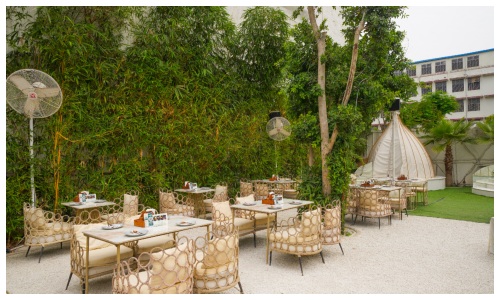
Tikitii, Goa
Ride the festive wave at Tikitii, Goa! Feel the beachside magic come alive with the sound of the waves, twinkling lights, and tropical-chic vibes that scream celebration! Dive into a specially crafted Holi menu, sip on colorful handcrafted cocktails, and groove to the breezy beats as you party by the sea. Whether you’re splashing colors with friends or just soaking in the electric energy, Tikitii promises a Holi bash filled with Flavor and Coastal Charm.

Naturals Thandai Icecream
Lastly, you can end your meal with Naturals’ Thandai Ice Cream. This festive flavour takes inspiration from the ceremonial Thandai - a traditional drink made using milk, nuts, spices and poppy seeds. Synonymous to its name, its purpose is to provide a ‘cooling’ respite from the sweltering sun. Indulge yourself in this flavorful treat on this special occasion.


Culinary world has evolved over the years with more woman taking charge of the kitchen in the male-dominated industry and making a name for themselves. As the industry evolved, there are more woman seen in the industry, be it bartender, mixologist or chefs in the kitchen. All women out there are exploring their career while breaking the norms and ruling themselves despite facing tremendous challenges. This Woman’s Day let’s celebrate the woman in the restaurant sector who are breaking the glass-ceilings and making a mark for themselves.
1. Chef Deepa Awchat, Global Gourmand Awardee, CEO of Goa Portuguesa Group of Restaurants
Born and brought up in Goa, I come from a family of sportsmen. All my brothers were state level football and table tennis players. I was fortunate enough to be trained by my brother who was the NIS coach. Later on, I gave up my Customs and Central Excise career to follow my passion for food and joined my husband Dr. Suhas Awchat in the hospitality business as we already had a restaurant 'The Goa Portuguesa' in Mumbai, and the other restaurants are Diva Maharashtracha, Dakshin Culture Curry, Poie & Pao. I was also a Former MasterChef Judge India (for Hindi language) few years back along with the other judges.
Commenting on the challenges faced, she shares, "With no professional training, the chefs in the restaurant did not welcome me in the kitchen. My next challenge was to standardize the recipes. At that time, our kitchen was dependent on chefs who were from Goa, South India and other parts of Maharashtra. They had their individual styles of cooking the same dish. The recipes changed whenever the chefs went on leave or changed. But once I standardized the recipes, things got easier, and the food taste remained the same. Now, we have our own spice mixes under the brand name “Goa Portuguesa Spice Mixes." The lesson learnt from my setbacks is never to be dependent on any individual’s skills, always have proper SOPs (Standard Operating Procedures)."
“Knowledge is power, so empower yourself with knowledge before entering any field.”

2. Chef Bobby Patel, Co-founder and Culinary Director of Thyme & Whisk and Mad Doh
Bobby enjoyed baking and cooking since she was young, and she have always enjoyed experimenting with flavors. As a mother, her path was not an easy one. Juggling personal and professional lives is challenging, but she never gave up because she was committed to achieving all goals. She owns Thyme & Whisk and Mad Doh and aim to expand them worldwide. Thyme & Whisk has now 17 outlets across India in 7 years and Mad Doh has 4 outlets in a span of just 1.5 years. More women are starting their own catering companies, food trucks, and restaurants, adding a variety of tastes and business strategies to the sector. The idea that women couldn't manage the demands of a professional kitchen was once held. These days, in high end restaurants, female chefs are demonstrating their tenacity, inventiveness, and leadership.
“With power, enthusiasm, and creativity, a woman can lead in any area and belongs wherever she chooses. Continue to learn, remain fearless, and never allow someone to extinguish your passion. Your flavor is needed in the world.”

3. Chef Seefah Ketachaiyo, Chef & Co-Owner, Seeran Hospitality
Chef Seefah’s journey and passion for cooking was nurtured at a young age. She founded her own brand ‘Seefah’ in December 2016 in Mumbai. The biggest challenge was proving skill and hard work matter more than gender. She had to push through biases and earn respect in male-dominated kitchens. She focused on consistency, discipline, and letting food speak for itself. Over time, she built a team where talent, not gender, defines a chef. Mumbai’s diversity has influenced my approach to flavors and ingredients. The city appreciates bold, well-balanced tastes, which aligns with my philosophy—delicious food that’s authentic yet approachable. Her cooking respects tradition while adapting to what people here enjoy. More women are leading kitchens, and there’s greater awareness about fair treatment. The industry still has a long way to go in ensuring equal opportunities.
“You don’t have to do everything alone. A strong team makes all the difference.”

4. Chef Sherry Mehta, Ishaara
My culinary expertise has been presented at prestigious platforms, curating special menus and food festivals at renowned establishments. At thirteen, afternoons were spent in my grandmother’s kitchen, where fragrant spices and fresh produce filled the air. In 2012, while living in Chennai, I saw an opportunity. North Indians craved the flavors of home, so I started Sherry’s Kitchen, a humble catering service that soon became a turning point. In 2015, stepping into a five-star kitchen at the Himachali Food Festival at Marriott Hyderabad changed everything. That first step into a five-star kitchen changed everything. From Home Chef Matters at Taj Lands End in 2016 to competing on Fox Life India’s Grilled in 2017, each challenge shaped me into the chef I am today. Though I didn’t win the show, I won something greater—confidence, resilience, and the belief that my passion had a place in this industry.
Commenting on how industry has changed over the years, Chef Sherry shares, “The food world has transformed. Diners now seek authenticity, valuing regional flavors over fleeting trends. Ingredients tell stories, and meals are more than taste—they are history, culture, and identity. And through my passion I keep these cultural treasures alive and bring them back to modern kitchens, preserving the rich, authentic tastes of pre-partition Punjab. With deep respect for these ancient cuisines, I carry forward my grandmother’s legacy, ensuring that the forgotten flavors of the past continue to inspire chefs and food lovers, keeping us connected to the roots of Indian cuisine.”
Her advice, “Roots shape your craft, but passion defines your journey. Honor traditions, but don’t be afraid to create your own legacy.”

5. Chef Beena Noronha, Executive Chef, Gigi, Lyla and Scarlett House
Her journey into the culinary world wasn’t conventional. After spending 16 years in fashion, she decided to follow her passion for food, diving headfirst into the demanding world of professional kitchens. Training in a two-Michelin-starred restaurant in France was a reality check—it was grueling, but it shaped her into the chef that she is today.
When she started, the industry was far less welcoming to women in leadership roles. Kitchens were—and often still are—male-dominated, with long hours and an unspoken expectation that women wouldn’t last. But over the years, there has been a shift. More women are stepping into the spotlight, leading restaurants, and breaking stereotypes. While challenges remain, the landscape is evolving to be more inclusive.
For Chef Beena, success has meant staying true to her identity, representing her Mangalorean roots through food, and creating spaces where talent—regardless of gender—can thrive. “The kitchen doesn’t define you—your passion, resilience, and craft do. Keep showing up, keep creating, and make your own space at the table.”

6. Chef Tarannum Sehgal, Head Chef - Brands, Bright Hospitality
Every kitchen I've stepped into has shaped me—has taught me resilience, precision, and the beauty of creating something from scratch. From my mother’s kitchen to the Michelin-starred restaurants of France, this journey has been about more than just cooking; it’s been about finding my voice through food.
Switching professions from advertising to culinary came with its own set of challenges—from a lack of culinary schools in India at the time and challenges faced by women in the field. Espressos Anyday is an extension of that—where nostalgia meets technique, and where every dish carries a piece of the places I’ve been, the lessons I’ve learned, and the stories I want to tell.
She says, “I personally follow the "10,000- hour rule" popularized by Malcolm Gladwell. You would likely become highly proficient or even an expert in a skill if practiced dedicatedly for at least 10,000 hours. That's how I learnt my way around a professional kitchen, since I switched my profession, in my thirties.”

7. Chef Megha Kohli, Partner at Mezze Mambo
Chef Megha Kohli’s journey in the culinary world is one of passion, perseverance, and innovation. As the Chef Partner at Mezze Mambo, a Mediterranean restaurant in New Delhi that celebrates the diverse flavors of the Silk Route, Megha brings a wealth of experience spanning fifteen years—an impressive feat for her age. From her early days in the kitchen with her grandmother to being awarded Times Chef of the Year 2020, her story is as rich as the flavors she crafts.
Her formal culinary education began with the prestigious Oberoi STEP program, where she honed her skills at Udaivilas, Udaipur. Selected for the Oberoi Centre for Learning and Development (OCLD), she trained in premier properties like The Trident, Mumbai, and even worked alongside Michelin-starred chef Norbert Niederkofler. However, her desire to break away from hotel kitchens led her to fine dining, where she made her mark as Head Chef at Olive Beach and later as Project Head at Fabrica by Chef Saby. It was at Lavaash by Saby, India’s only Armenian restaurant, that Megha truly cemented her place as a culinary innovator.
Through her career, Megha has championed regional Indian cuisine, sustainable sourcing, and mentoring young chefs, reinforcing that food is more than just technique—it’s emotion, history, and connection. As she continues her culinary evolution, Megha remains a pioneer in redefining modern Indian gastronomy, one plate at a time.

8. Chef Swati Harsha, Head Chef, Hylo
Chef Swati Harsha’s path to the kitchen was far from conventional. After years in advertising and banking, her passion for food took over, leading her to explore India’s culinary heritage and eventually head the kitchen at HyLo. Her cooking is rooted in storytelling, tradition, and a deep love for regional flavors.
The food industry today is shifting towards authenticity and preserving culinary heritage. It’s no longer just about innovation but about honoring traditions, reviving lost recipes, and making them relevant for modern diners.
"For aspiring chefs, food is more than ingredients—it's memories, heritage, and emotion on a plate. Cook from the heart, and the rest will follow."
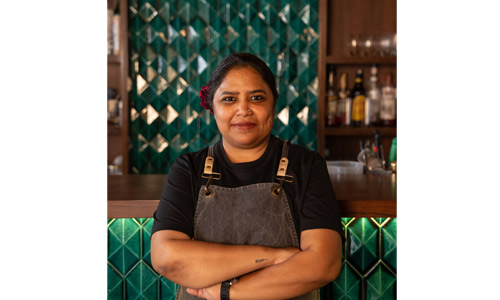
9. Chef Malavika Pratap, Head Chef, The Dimsum Room
Chef Malavika Pratap’s journey has taken her from the rigorous training of the Taj kitchens to leading The Dimsum Room, where she blends tradition with innovation to redefine Mumbai’s dim sum experience. Her passion for East Asian cuisine and dedication to craftsmanship shape her approach to modern dining.
The culinary industry has evolved to embrace sustainability, cultural storytelling, and a deeper appreciation for global influences. It’s no longer just about technique—it’s about the stories behind each dish and the experience it creates.
"Respect tradition, push boundaries, and let your curiosity lead the way."


Founding and scaling a company is never simple, but for women, it is typically filled with even more obstacles—biases, assumptions, and the assumption of doing work and home life simultaneously.
Ever wondered how women are making their mark in the restaurant industry which is a male dominated one? Many women restaurateurs have successfully launched their restaurants marking their success in the industry. Let’s have a look at the women entrepreneurs who made their mark in the restaurant industry. Read to know about their journey, challenges and advice they would like to give for future entrepreneurs.
1. Radhika Dhariwal - Director & Founder of Passcode Hospitality
After completing her degree in psychology in the US and Master’s at NYU, she would often visit speakeasies and cocktail bars. After moving to India, she accidentally entered the F&B industry. Her brother wanted to start a nightclub, but instead, they launched India’s first speakeasy-style cocktail bar, PCO, just around the corner from their house in Delhi.
Thirteen years later, they have 22 restaurants across the country, including brands like Jamun, Pings, Saz, Mister Merchant, and ATM, with locations in Delhi, Mumbai, Goa, Pune, Hyderabad, and Kolkata. During COVID, when all the restaurants were shut, they launched Maya Pistola Agavepura—India's first aged premium agave spirit.
“I would say choose something you are passionate about so that it is easy to stay the course, stay dedicated. Not everything is meant to be easy work hard, stay committed, and you will break through. Be mindful of the world around you, choose your battles wisely, and know when to let things go,” she shared.

2. Minakshi Singh, CEO & Co-Founder, Thirsty Three Hospitality Pvt Ltd
“My journey started when I was in second year of hotel management, did bartending at that time and pursued bartending course after college,” said Singh who is known for brands like Sidecar, Speakeasy, Café Lungta, Bhumi Farms, The Brook and India Bartender week.
Talking about challenges she faced, “I could not do bartending back then as there were hardly any women even though I had done the course. I did beverage marketing, sales, training and much more and I got varied level of exposure which helped me grow as well.”

3. Niketa Sharma, Managing Director, Keish Hospitality
Her journey in the hospitality industry has been a rollercoaster of challenges with learning and incredible growth. Started her career at the age of 22, fresh out of MBA from Les Roches, Switzerland; she is known for creating The Thane Club, Blah, Vivi Italian, South Stories India, Masaledar Thane, and Magna Bar & Kitchen.
From securing the right locations to building a reliable team and ensuring consistency in operations, every aspect of the business required patience and perseverance. Over the years, they have successfully launched 6 restaurants across different locations and are exploring expansion opportunities in Mumbai and other cities.
“To every woman out there dreaming of starting something of her own believes in yourself and take that first step. The road will not be easy, but the challenges you face will only make you stronger. Surround yourself with people who uplift you and understand the value of persistence. The world needs more women in leadership, and your journey, no matter how small it seems today, can inspire the next generation,” she pointed.

4. Mickee (Pratima) Tuljapurkar, Founder La Loca Maria and La Panthera
Opened La Loca Maria as a cozy 25-seater Spanish restaurant with her husband, Chef Manuel Olveira, the restaurant quickly gained popularity. Leading them to expand to a 75-seater within a year, and launched La Panthera, a modern European restaurant with a 100-seater in BKC. She says, “The journey hasn’t been easy, but it has been super rewarding to bring these two restaurants to life. It’s a high-pressure job, especially with all the other challenges like managing staff and keeping an eye on costs,” she mentioned suggesting that for anyone in this industry—regardless of gender—is to prioritize two essential areas: your work and the relationships you build.
Understand your limitations, and don’t hesitate to seek help from those who know more than you. Just because you’re still learning doesn’t mean you’re incapable; you can always find a solution. Learn to say no when necessary and trust your judgment from the start.

5. Nidhi Singh, Co-Founder, Samosa Singh
Samosa Singh is empowering women at every level—be it leadership, operations, production, or innovation. Their production workforce today comprises nearly 35-40% women, which is evidence of their commitment towards creating a gender-diverse workplace.
“This International Women's Day, let us pledge to push for quicker action, break down barriers, and build an industry in which all women can thrive. Because when women thrive, businesses prosper, and society reaps the rewards. Think Big! Let's lead, let's inspire, and let's create a world where every woman entrepreneur can realize her true potential,” pointed Singh.

6. Poornima Somayaji, Founder – Aragma, Pune
Poornima’s journey in the restaurant industry has been deeply personal, driven by a passion for food and storytelling, with a focus on everyday ingredients. She envisioned Aragma as a space where dining becomes an experience.
“Like many women entrepreneurs, I’ve faced challenges—navigating an industry that has traditionally been male-dominated, earning credibility as a first-time restaurateur, and balancing creative vision with business viability. However, each challenge has reinforced my belief that resilience, adaptability, and a strong support system are key to success,” she shared by pointing that the challenges will be real, but the industry needs more women to shape its future, not by fitting in, but by leading in their own way.

7. Lalitha Dutta, Managing Partner, Firewater Neo Kitchen & Bar
“My journey into the culinary world wasn’t a straight path. Growing up, my dad’s pharmaceutical business taught me the dedication, but it was food that truly captivated me. After my MBA and a stint in corporate, I followed my passion,” she said.
With 4 outlets in Hyderabad, the journey has been about self-belief, building a strong team, and proving that hard work and talent can break through any barriers. “Young women aspiring to thrive in any venture: Own your passion with confidence, invest in your skills and connections, and stay curious and adaptable. Success comes from resilience, authenticity, and the courage to challenge norms,” she further added.

8. Arpita Ganesh, Partner and CEO of Catch44 Hospitality
Her journey has been one of resilience, passion, and breaking stereotypes in every industry she has been in as she launched ‘The Bah’ and ‘The South Place under Catch44 Hospitality. Despite the progress made, Arpita has faced challenges, especially in overcoming traditional mindsets and biases, particularly among staff from rural backgrounds. She advocates for a 70/30 female-to-male ratio in frontline roles to further empower women in the industry.
“Believe in yourself, take calculated risks, and push past societal limitations. Women have the potential to lead, innovate, and transform the hospitality industry. With confidence, determination, and a strong support system, they can break barriers and redefine success on their own terms,” commented Arpita.

9. Kareena Bulchandani, Founder, MOKAI
When we started Mokai in Mumbai, had doubts—mainly because it’s on a one-way street, right next to two well-known spots like Veronica’s and Subko. Starting something different without any background in hospitality was tough, Mokai is a café built on unique experiences—nothing is ordinary here. Kareena has played a key role in curating a one-of-a-kind menu featuring over 50 unique beverages, each distinct in flavor yet crafted with unwavering consistency.
“There will always be people who don’t believe in you—let them be. Those same people will be the one eager to work with you once you succeed. This world is full of people who think they know it all but proving them wrong is one of the most rewarding feelings. If you fail the first time, that’s okay. If you have a vision - NOBODY can ever stop, you from achieving it - Just Manifest” she added.

10. Shreya Nayyar, Co-Founder of The Bagh
When Shreya started ‘The Bagh,’ her goal was to build a space that wasn’t just another restaurant or bar, but an experience deeply rooted in a passion for hospitality. Bringing something contemporary yet soulful to Amritsar, a city known for its heritage and culinary legacy, was both thrilling and challenging.
Their latest concept is all set to redefine dining experiences in Amritsar. The new restaurant is a 5,800sqft with globally inspired dishes, indulgent desserts, and a good cocktail programme.
“The world is shifting, and the hospitality industry is no exception. Women are no longer just participants; we are change-makers. If there’s one thing I’ve learned, it’s that waiting for the “right moment” is a myth. The moment you decide to back yourself is the right one. Build fearlessly, learn constantly, and never hesitate to take up the space you deserve,” shared Nayyar.


People are well aware that dining has evolved around the years as everyone wants something unique in their dining experience and why not? Experiential dining in India has been revolutionized from simple meals to immersive culinary journeys that connect diners with tradition, flavors, and storytelling, also driven by evolving consumer preferences and innovation.
Culinary tourism is gaining momentum, positioning India as a key destination for food enthusiasts. The revival of forgotten culinary traditions with a modern twist, combined with curated tasting menus and interactive elements, is reshaping the dining landscape, making experiential dining a defining trend in India’s hospitality industry.
The Market
The full-service restaurant sector is projected to grow at a CAGR of 11.28%, reaching USD 64.72 billion by 2030. The sector has seen a 6% growth in food and beverage output in 2023, driven by increasing consumer demand for authenticity and regional cuisines. Reports indicate that 72% of South Indians prefer traditional dishes over modern fast food, highlighting a shift toward nostalgia-driven dining.
Shift from Traditional dining to immersive experience
There's been a significant shift from traditional dining to a more sophisticated and immersive experience. The focus has moved from just taste to a multi-sensory experience – the ambience, the service, the presentation, and the story behind the food. It’s a healthy balance of the two - the table side theatrics and the overall plunge into the sensory overload at restaurants is tempered by good food and drinks, the quality of which is undeniable.
Commenting on this, Aji Nair, CEO, Mirah Hospitality said, “Rajdhani Thali has been at the forefront of this shift, offering an authentic Rajasthani and Gujarati experience with warm hospitality and regional delicacies served through traditional rituals. As regional cuisine-driven dining gains momentum, Rajdhani continues to set the standard by preserving time-honored recipes, curating festive thalis, and celebrating India’s rich culinary heritage. We continue to align with these trends by preserving heritage flavors, curating festive menus, and enhancing service experiences.”
The Trends
There’s a clear trend towards refined dining experiences that blend global influences with local sensibilities. There is a rise in demand for curated menus, wine pairings, and interactive dining formats. People want to explore new flavours and techniques, but they also appreciate the familiar comforts of Indian hospitality.
The trend is definitely towards authenticity. There's a growing appreciation for regional cuisines, for locally sourced ingredients, and for the stories behind the dishes. People want to connect with their roots or discover new ones, through dining.
The Foreseen Challenges
Maintaining consistency and innovation in a rapidly evolving market is a major challenge. While, staffing issues, rising costs, marketing and brand awareness are also seen as the foreseen challenges in the industry.
Rinka Jha, Founder, Two Gud Sisters said, “You need to invest in continuous training for your staff, and to stay up to date on global culinary trends. You also need to be mindful of sustainability and ethical sourcing. The key is to balance innovation with authenticity, and to create an experience that is both exciting and meaningful.”
“The biggest challenge is keeping that genuine feeling alive as things scale. It's easy to lose the personal touch. To combat that, it's important to focus on training the staff to be hosts, not just servers. Create spaces that encourage conversation and connection. It is about remembering the core of why we are in the hospitality industry,” commented Alay Ingle, Founder, The Corner Room.
Adding his views, Ranjit Bindra, Founder & MD, Bastian Hospitality notes, “When something like experiential dining just becomes a trend that restaurants focus on, the quality of what diners have really come for - the F&B - quickly diminishes. It is important for restaurants to not be swayed by trends alone, but to focus first on their USP’s after which experiential dining should be added, if it makes sense for the cuisine and the restaurant. We are lucky at our restaurants to be able to offer both excellent quality F&B as well as lasting memories when it comes to our programming around our dining and our bar.”
Promoting Dine-ins through Social Media
Social media is a powerful tool for showcasing the artistry and sophistication of modern Indian dining. It allows creating a visual narrative that captures the essence of the dining experience. Social media amplifies brand presence through influencer collaborations, real-time customer reviews, and visually engaging food content.
Pointing out how this benefits restaurants, Timanshu Mokal, Co-Founder, Amelia explains, “It’s where restaurants show off their best, using visuals and influencer buzz to draw crowds. They engage directly with diners, building community and creating excitement with limited time offers. Looking forward, we can expect more immersive tech like AR and more. People sharing their experiences will continue to drive trends, making social media the central hub for how we discover and enjoy dining out.”
The Future
The future is quite certain that with more personalized and immersive dining experiences, with a greater emphasis on technology and sustainability. But the core experiences will always be about creating a memorable and enjoyable culinary journey.

It is quite evident that South Indian Restaurants are quite popular in India and in international markets. With the growing need of comfort food, there is a boom in the restaurant industry especially for the South Indian food internationally. The cuisine of Andhra Pradesh, Karnataka, Kerala, Tamil Nadu, Telangana, and the union territories of Pondicherry and Lakshadweep are all considered to be part of South Indian cuisine. Spices like mustard seeds, curry leaves, tamarind, and asafoetida are frequently used in South Indian cuisine; the spice level may differ as per the consumer preferences.
With South Indian restaurants thriving, the full-service restaurant market in India is expected to grow to USD 64.72 billion by 2030. The brands are expanding through various models which are Franchising Model where many brands, like have expanded through franchising to minimize operational risks, targeting areas with high Indian and South Asian populations, such as the US, UK, UAE, Canada, Australia, Singapore and Southeast Asia, adapting to local markets where they can tweak the menus slightly to cater to local tastes while maintaining authenticity (e.g., Jain-friendly or vegan versions of dishes), tech & delivery expansion wherein brands can partner with food delivery platforms to reach a broader customer base and premium positioning & branding in which some brands are positioning South Indian food as a premium, healthy dining option rather than just street food.
Trends & Innovations in the International Restaurant Industry
While Chef Kishore Kumar Neethinathan, Executive Chef, Radisson Blu Hotel and Suites GRT Chennai & Ministry of Chutneys added his views on trends in the international restaurant industry.
• Plant-Based & Vegan-Friendly Menus – Many global consumers prefer plant-based food. South Indian cuisine already has many vegetarian options that can be marketed effectively.
• AI & Automation in Kitchens – Brands are using AI-powered kitchen robots for dosa making, reducing labor dependency.
• Sustainable & Eco-Friendly Packaging – Growing demand for biodegradable and compostable food packaging.
• Ghost Kitchens & Virtual Brands – Cloud kitchens allow brands to expand without major investment in dine-in spaces.
• Tech-Enabled Customer Experience – Self-ordering kiosks, AI-powered recommendations, and blockchain for food traceability.
Challenges in International Expansion & Solutions
1. Ingredient Sourcing
Challenge: Finding authentic ingredients abroad can be difficult, impacting food taste and quality.
Solution: Partner with local suppliers, import key ingredients, or set up centralized production hubs.
2. Cultural & Dietary Preferences
Challenge: Some global consumers are unfamiliar with fermented foods like dosa or idli, and spice levels may need adjustment.
Solution: Educate through storytelling, food tastings, and clear menu explanations. Offer milder spice variations without compromising authenticity.
3. High Operating Costs
Challenge: International markets have high labor and rental costs.
Solution: Lean operations with smaller, tech-enabled kitchens, cloud kitchen models, or co-located food court outlets.
4. Regulatory & Compliance Issues
Challenge: Each country has different food regulations, tax structures, and labor laws.
Solution: Work with local consultants and legal experts, use franchising or joint ventures for easier market entry.
5. Brand Awareness & Competition
Challenge: Competing against well-established Indian and global brands.
Solution: Differentiation through unique dishes, storytelling, digital marketing, and collaborations with influencers.
“South Indian cuisine may be too spicy or different from local tastes, requiring adaptations to menus. Not all guests are familiar with Indian flavors and spice level, so there is a strong reason to tweak the menu and the recipe to adapt the local taste buds. To overcome the challenges, brands should have strategic partners within each country who understand the local regulation rules and laws, which streamline the overall operations,” notes Anand Krishnan, Director, Namma Veedu Vasanta Bhavan.
Anand adds, “VB WORLD, the new avatar of Namma Veedu Vasanta Bhavan, offers a unique culinary experience with the combination of international and pan-asian cuisines. A lot of countries do have an own rules and regulation for the labor visa, it to overcome we must keep average of 30 to 40 employees as a buffer for the upcoming projects,”
“We have successfully expanded our footprint by bringing the rich legacy of Dindigul-style biryani and Tamil Nadu’s culinary heritage to international markets. While India remains a priority, we are strategically expanding in the Middle East & Sri Lanka. Our growth model focuses purely on company-owned outlets to scale efficiently. Our vision is to globalize South Indian cuisine while preserving authenticity. The future lies in hybrid dining models, tech-driven experiences, and sustainable expansion,” shares Nagasamy Dhanabalan, Managing Director, Dindigul Thalappakatti Restaurant
There are various challenges in manpower for international expansion which includes:
1. Shortage of Skilled Indian Chefs- South Indian cuisine requires specialized skills (Dosa making, Sambhar preparation, Tiffin dishes). Finding chefs abroad who can replicate the authentic taste is a challenge.
2. High Labor Costs in International Markets- Countries like the US, UK, Canada, and Australia have strict labor laws and high wages, increasing operational costs.
3. Work Visa & Immigration Restrictions- Many countries have strict regulations on hiring foreign workers, making it difficult to bring chefs from India.
4. Cultural & Language Barriers- Hiring local staff may lead to communication gaps and difficulty in training them to prepare traditional dishes correctly.
5. Employee Retention Issues- High turnover rates in the restaurant industry can lead to inconsistent service and additional training costs.
How to Compete with Other Brands in International Markets
Nagasamy discussed about the competition with other brands in the international markets which includes:
1. Emphasize Health & Authenticity – South Indian food has a natural health advantage (fermented foods, low oil, and gluten-free options). Positioning it as a wellness choice can attract a wider audience.
2. Strong Digital & Social Media Presence – Using Instagram, YouTube, and TikTok to showcase food-making videos, traditional recipes, and customer experiences.
3. Strategic Partnerships – Collaborating with local grocery stores, Indian cultural events, and food bloggers to build brand presence.
4. Menu Innovation – Creating fusion dishes that blend South Indian flavors with local tastes (e.g., dosa tacos, idli burgers).
5. Experiential Dining – Offering unique dining experiences like live dosa counters, self-ordering kiosks, and interactive storytelling about South Indian cuisine.
Future in International Markets
South Indian restaurant brands are scaling internationally, driven by the global demand for regional Indian cuisines. The future is certain that the market is expected to grow internationally with more brands competing globally and expanding in the untapped markets.

Born in Vadodara in 2018, Thyme & Whisk has blossomed into a beloved dining destination with 16 locations. Brainchild of Chef Bobby Patel, Tapan Patel, Parth Gheewala & Dharti Gheewala, the brand is captivating diners with its innovative approach and unwavering commitment to quality.
Fueled by this vision, Thyme & Whisk has ambitious expansion plans. The brand aims to significantly increase its presence across India, with a target of 50+ outlets in the next 5-7 years. This strategic expansion will see Thyme & Whisk enter new markets, bringing its unique culinary vision to major cities like Delhi, Mumbai, Bangalore, Chennai, and beyond. In an Exclusive interview with RestaurantIndia, Bobby Patel and Parth Gheewala, co-founders at Thyme and Whisk and Mad Doh shares about their journey, expansion plans, vegetarian dining and much more. Excerpts:
How it began?
Chef Bobby is an electrical engineer, worked in Larsen & Tourbo for 5 years. “Since childhood, I loved cooking and baking and always loved playing around flavours. When we had to go to vegetarian restaurants in India. It was pretty basic and there was no global cuisine being served by restaurants. So, we came up with the idea of starting something on our own where we serve different varieties of veg food,” he shared
Creating experiential dining
The inspiration comes from my passion which is now my profession. Along with fine dining, we make that the creativity is top-notch in our brands. We have finger millet ragi flour pizza, it’s all about creating experiential dining. The first restaurant was launched in 2018 in Vadodara, Gujarat. We have a vast variety of vegetarian menu and a great selection of desserts as well. We have Cookies, Dubai Kunafa among others.
USP of the Brand
Indians are very well-traveled these days. Fresh hand-rolled pastas are made every day in our restaurants. We are serving easily digestible pizzas. In Mad-Doh, we have Neapolitan pizzas and thin-crust as well. We have vegan, jain, salads and healthy menu and it can be customized as per consumer preferences. The menu is common throughout all the outlets. The innovations are added in all the outlets.
Overcoming Challenges
The biggest challenge was acceptance by the consumers. We educated the customers about the dishes, and we got a great response. The prices were little higher like for eg, 800 for 2 people or depends on what you order. Since, we cater to various cuisines; we make sure that we prepare in-house sauces for the food we prepare. To get all the good quality ingredients was one of the biggest challenges we faced in the initial stages.
Future of vegetarian dining
People are health-conscious these days and they are eager to know what’s in their food. The vegetarian and vegan dining are going to boom in India in the coming years. Lots of chefs are focusing on vegan dining; people want to have vegan or vegetarian in a luxurious place. We also ensure that food wastage is less. In Mad Doh, we have smaller plates, while in Thyme and whisk we serve the right portion to the consumers.
Equal Responsibility for all the partners
Bobby looks into culinary section and innovations, Tapan looks after staff management, Parth looks into expansion plans, while Dharti looks after the interiors for all the outlets. “We ensure all the ideas are discussed well before the execution,” shares Bobby.
Expansion plans
We have 17 outlets for Thyme and Whisk, 1 outlet for Mad Doh. We want to expand in all cities and have international expansion plans as well. This year, we are opening 4 cloud kitchen brands focused on specific segment each– burgers, biryanis, Indo-chinese, shakes and juices respectively. We will grow in company outlets more and franchise as well. In Thyme and Whisk, its 90% dine-ins and in Mad Doh, its 75% dine-ins.
People are coming up with regional cuisines, millet-based recipes, AI driven menu will be on rise, technology advancement and much more.
Message for Women Restaurateurs:
‘Have the clear goal and passion, build your own niche and believe in yourself rather than having self-doubts.’

Extending its reach to Chennai, the highly anticipated conference and awards show, "Restaurant India Awards Kerala and Tamil Nadu Edition," hosted its first edition on Leadership Series on February 12, 2024, at The Westin, Chennai. The conference witnessed a great footfall from the restaurant and F&B fraternity and was graced by the presence of top restaurateurs, policy makers, food service professionals, chefs and consultants from the region.
Preetima Bharadwaj, CEO, Franchise India gave the opening remarks which was followed by the panel discussions; ‘How Legacy Restaurants are Fuelling Innovation Yet Maintaining Consistency’ and ‘C-Suite insights.’
In the legacy session, Dindigul Ponram Biriyani and Namma Veedu Vasanta Bhavan's Director participated along with Chef Nikhil Nagpal, Chef Culinaire, Avartana, ITC Grand Cholaas the moderator.
Anand Krishnan, Director, Namma Veedu Vasanta Bhavan emphasized on how the new age generation isn't willing to pursue the family business or restaurants as their career. He says, "It becomes challenging to maintain the age-old brand name in the industry. For the first-generation entrepreneurs in the restaurant sector, it will not be challenging than the legacy brands that are existing in the industry since decades.”
Elaborating further, Mani Ram Selvaraj, Fourth-Generation Entrepreneur, Ponram Biriyani Restaurant shares, “For us, it's like we have been growing more with each generation. It has always been more of word of mouth for us rather than online marketing."
Highlighting on how they maintain the authenticity, he adds, “We source the local ingredients from different places to ensure that the spice level remains the same in each location and in all the outlets as we believe that spices play an important role in the authentic cuisine."
The last session was focused on "Food Entrepreneurs/CEO's/Chefs highlight the Industry, Impact, Investments, Innovation, and intent for Building a Thriving Restaurant Business." Tarun Mahadevan, Managing Director, Advantage Foods moderated the session.
Amrut Mehta, Director, The Little Italy Group spoke about the evolution of Italian food in India and how they are focusing on being in the vegetarian category while representing their brands. He adds, “We have many Indianised versions of Italian food. We innovate as per the trends. Although, there is a craze for healthy option these days, so we have a menu for that as well.”
"We have brands in different formats. All of them are different from one another. For us, what's important in restaurants is the size, space and staffing, as we believe that these three things play major role in shaping up the restaurant as a whole,” mentions Shriram Rajendran, Chef and CEO, The Table.
Adding further, Shriram said, “The sale of vegan options is less for us. We do have gluten free icecreams and what we have seen is that 97 percent of compound chocolates are used in India for desserts and icecreams. People are not able to differentiate between the compound one and the original taste of chocolate. As the compound one is cheaper, everyone prefers that.”
The Awards Ceremony
Restaurant India hosted Restaurant India Awards- Kerala and Chennai edition in the evening that saw many notable restaurant owners, celebrities and chefs including M Mahadevan, Chairman & MD, Advantage Foods, Chef Nikhil Nagpal, ITC Grand Chola, Master Chef Tamil Judge Rakesh Raghunathan and Bigboss Tamil Runner-up Soundariya Nanjundan, amongst others joining for the celebration.
Copyright © 2009 - 2025 Restaurant India.





